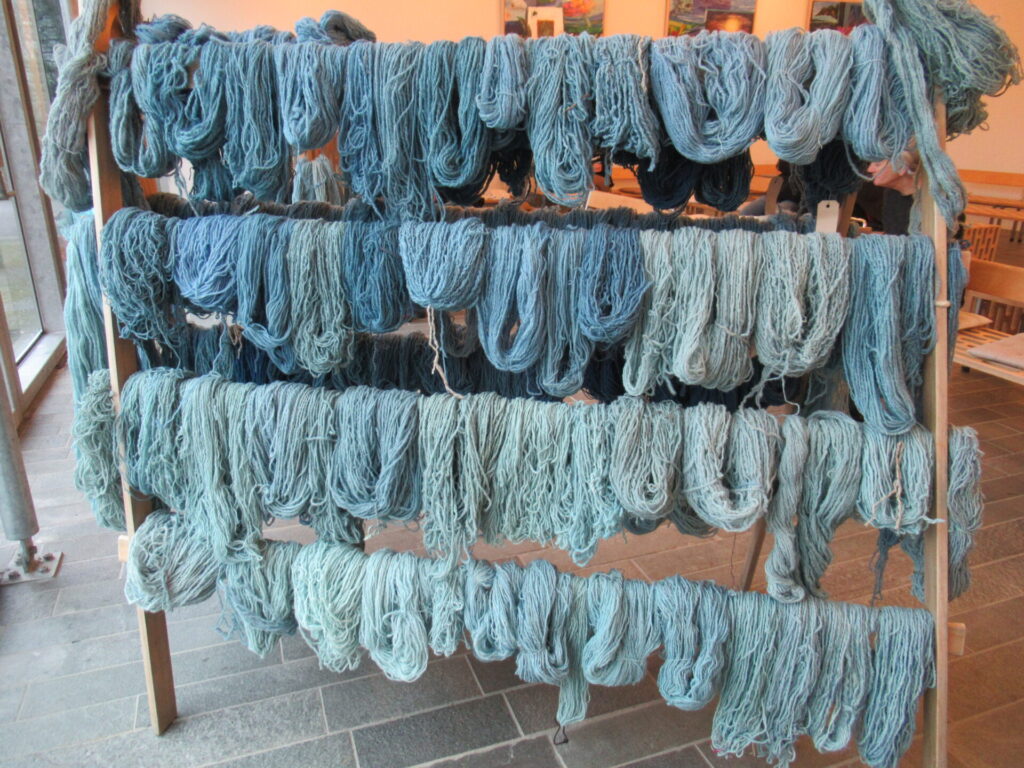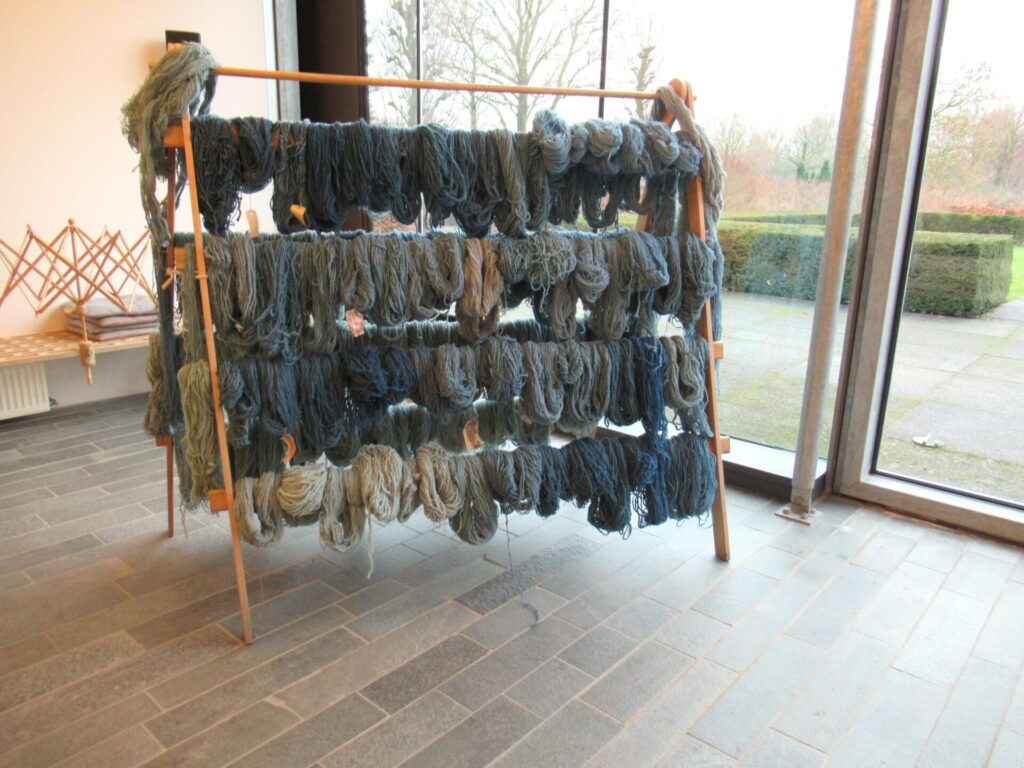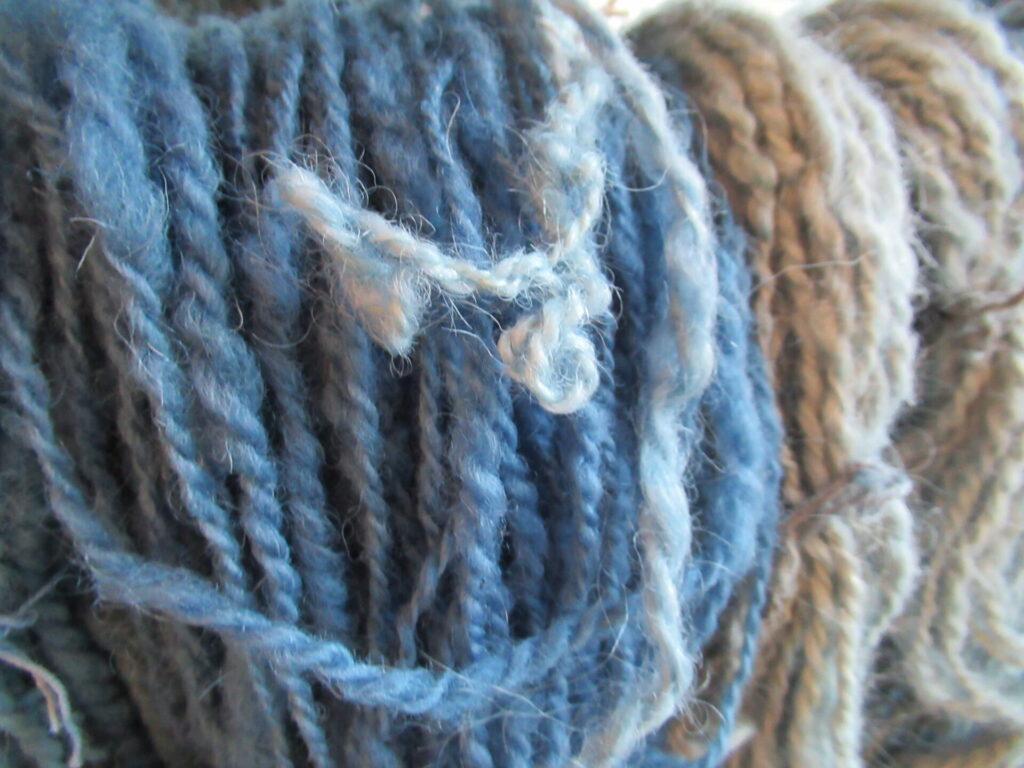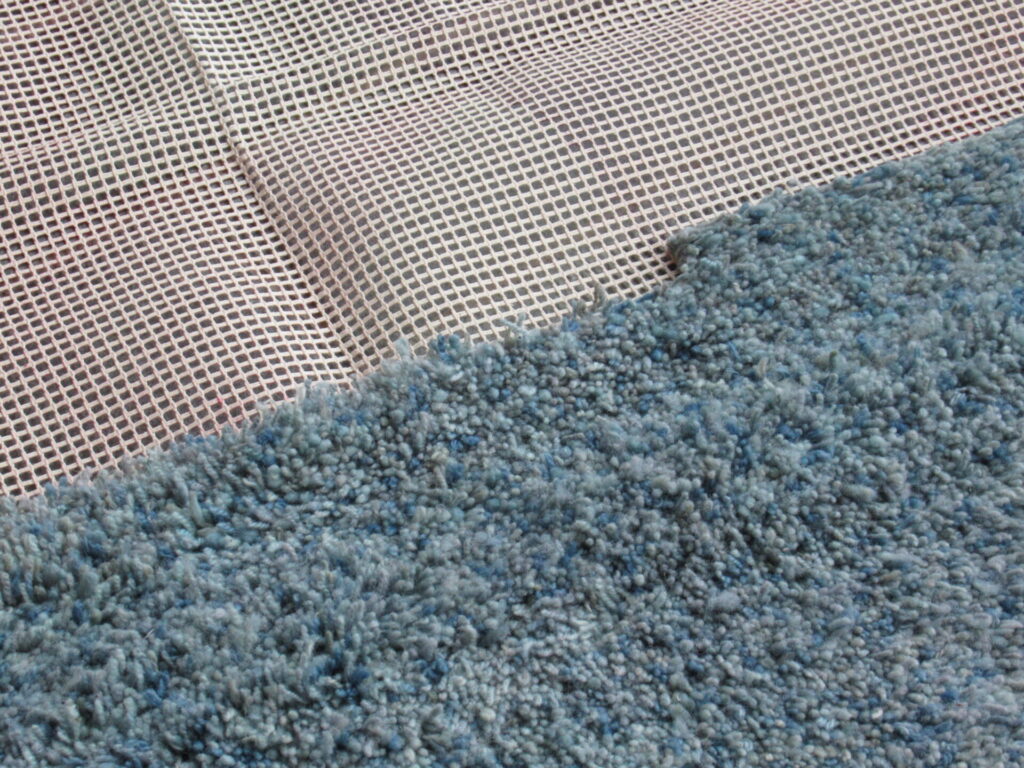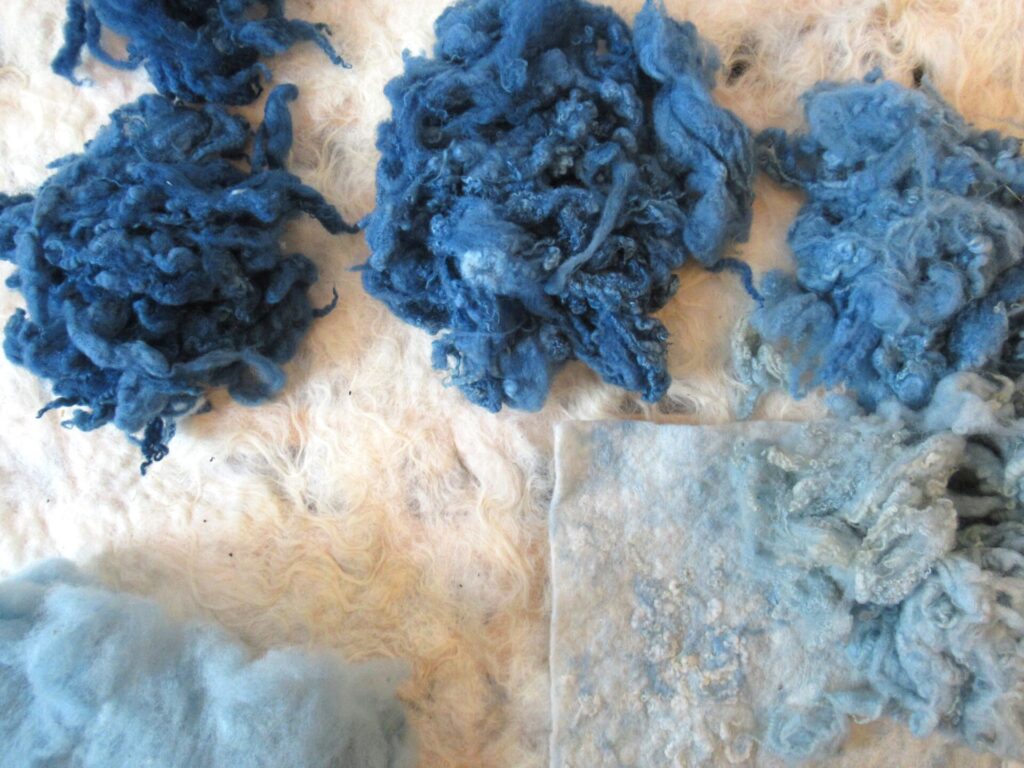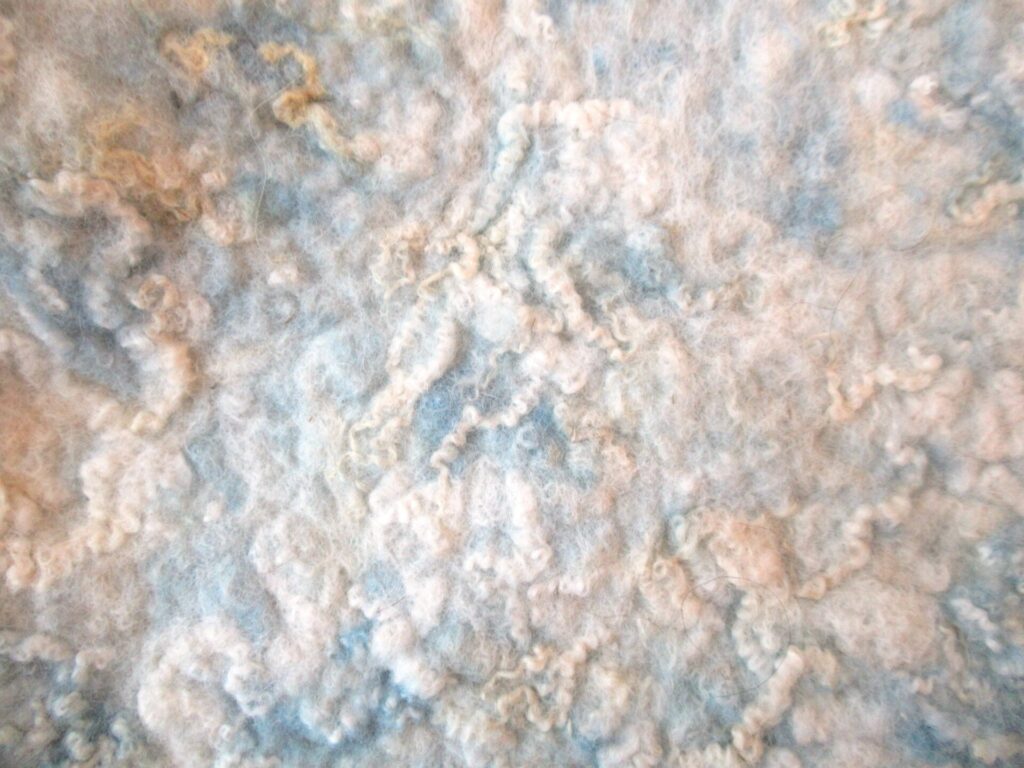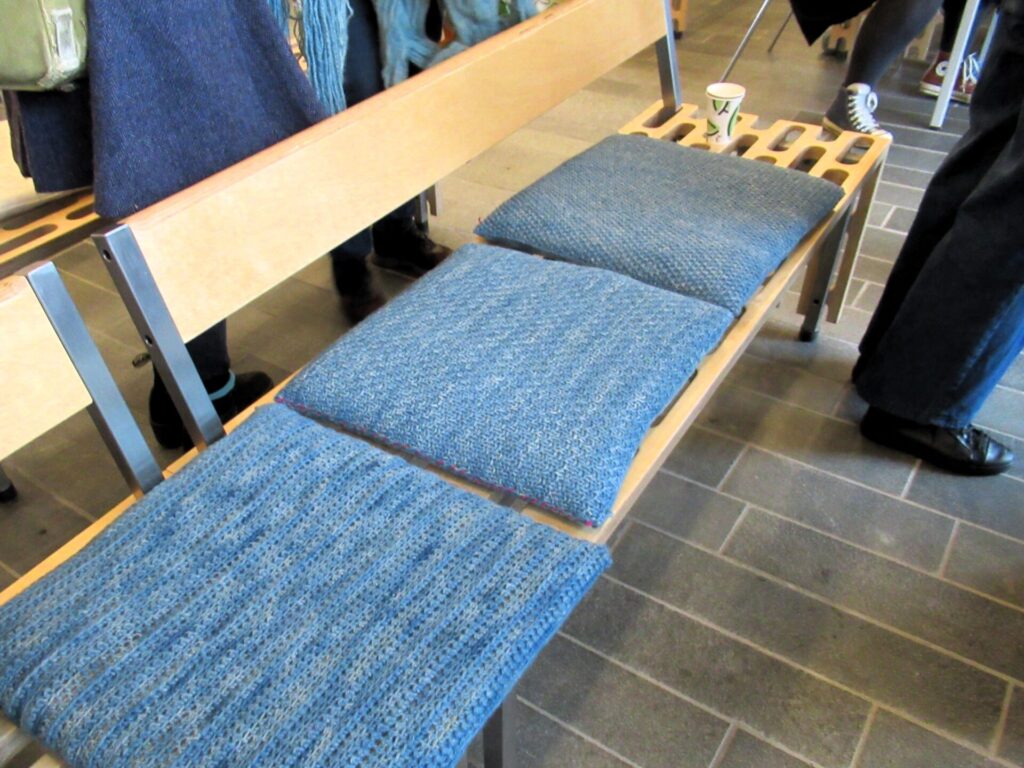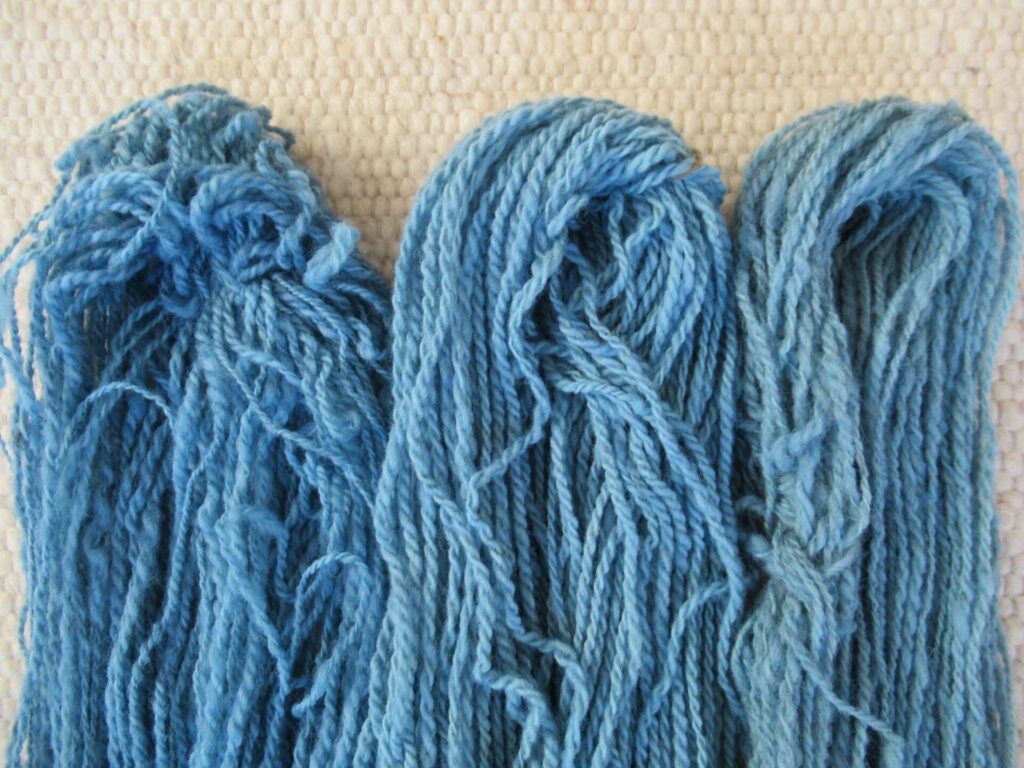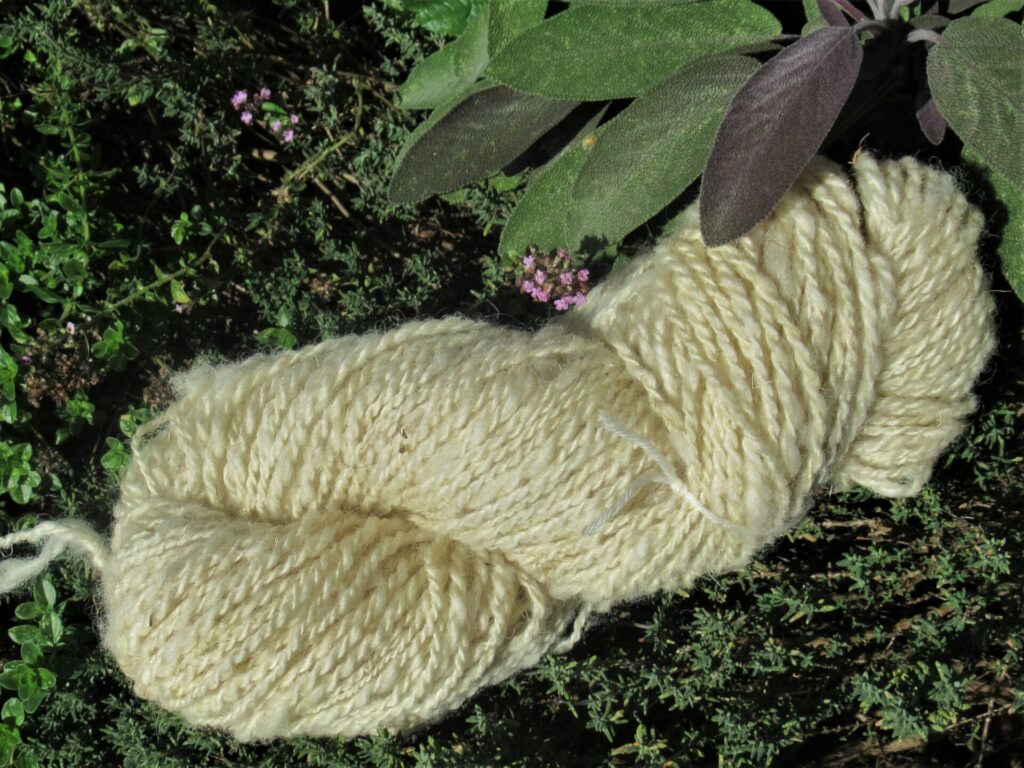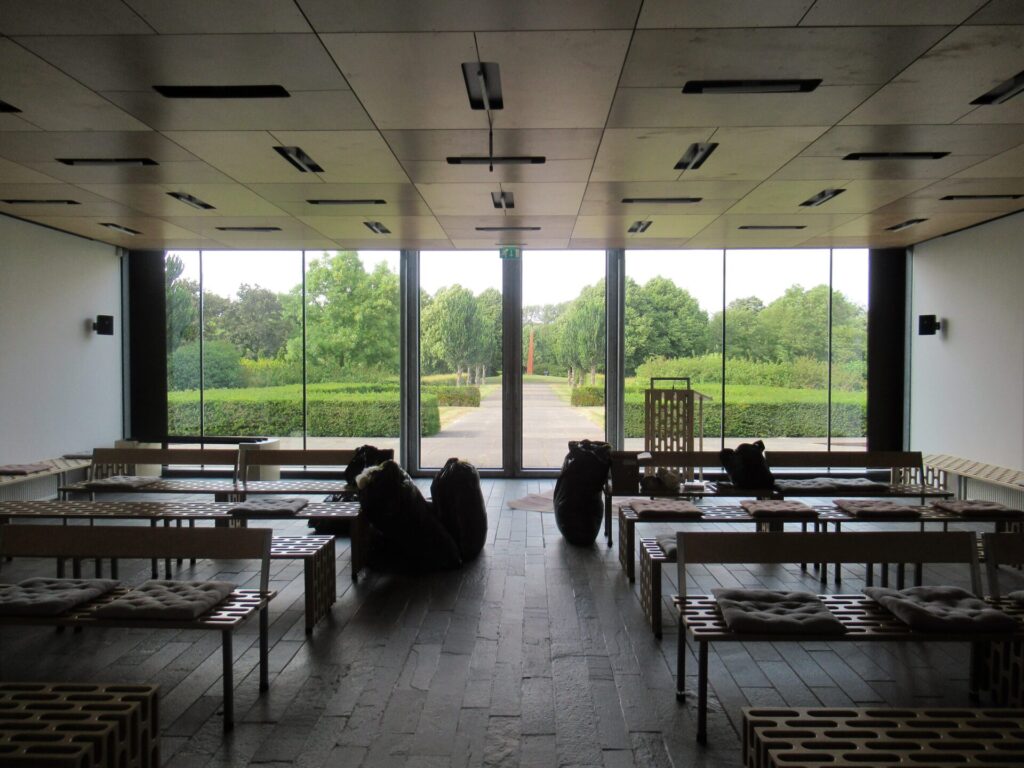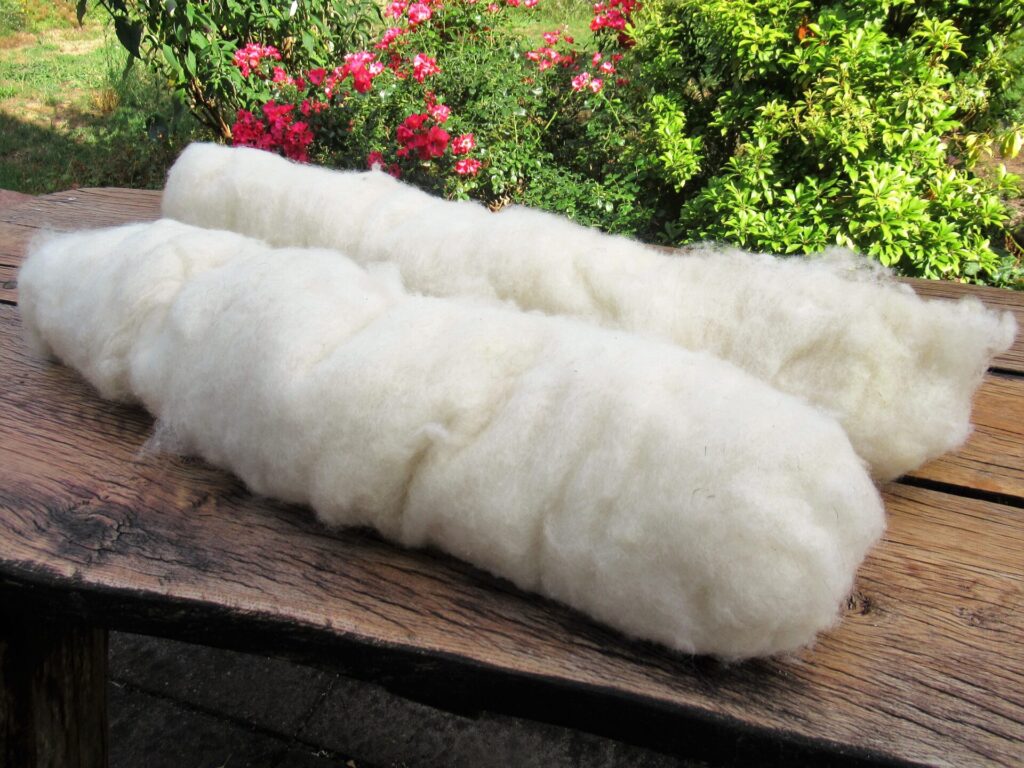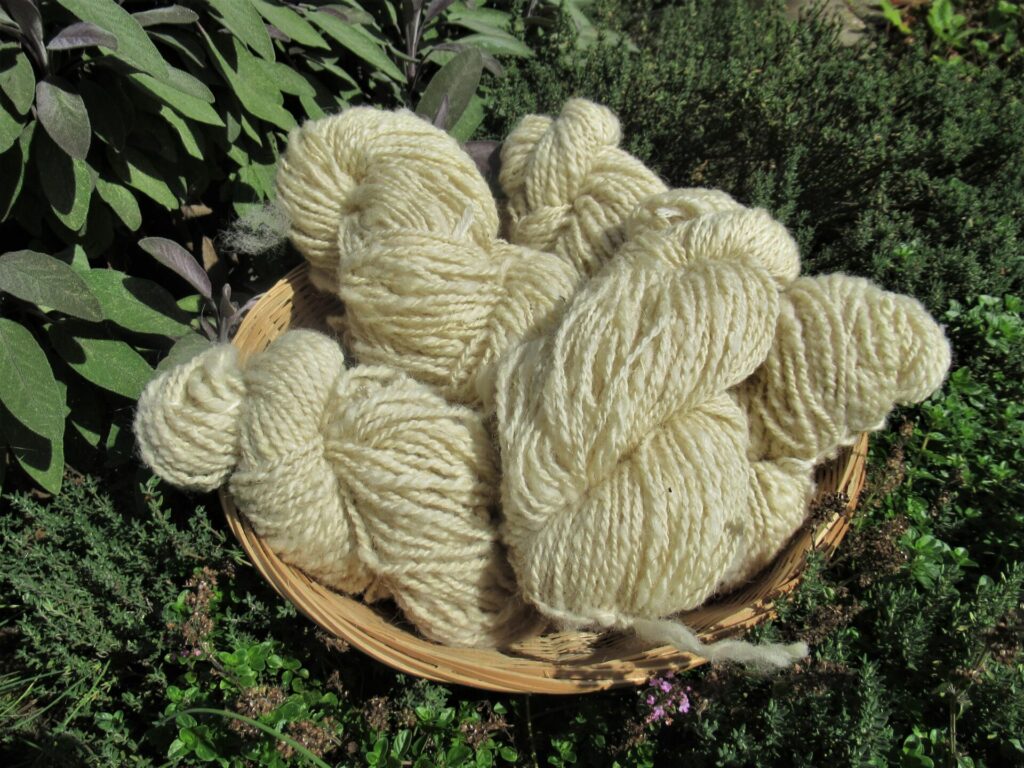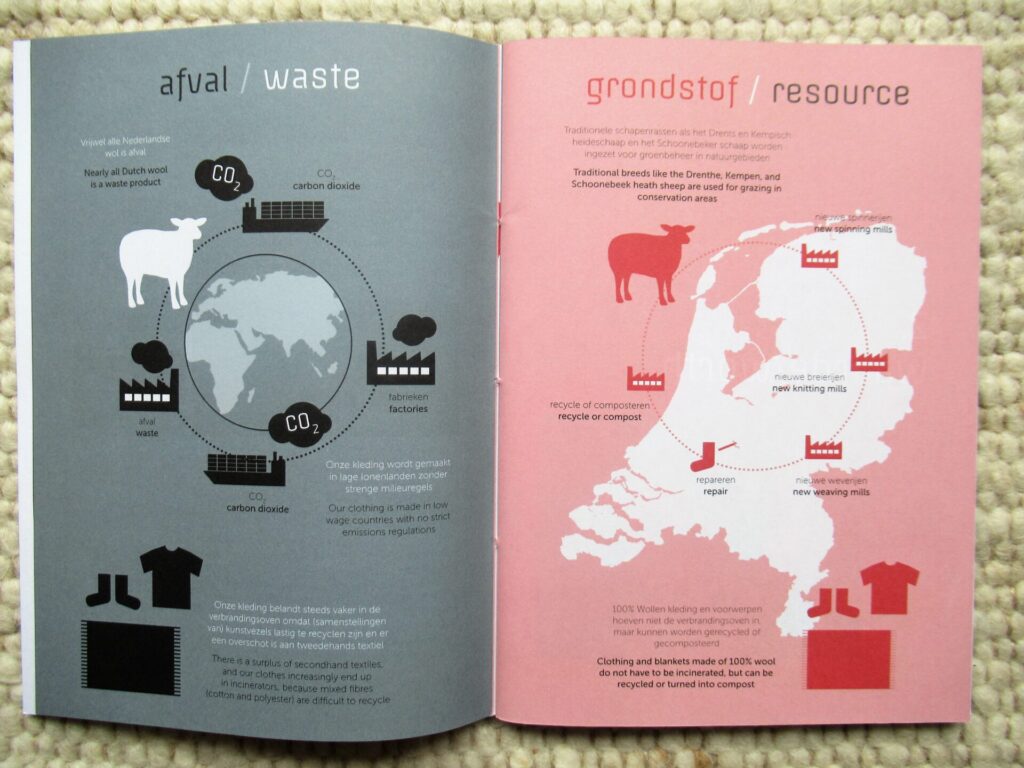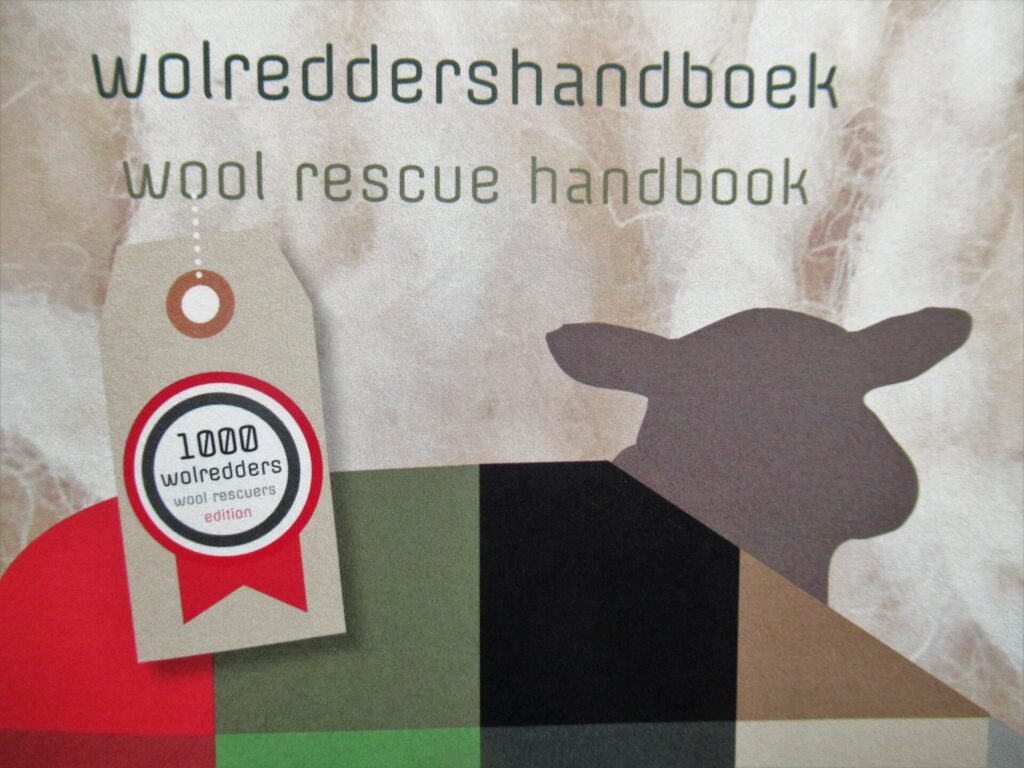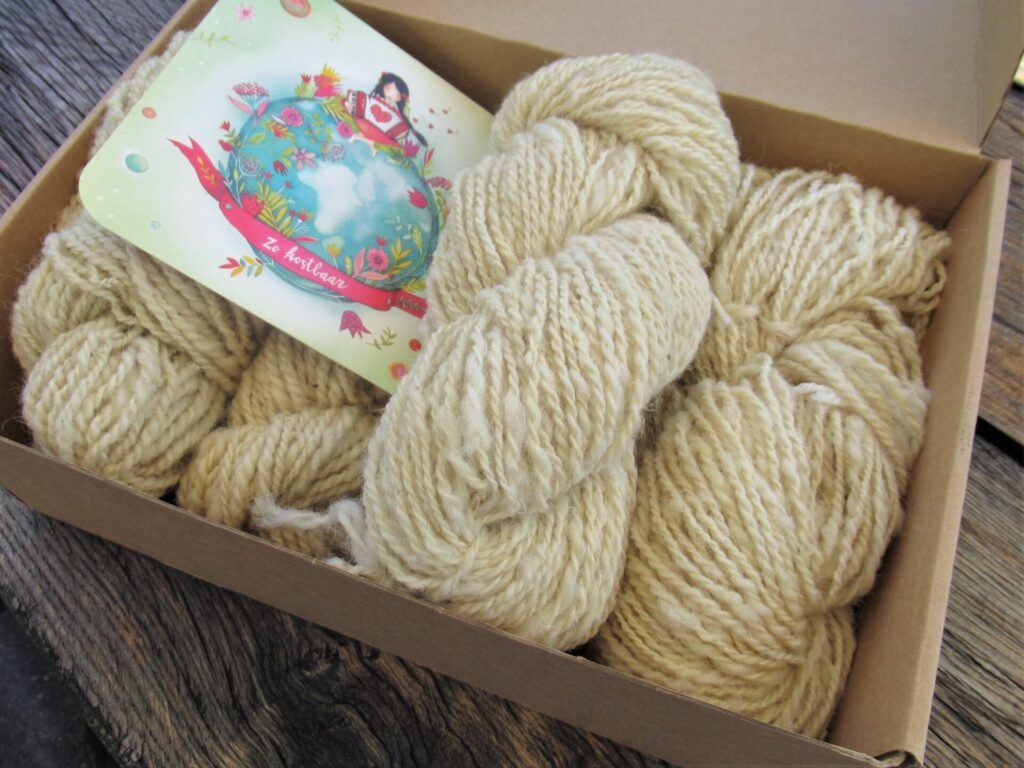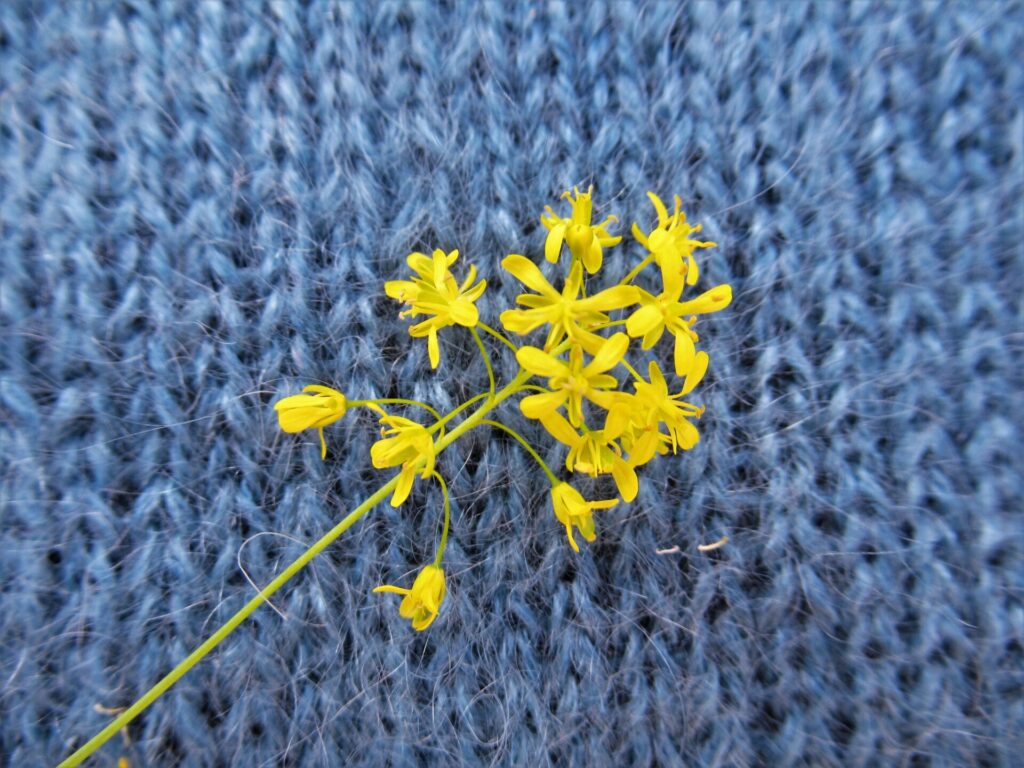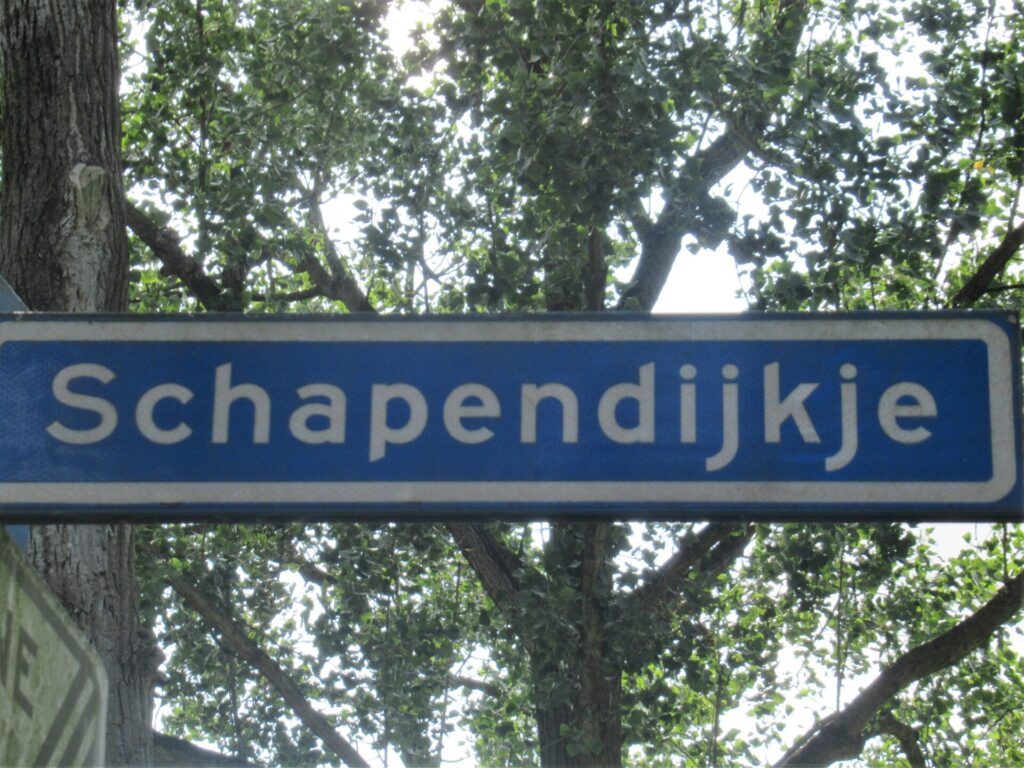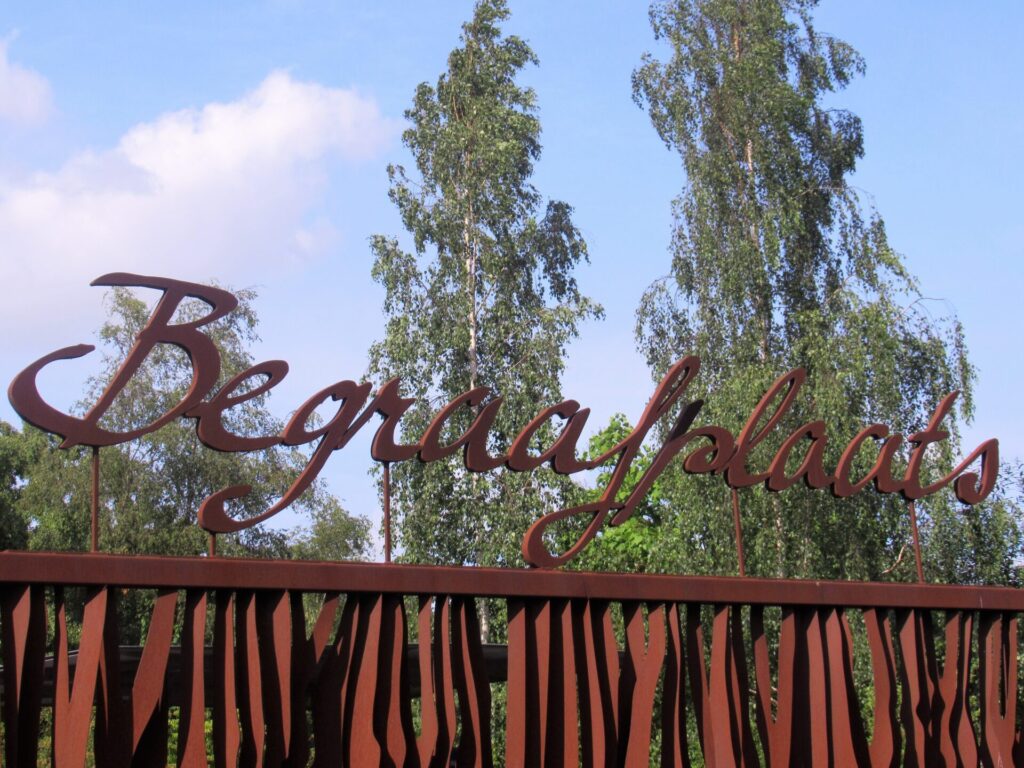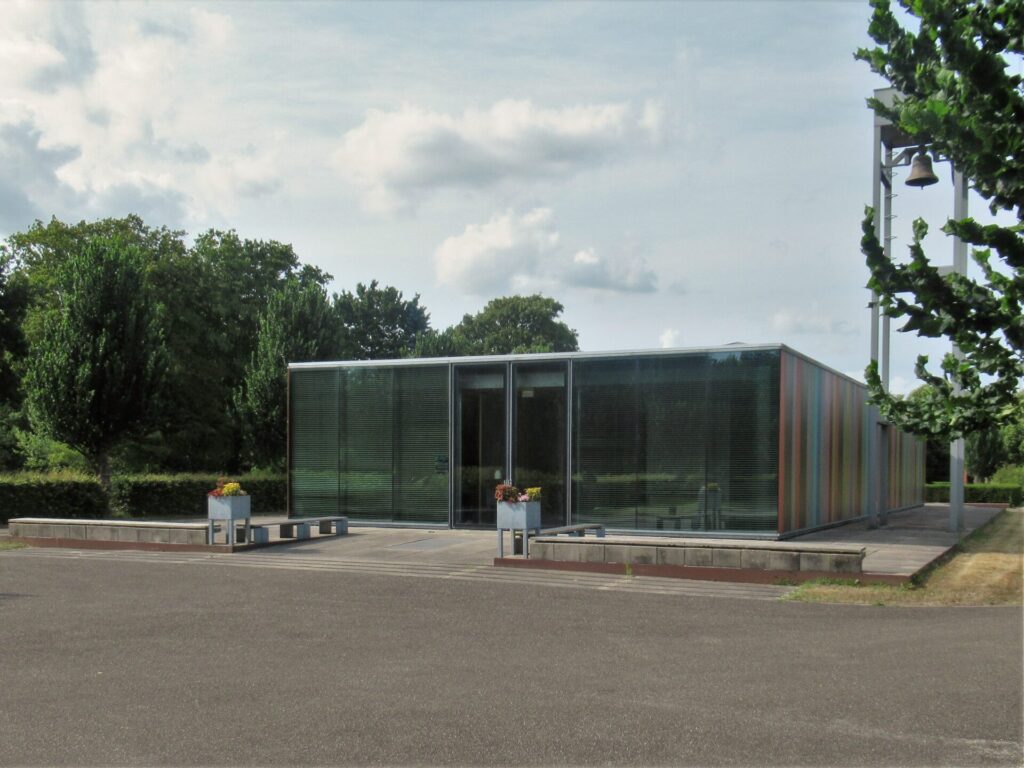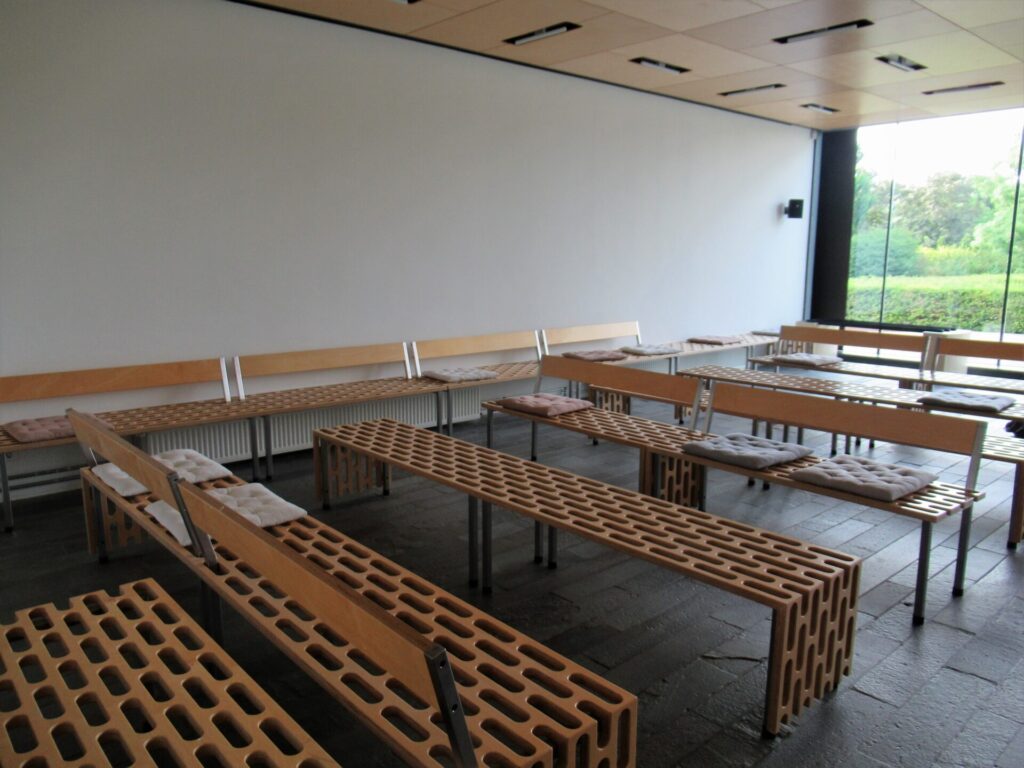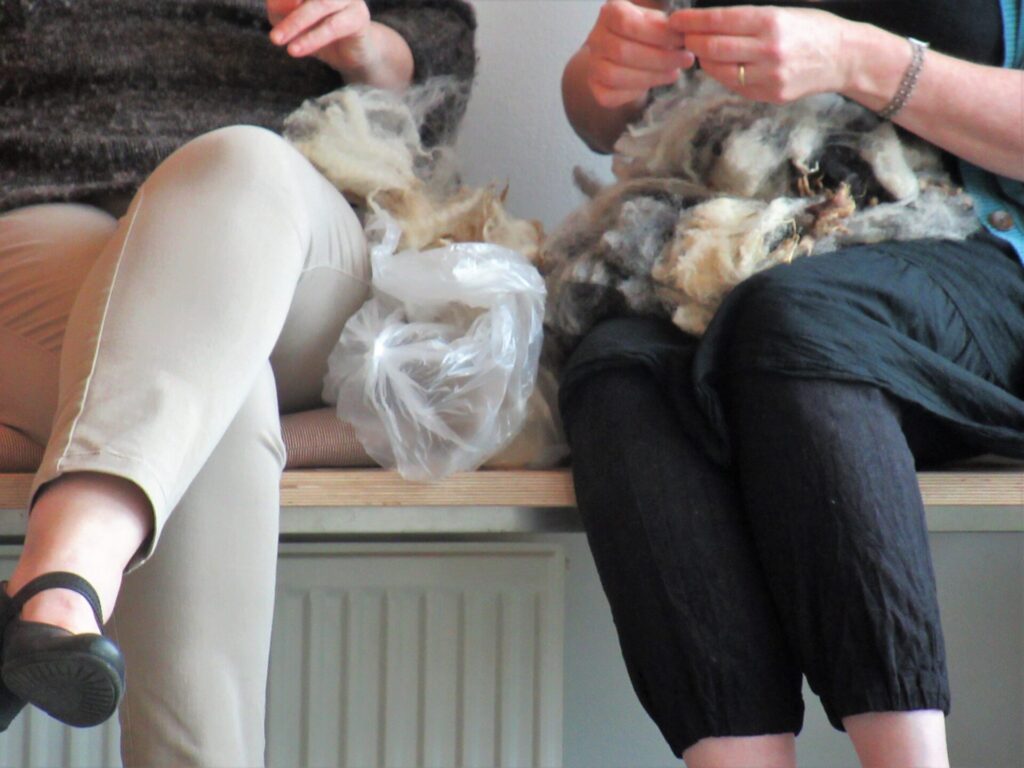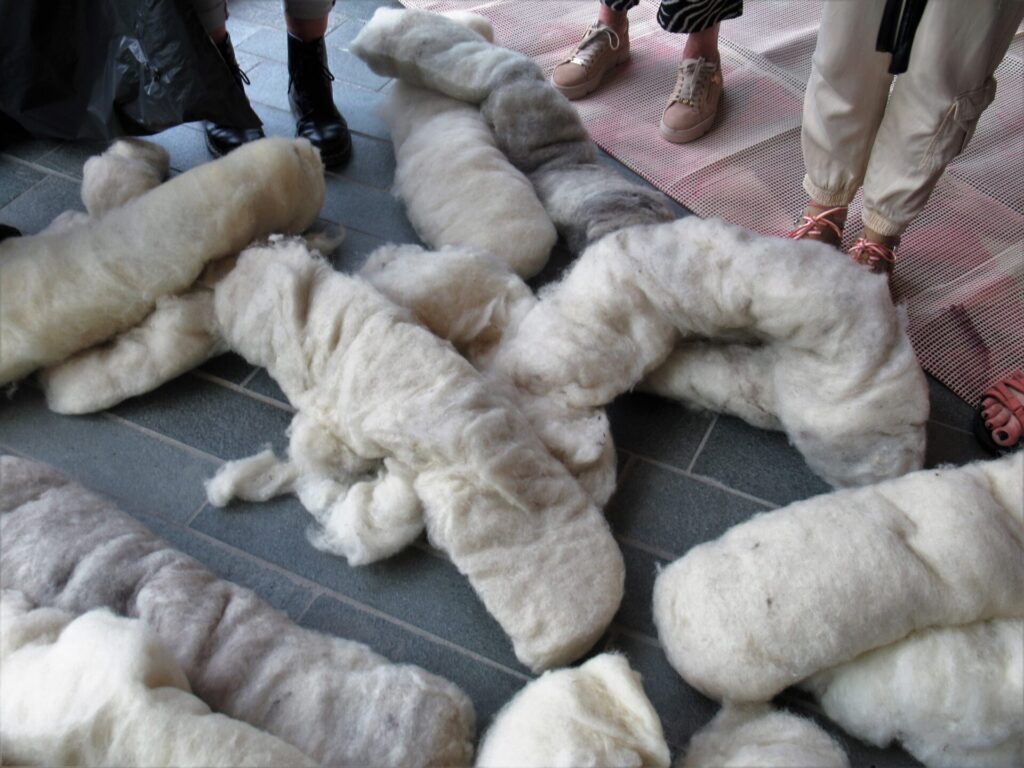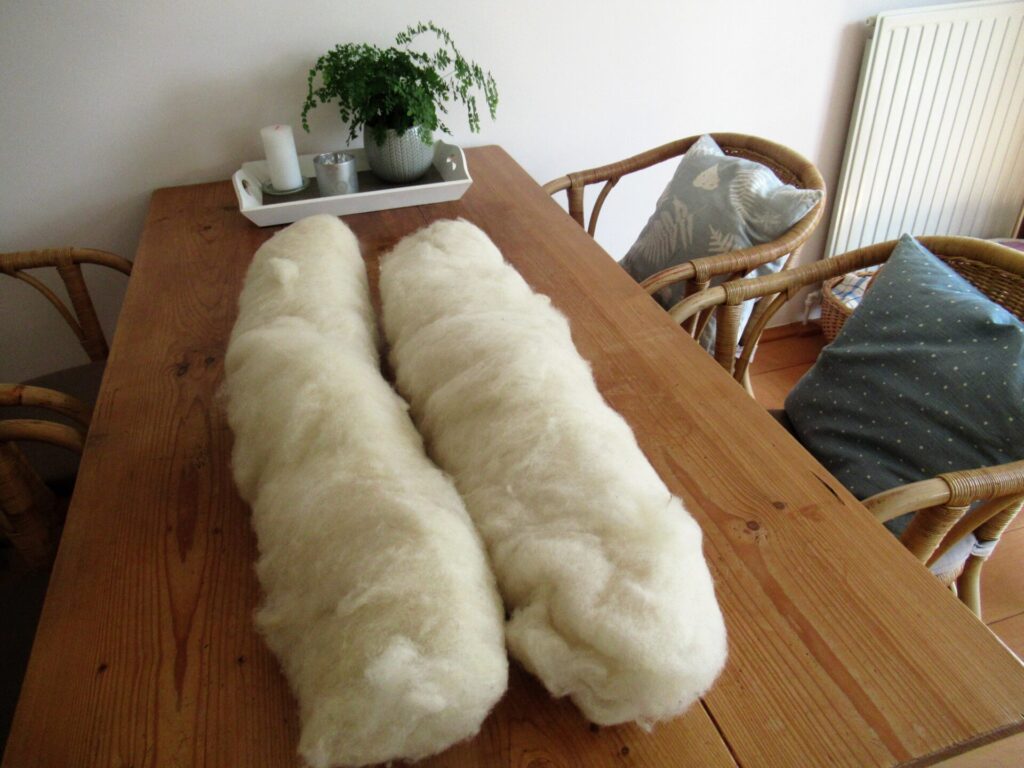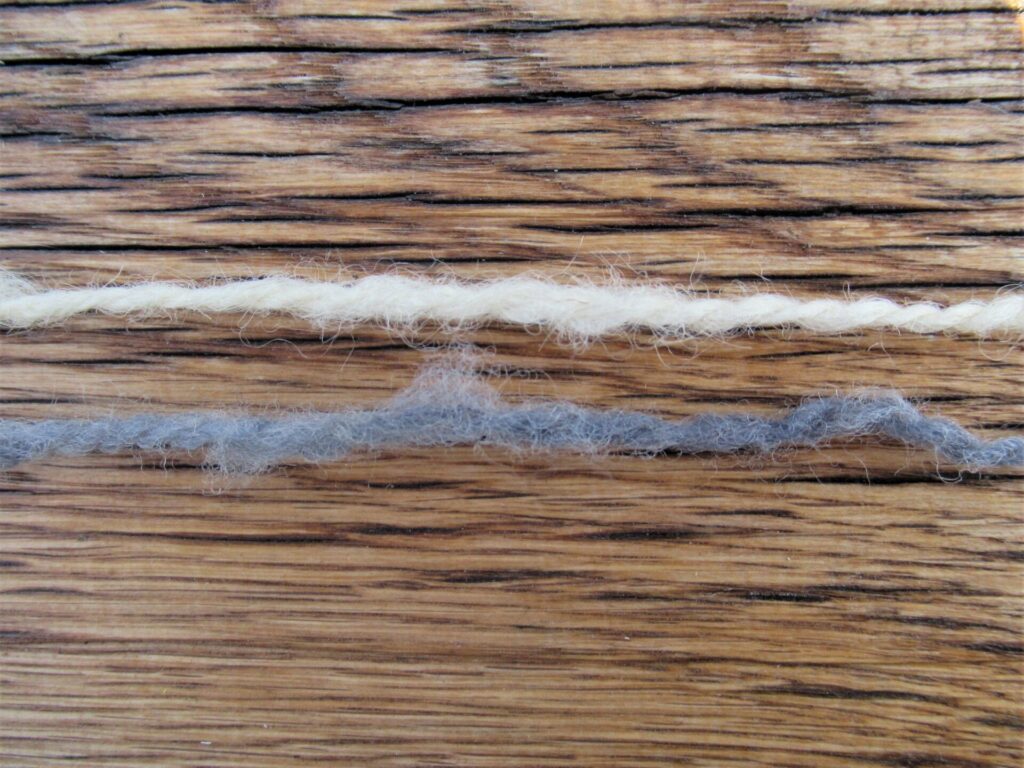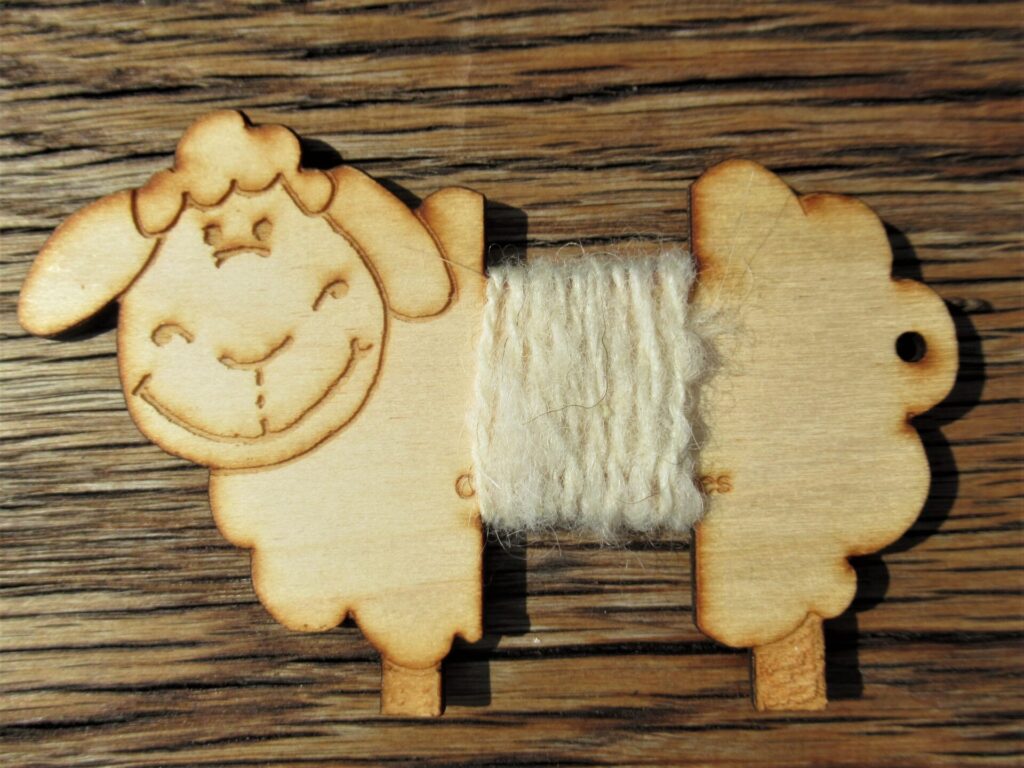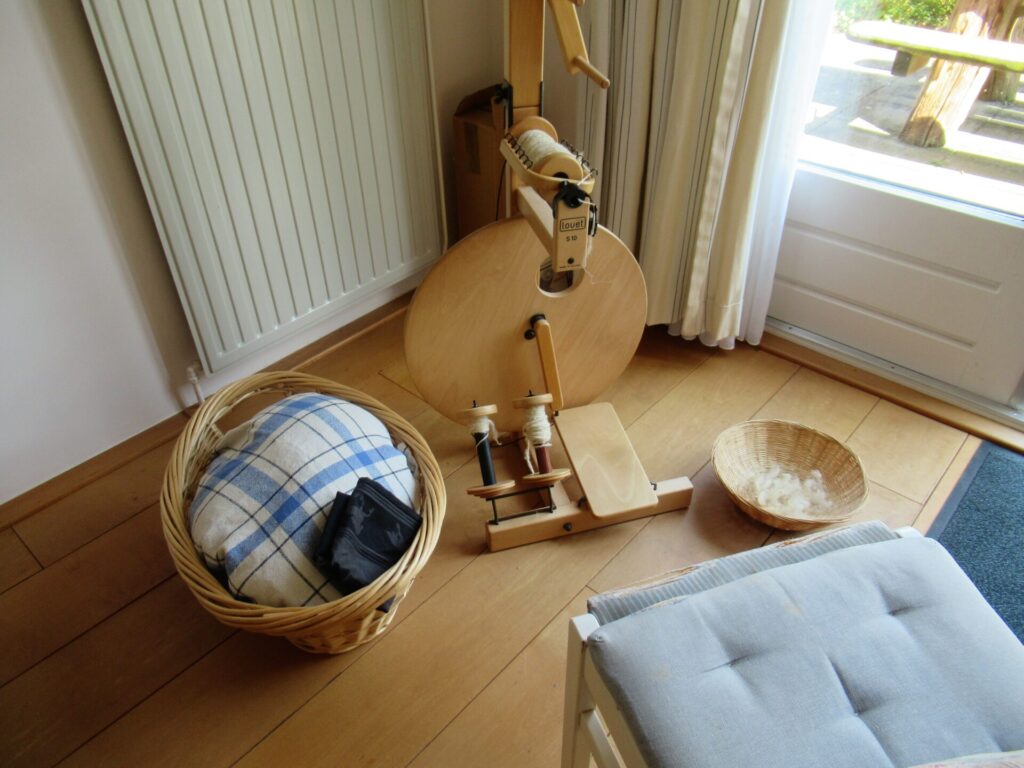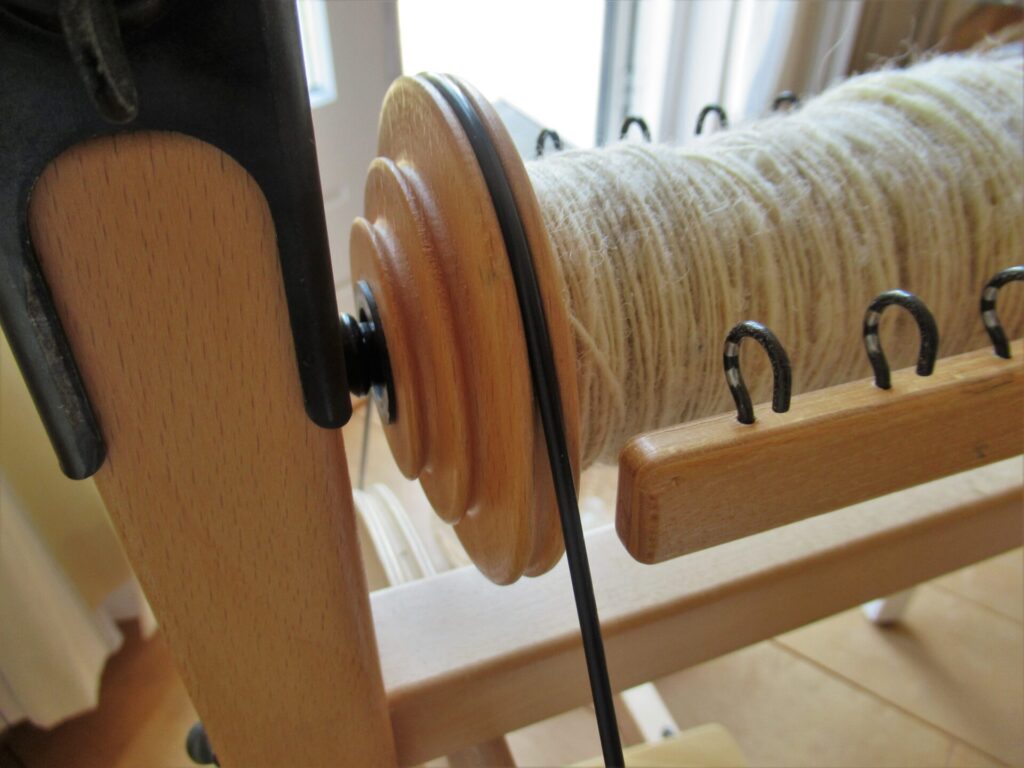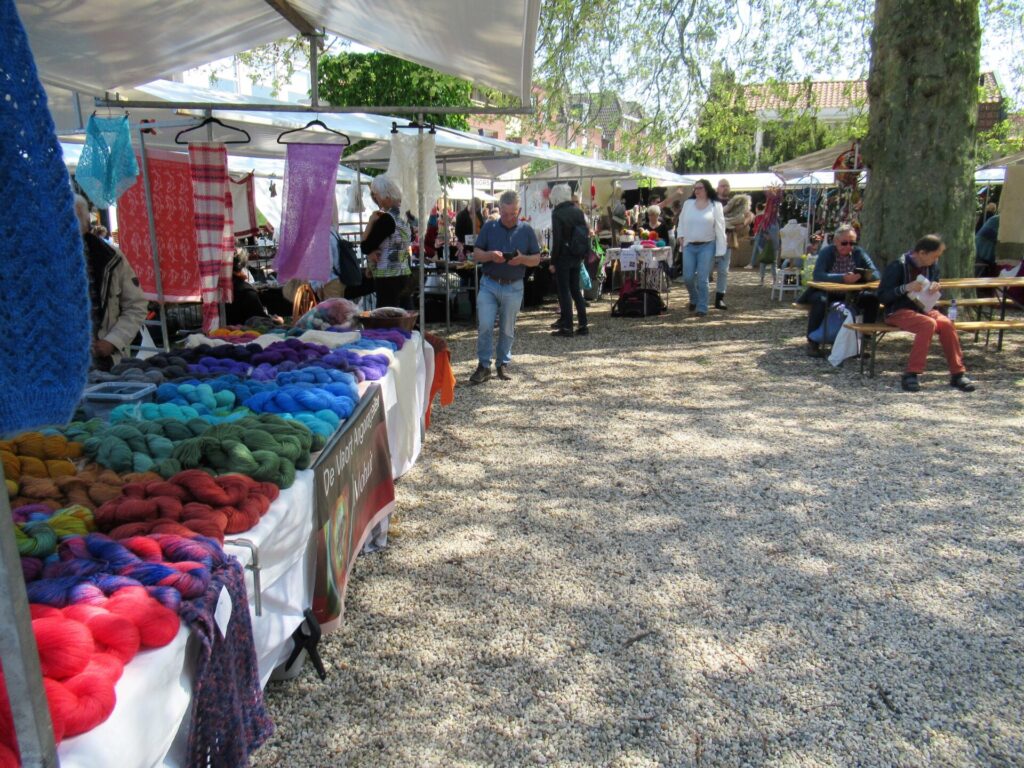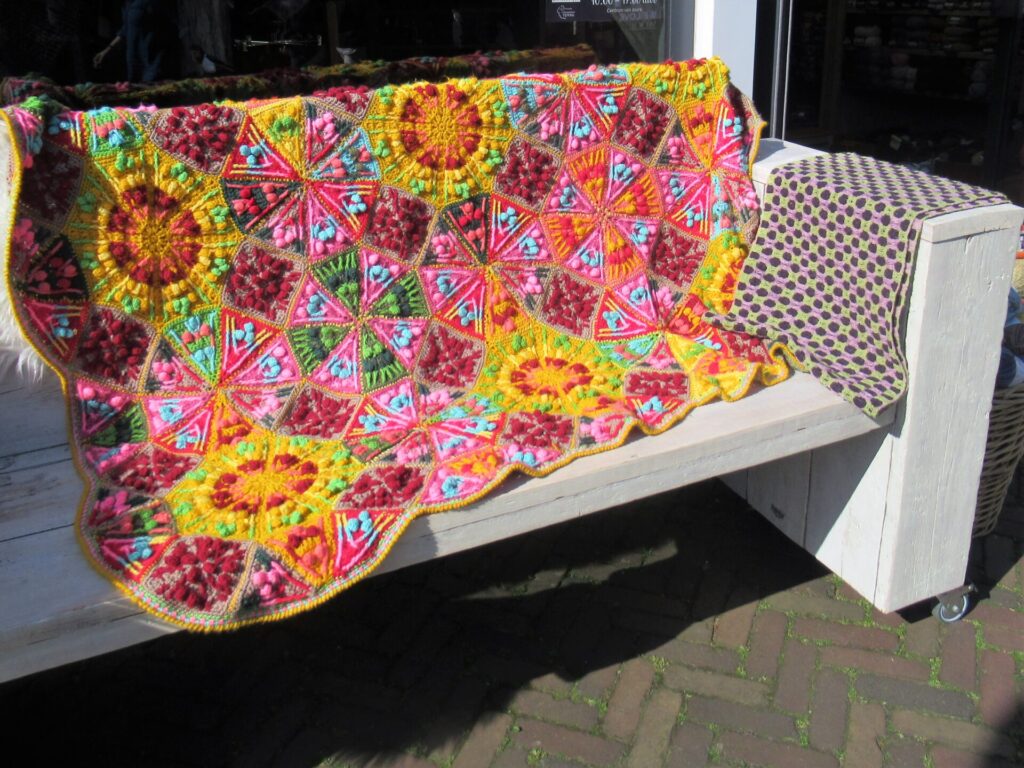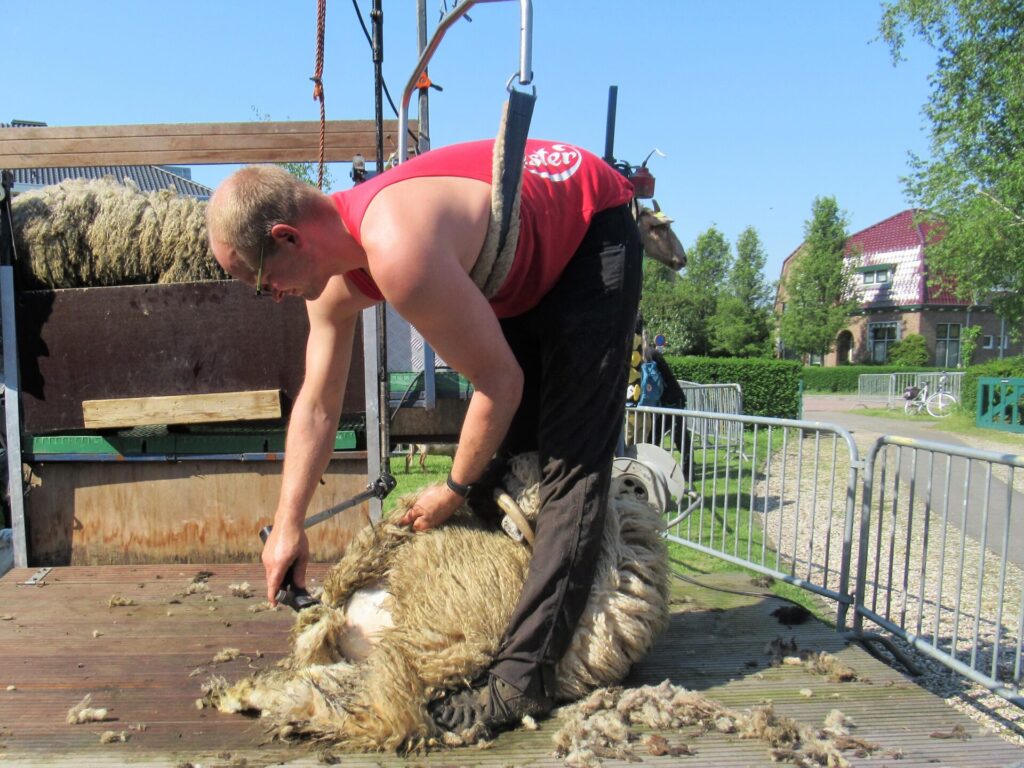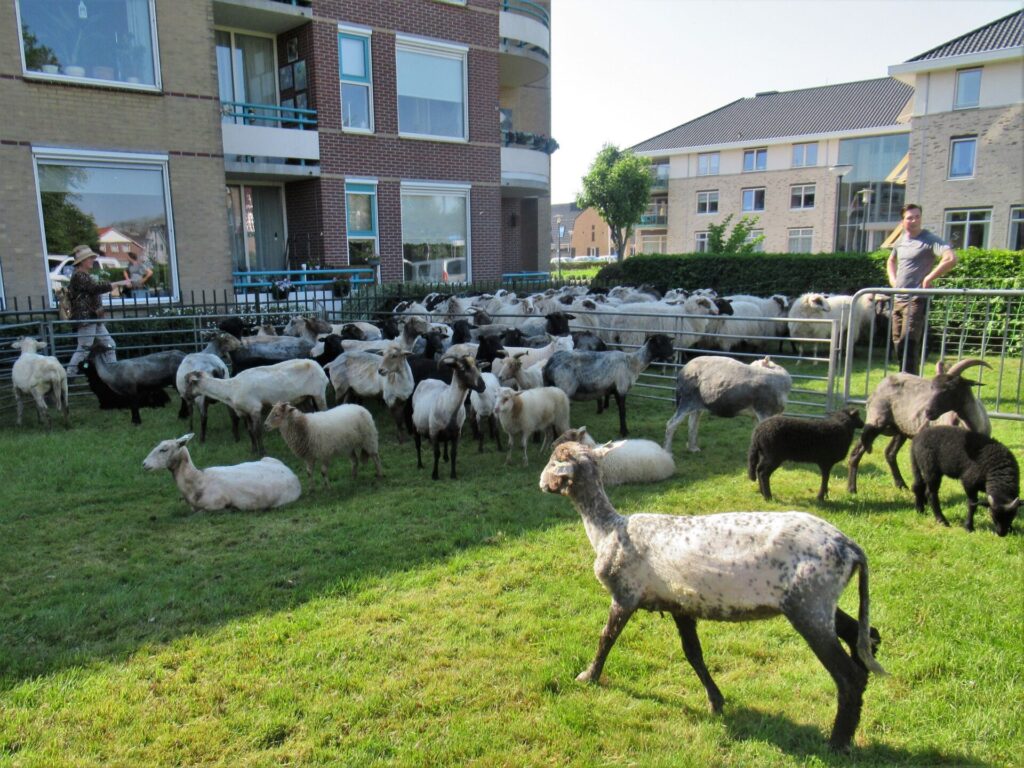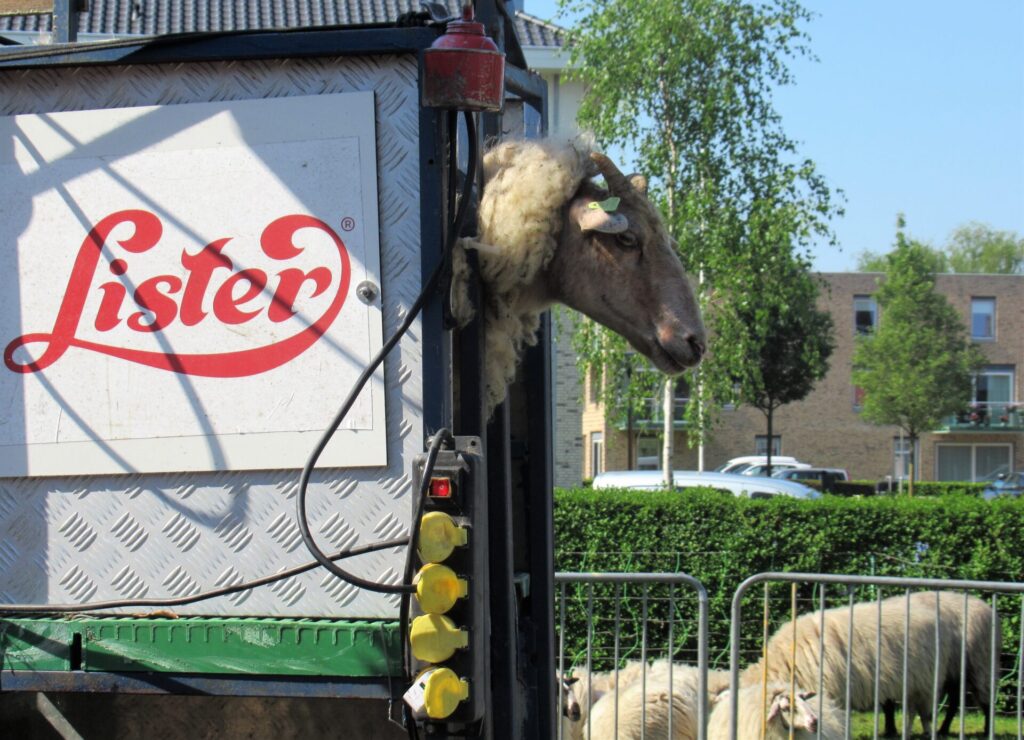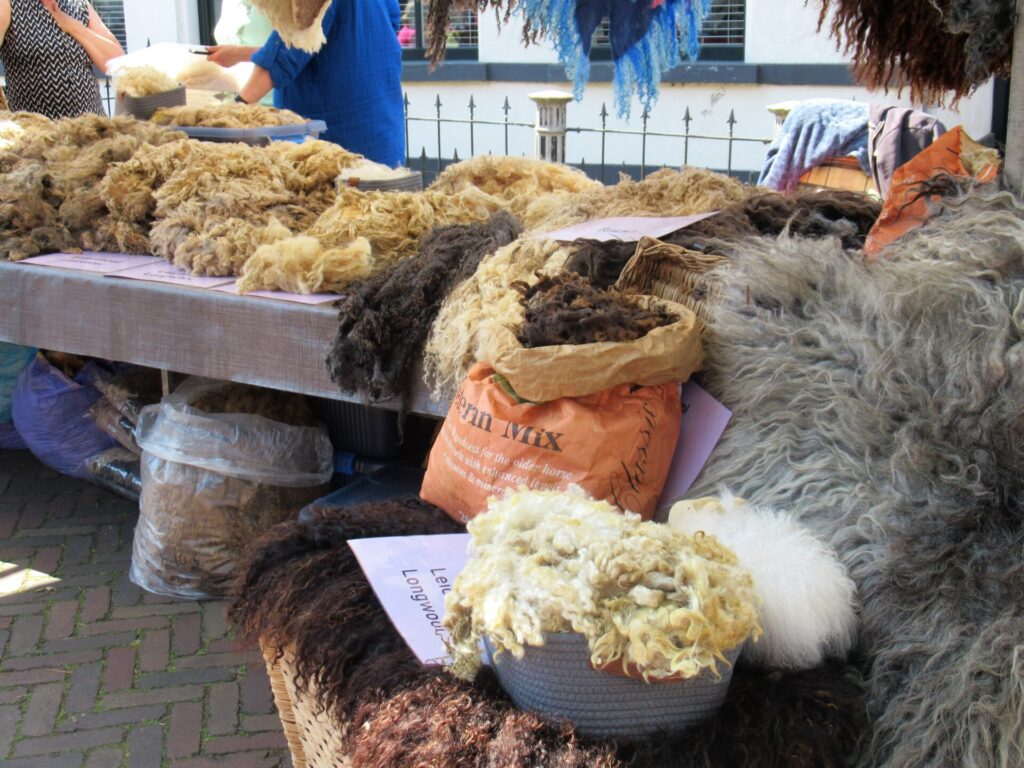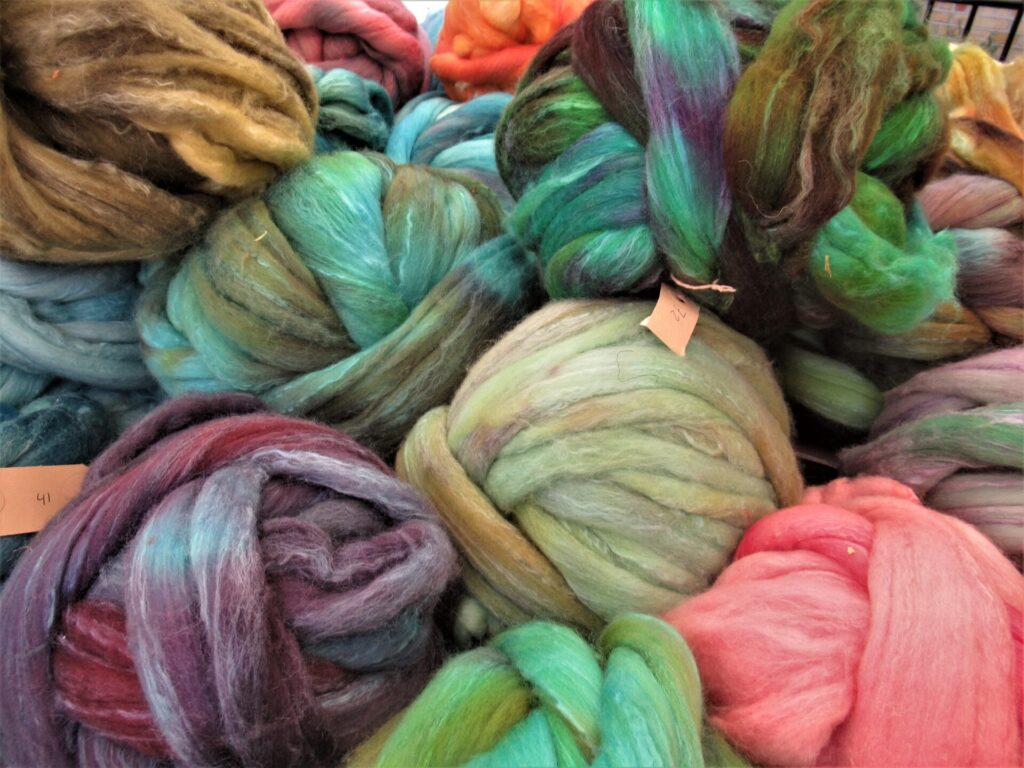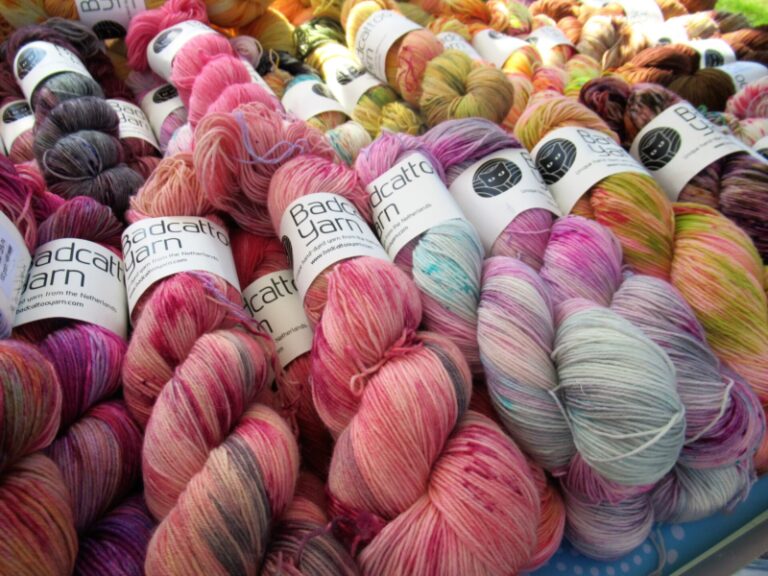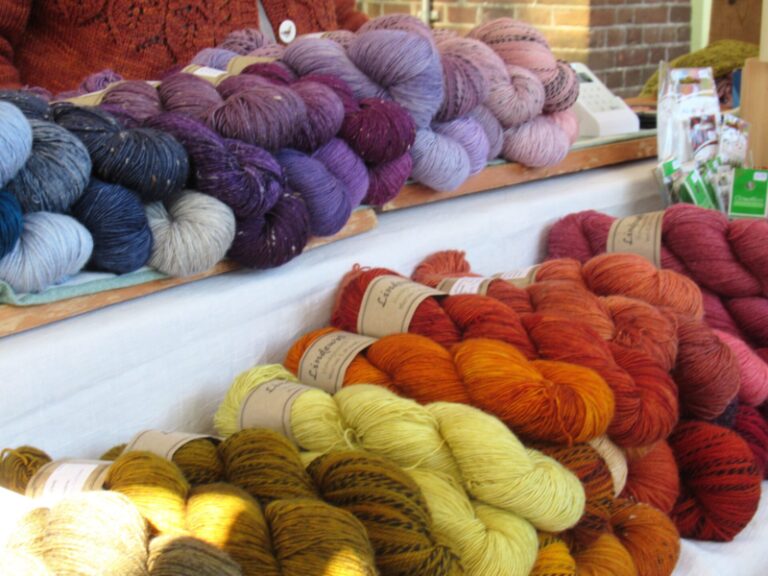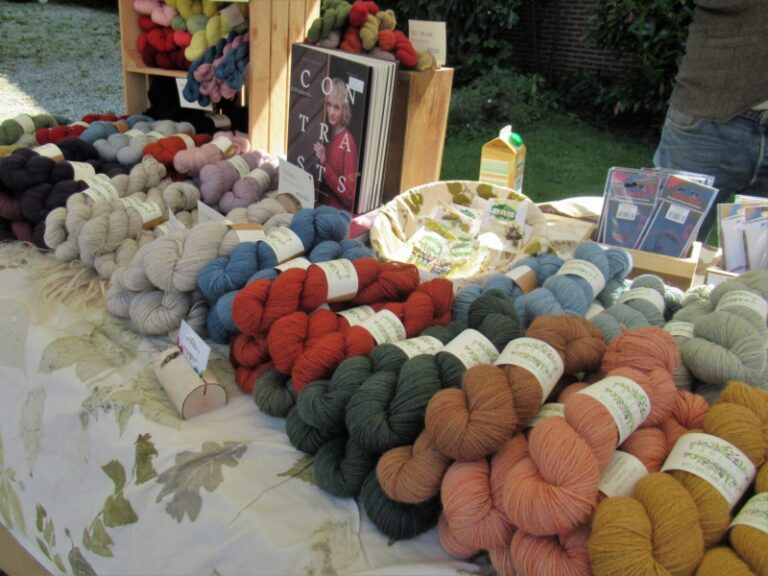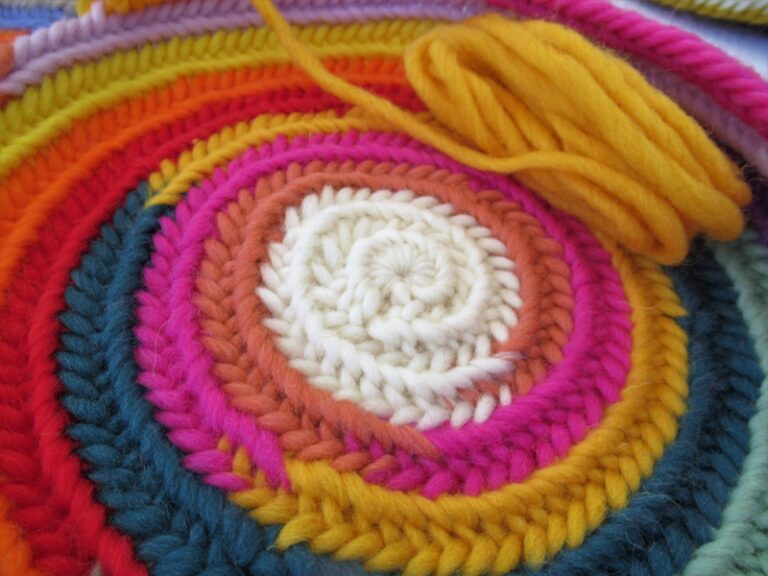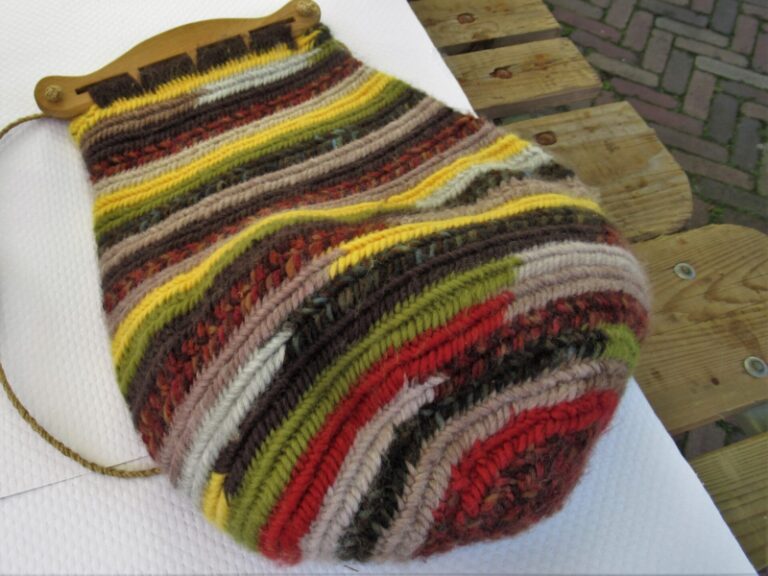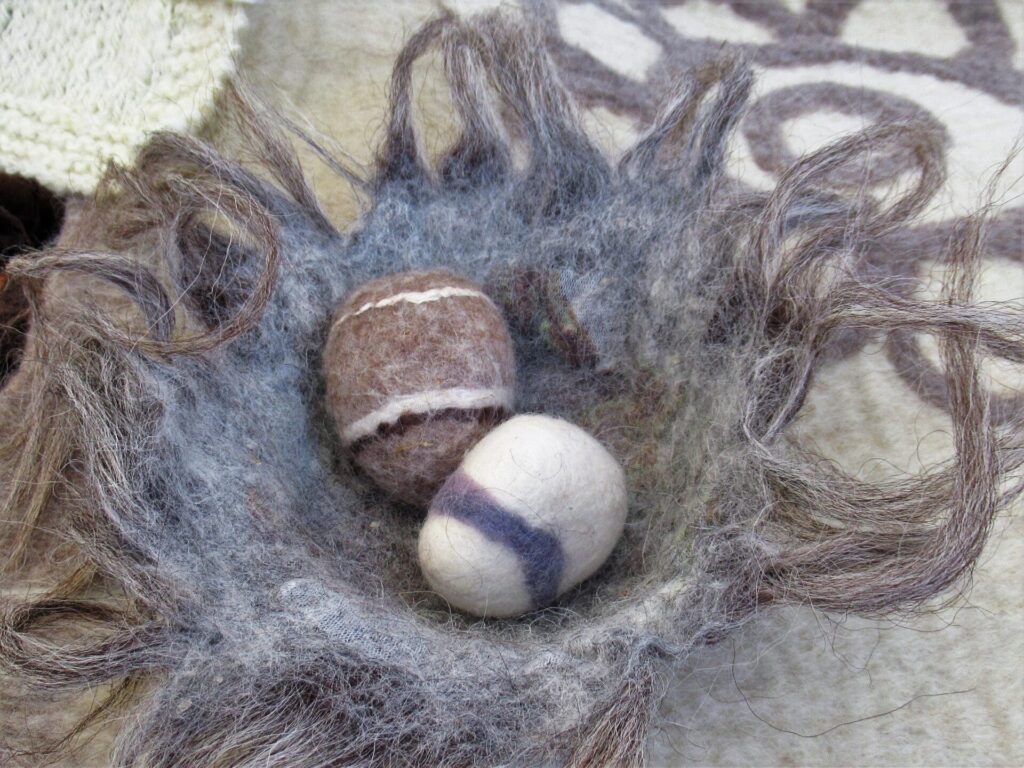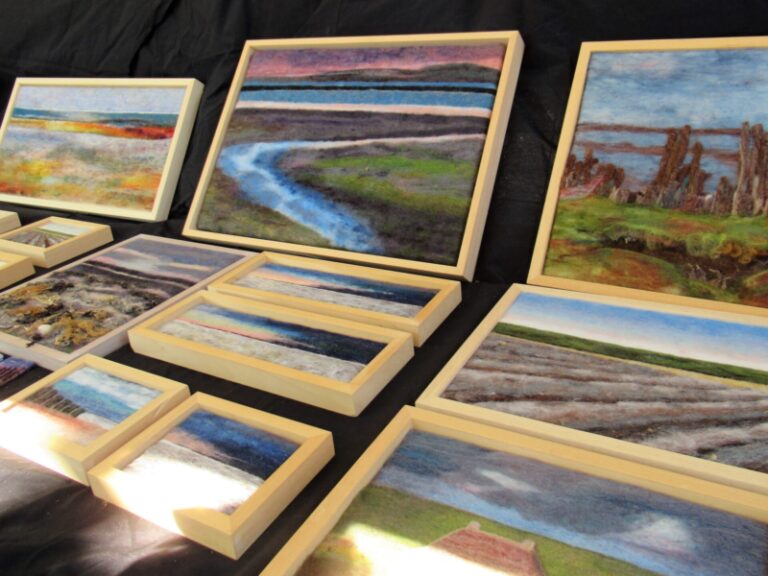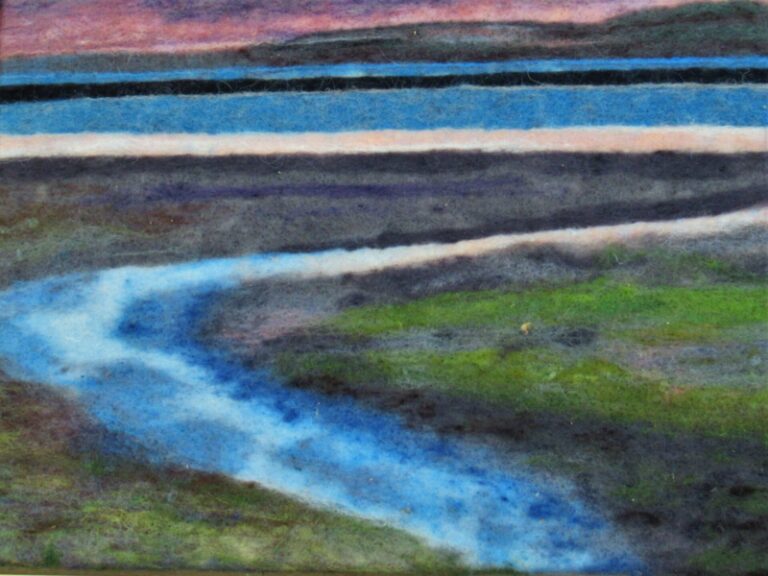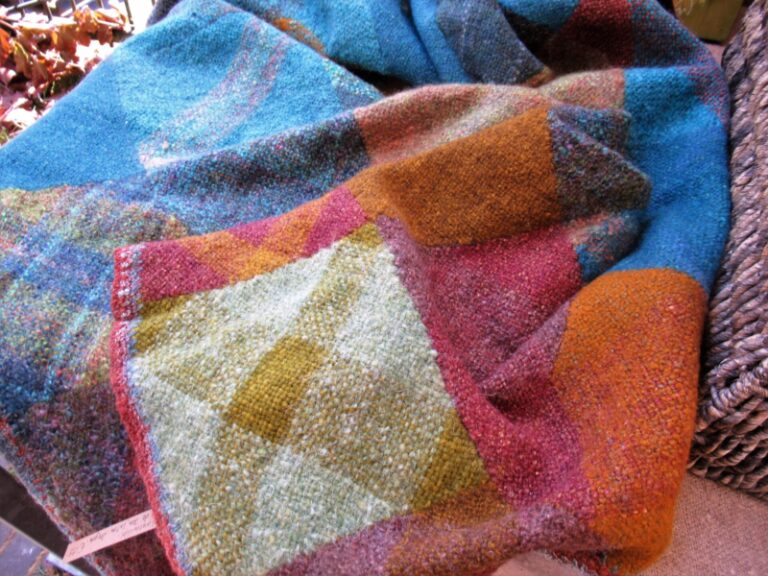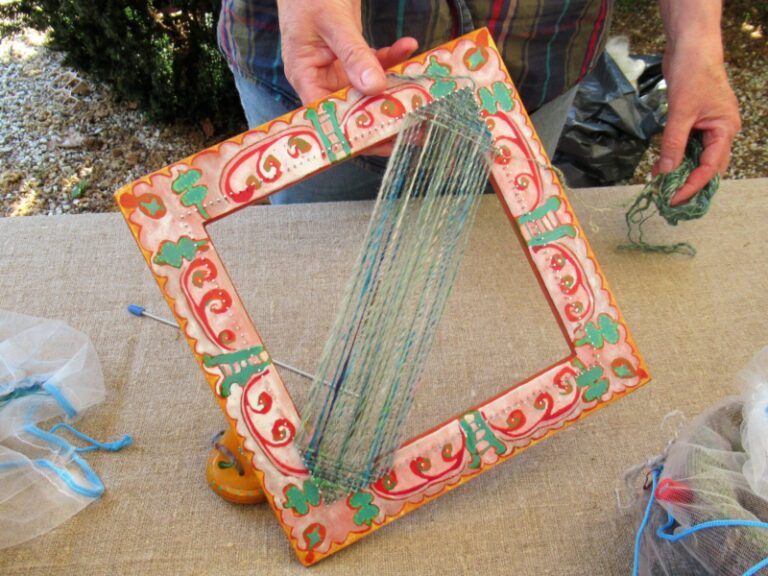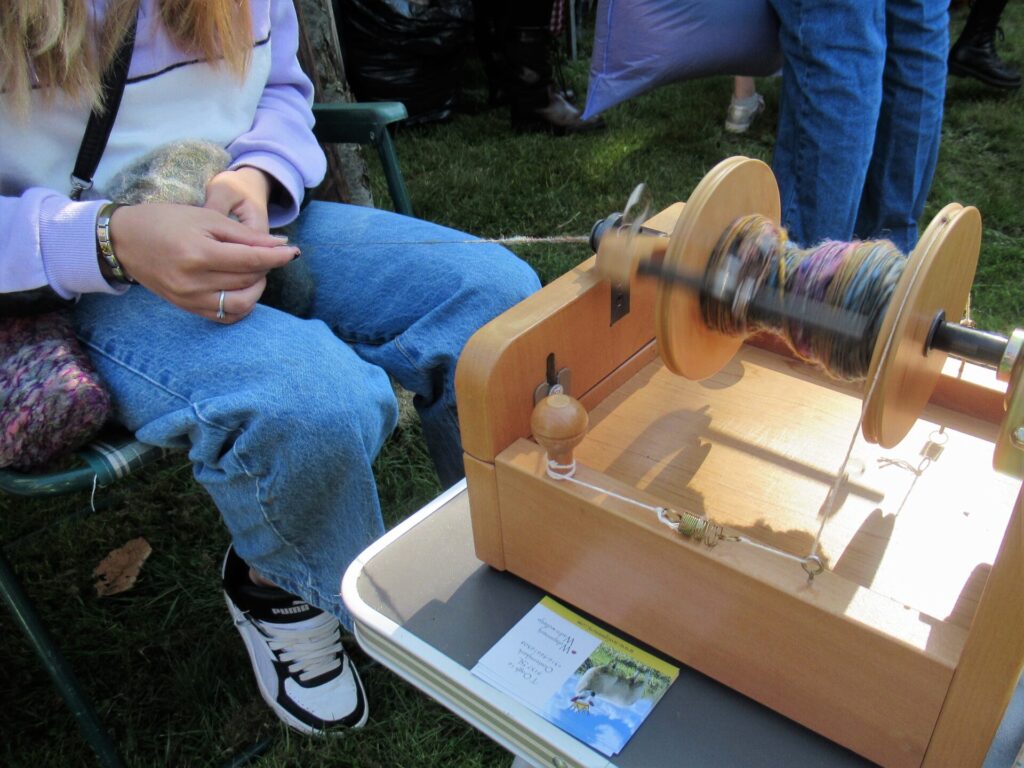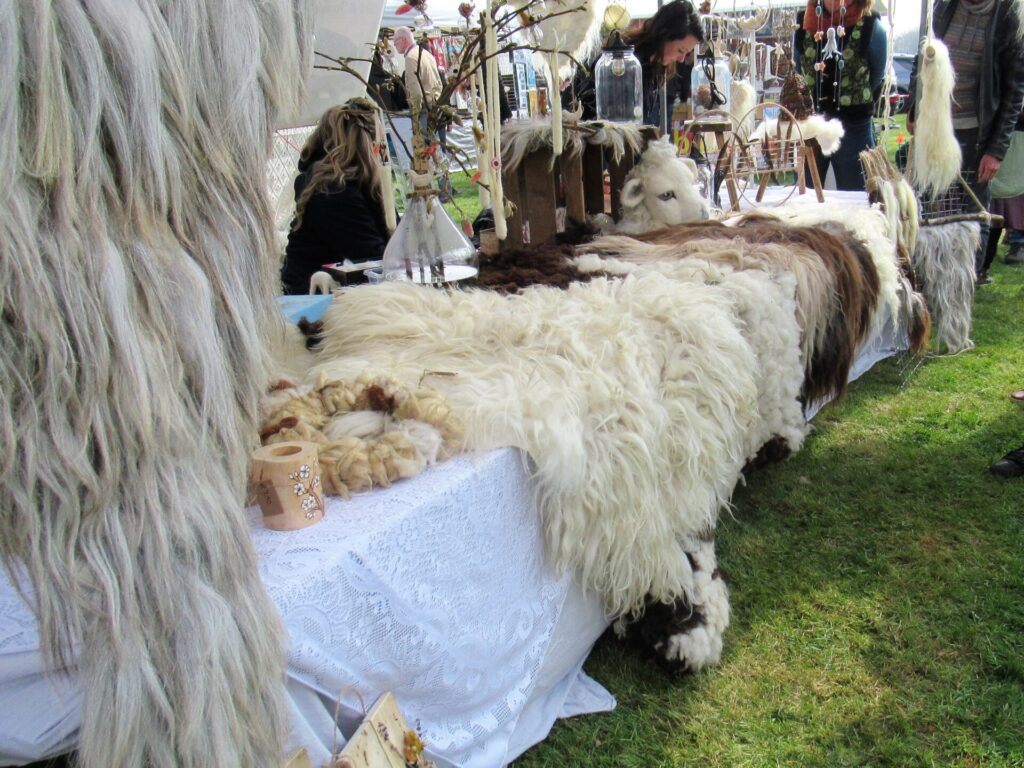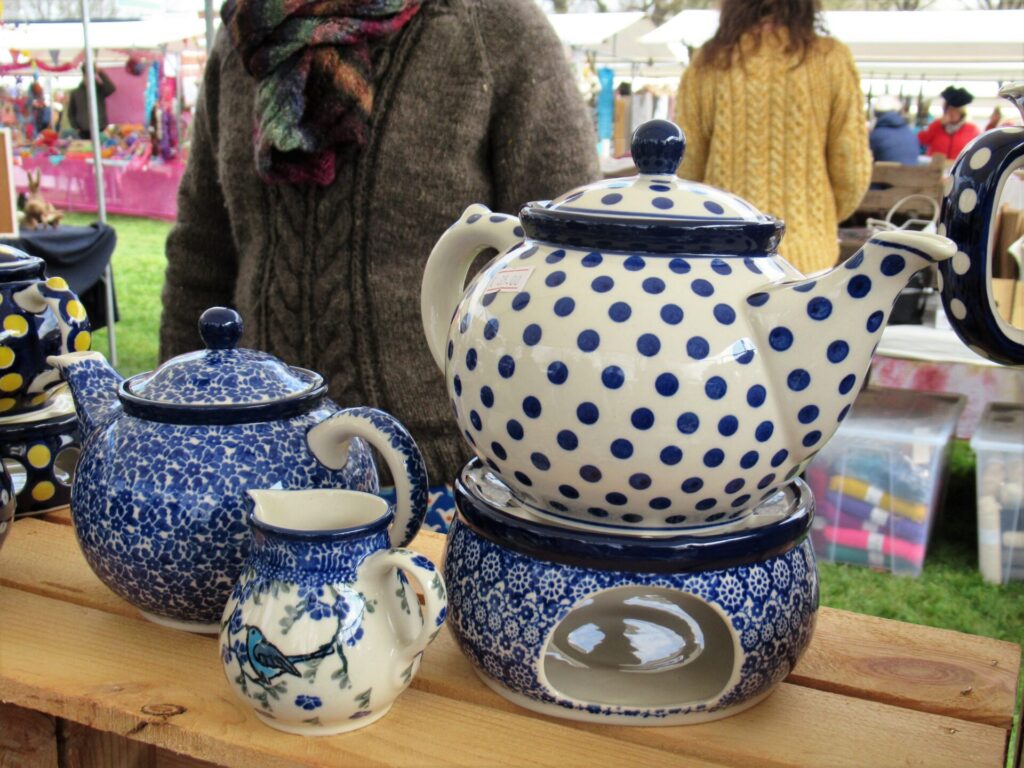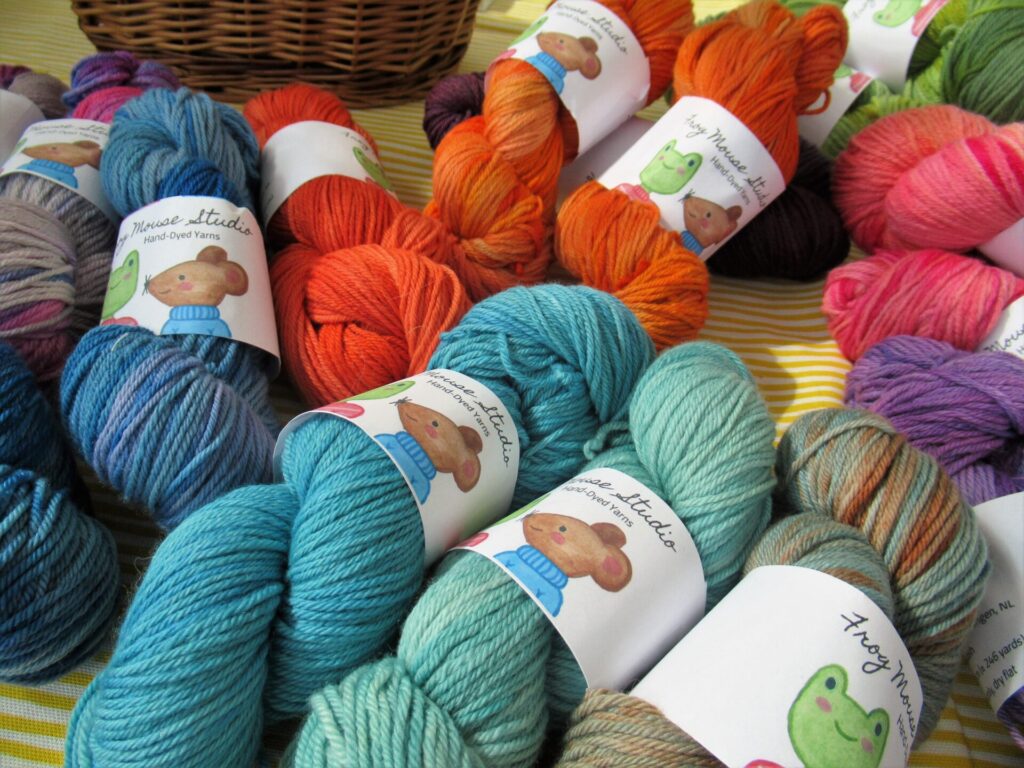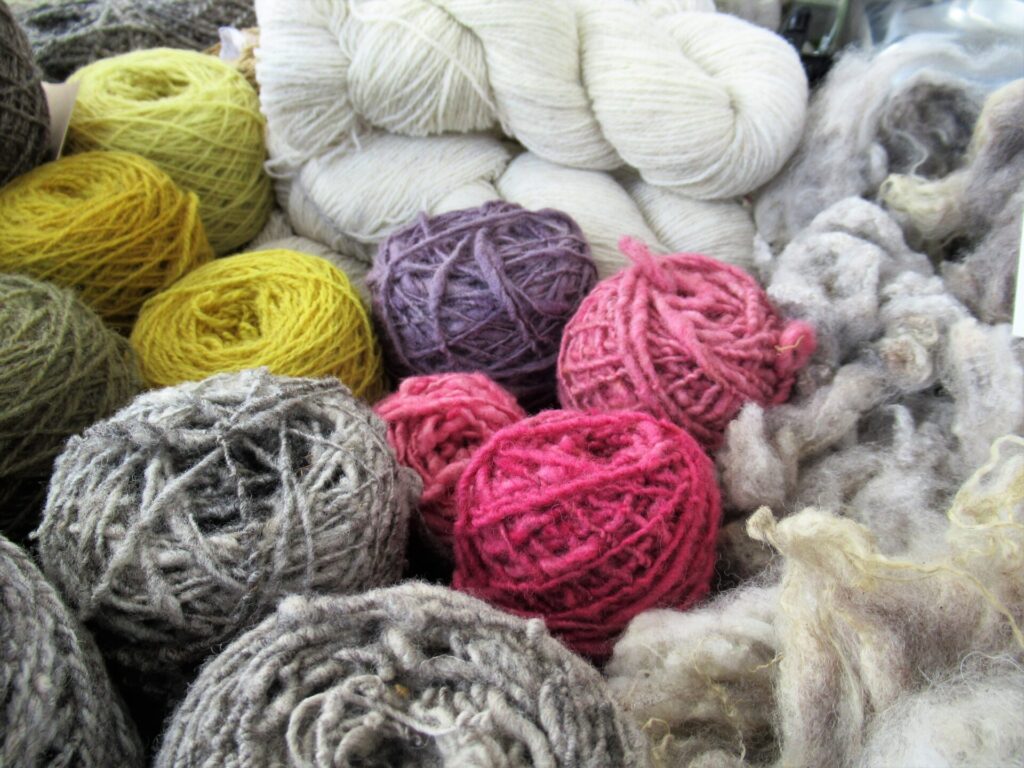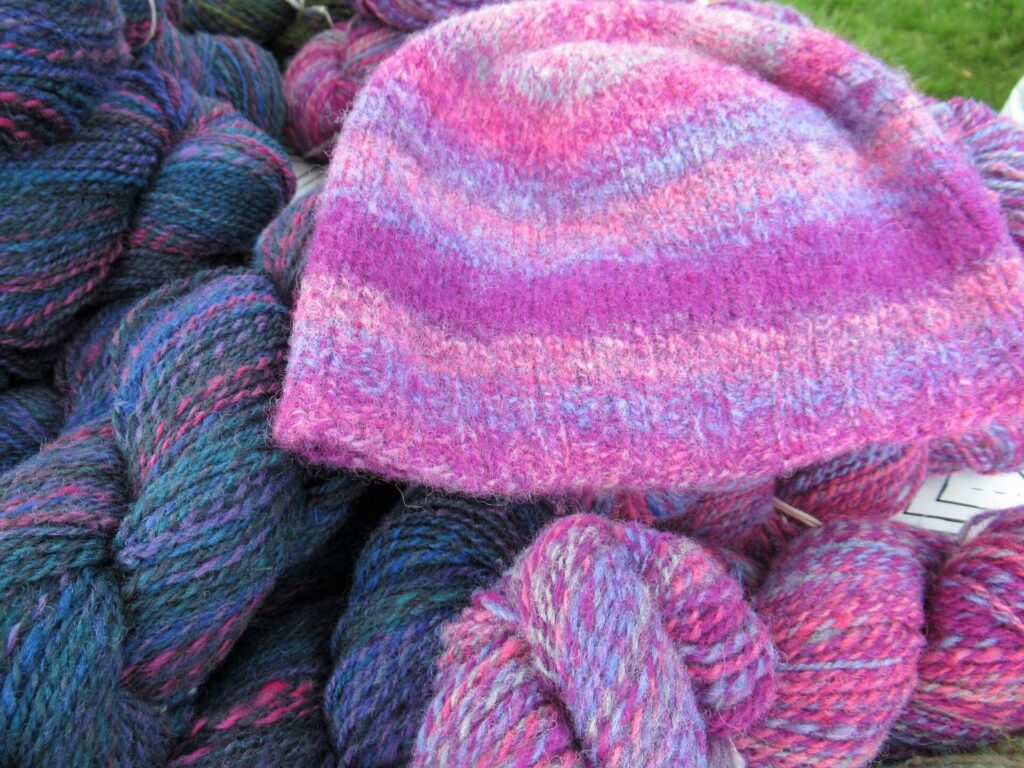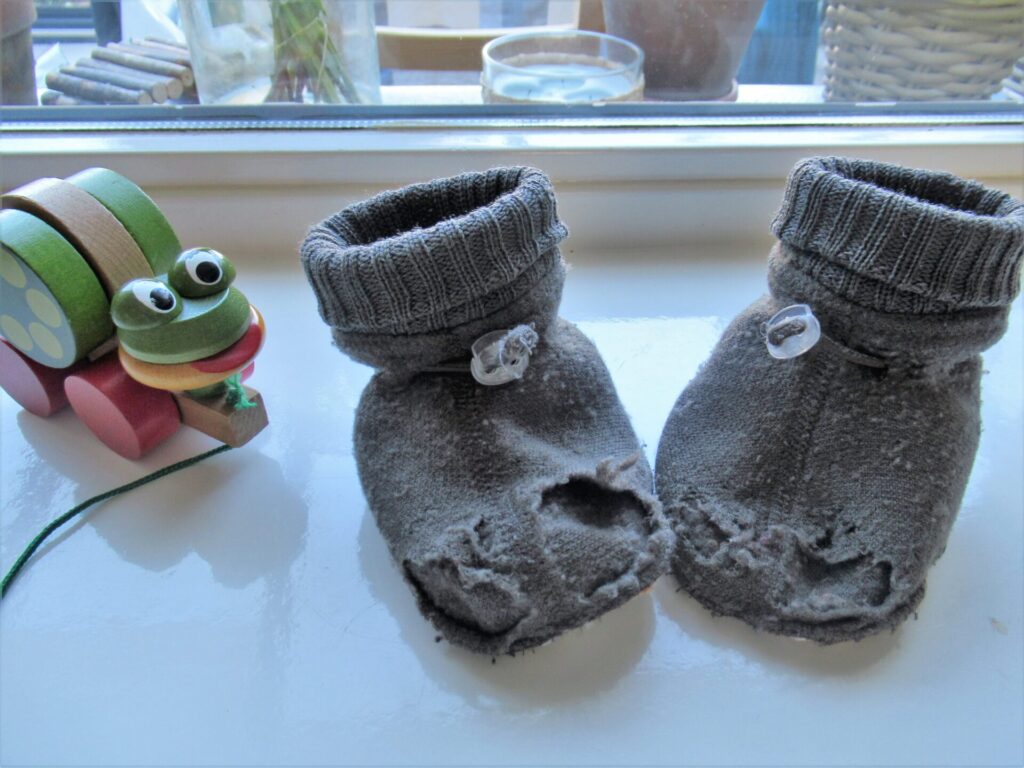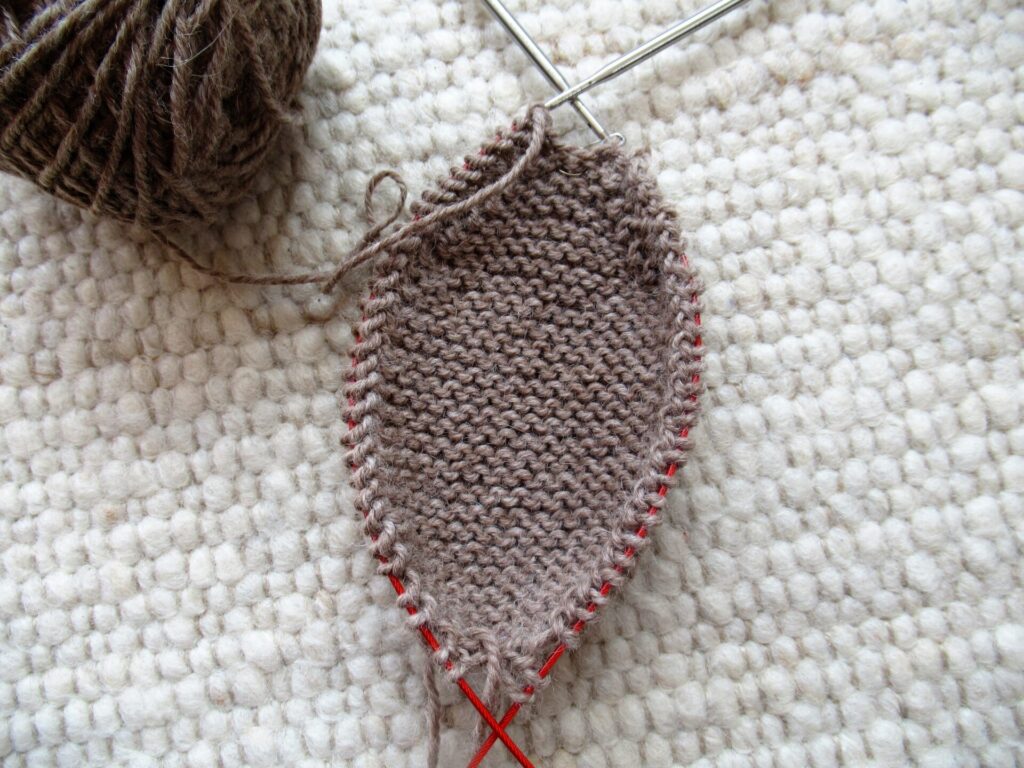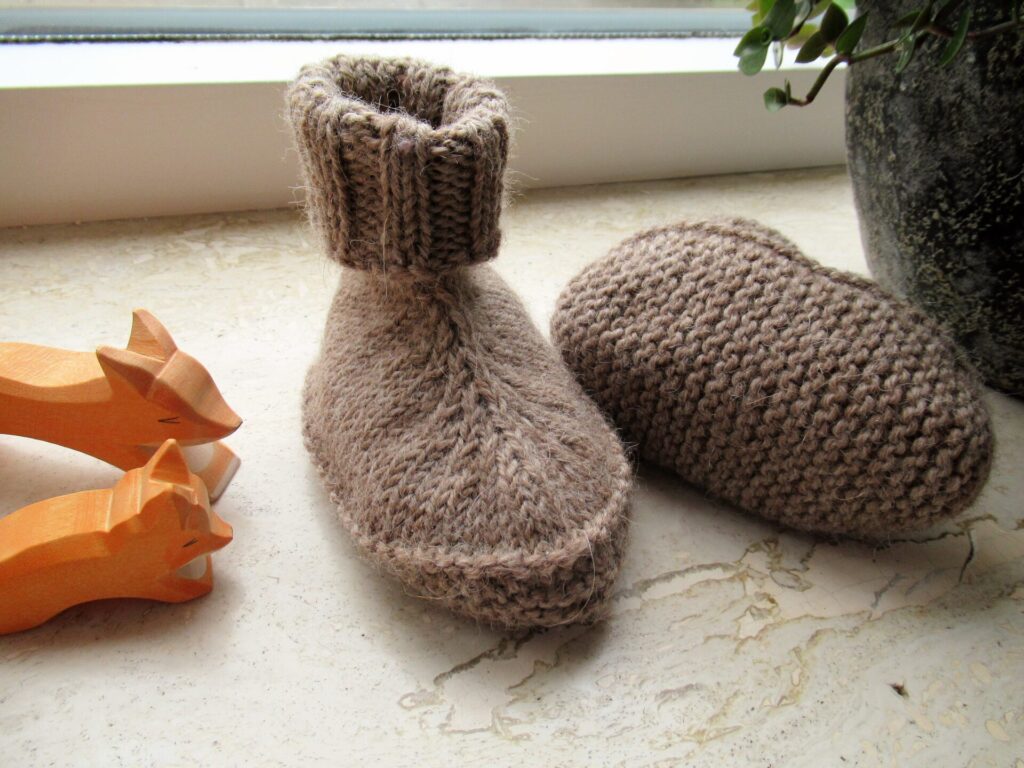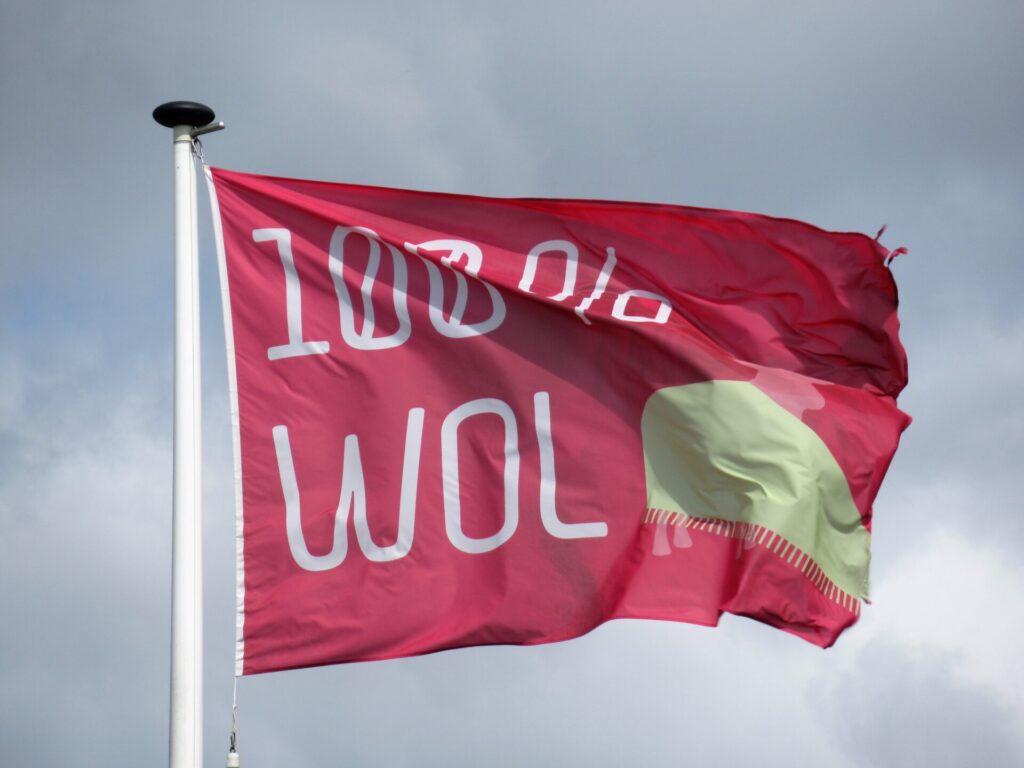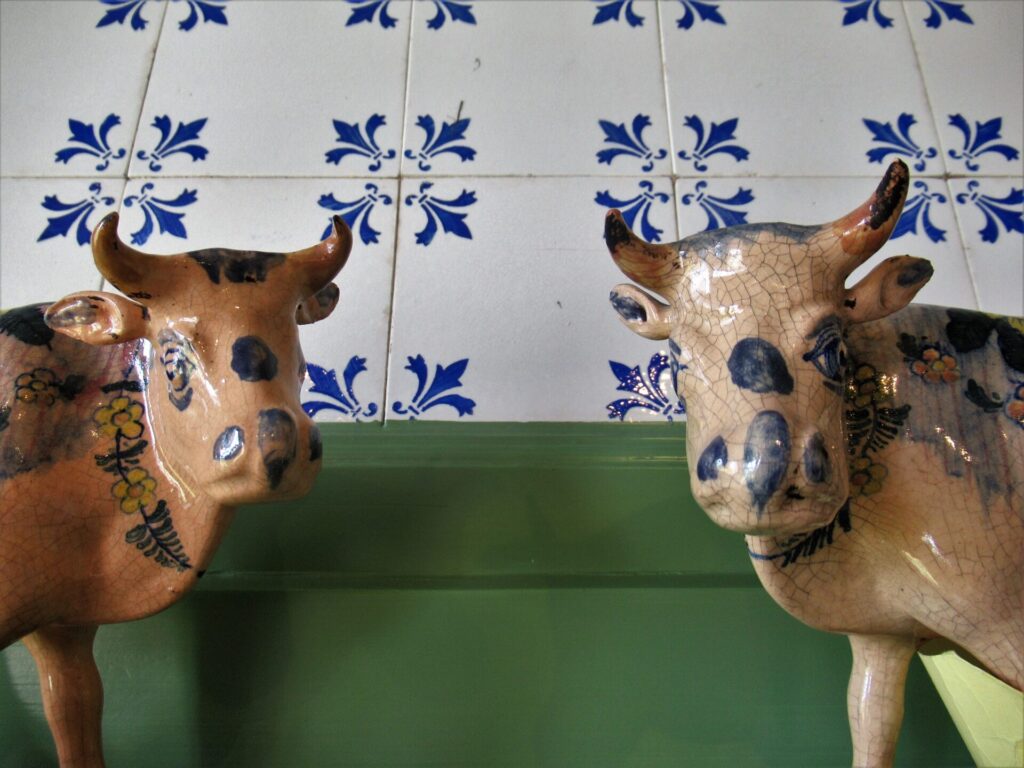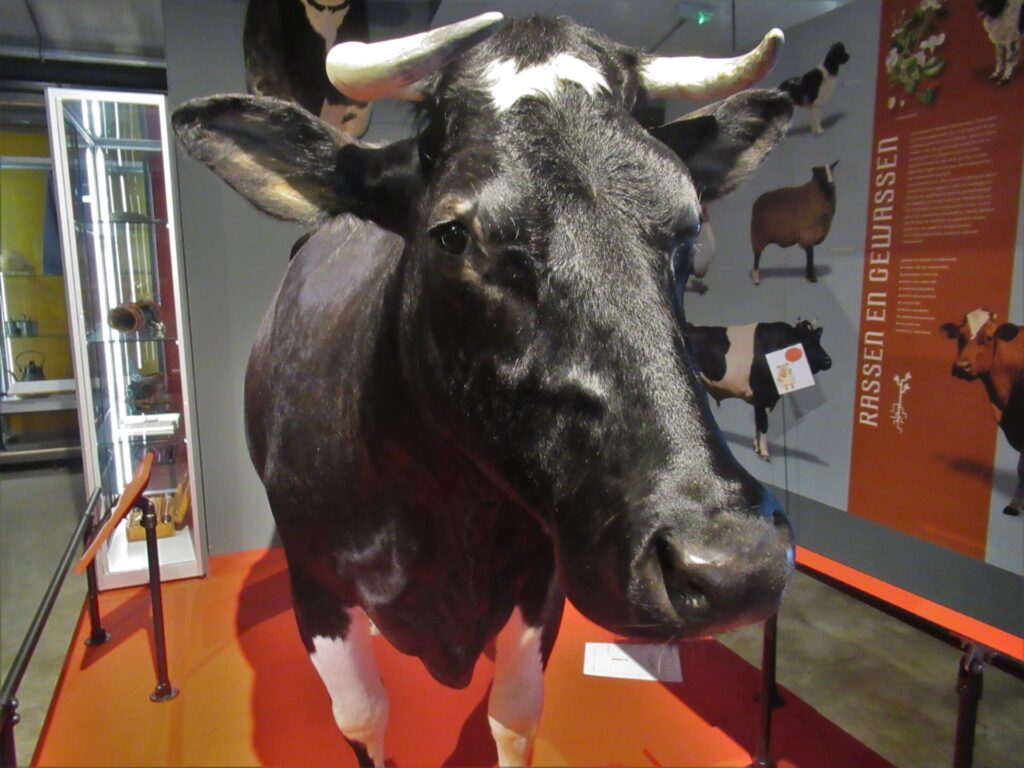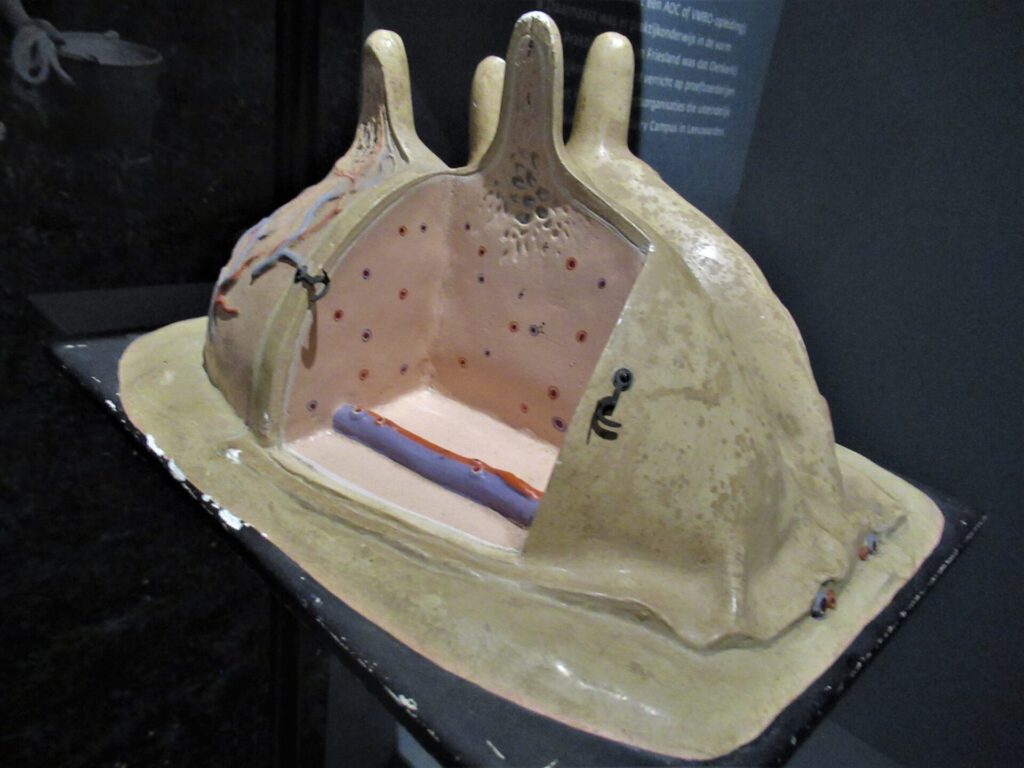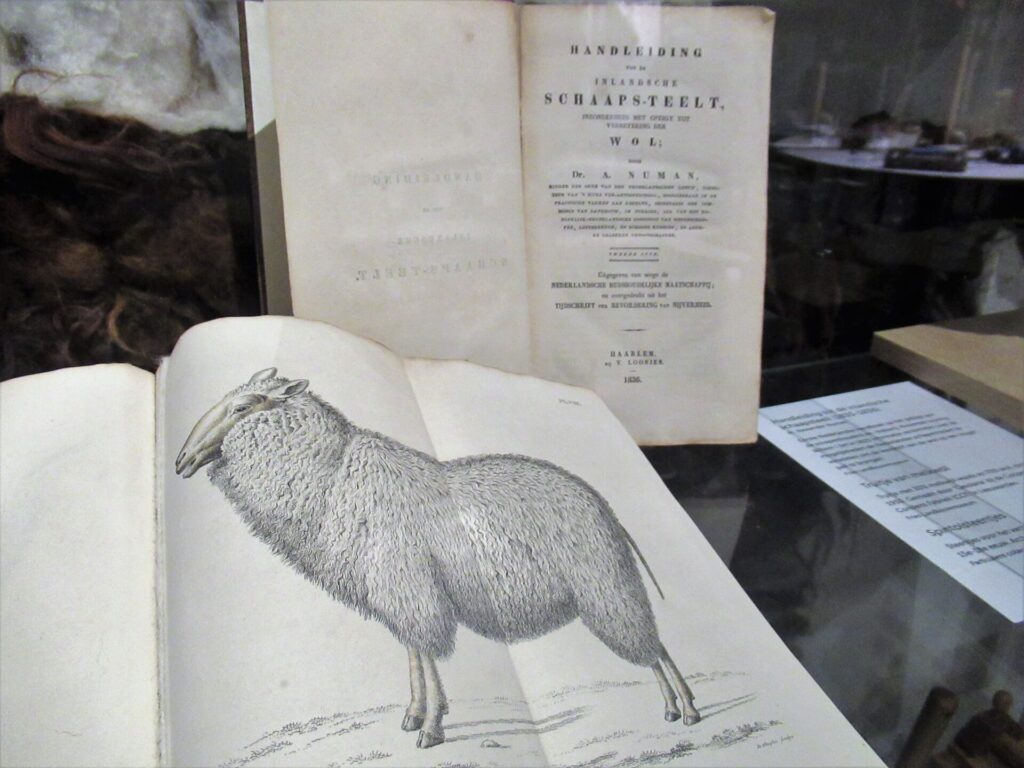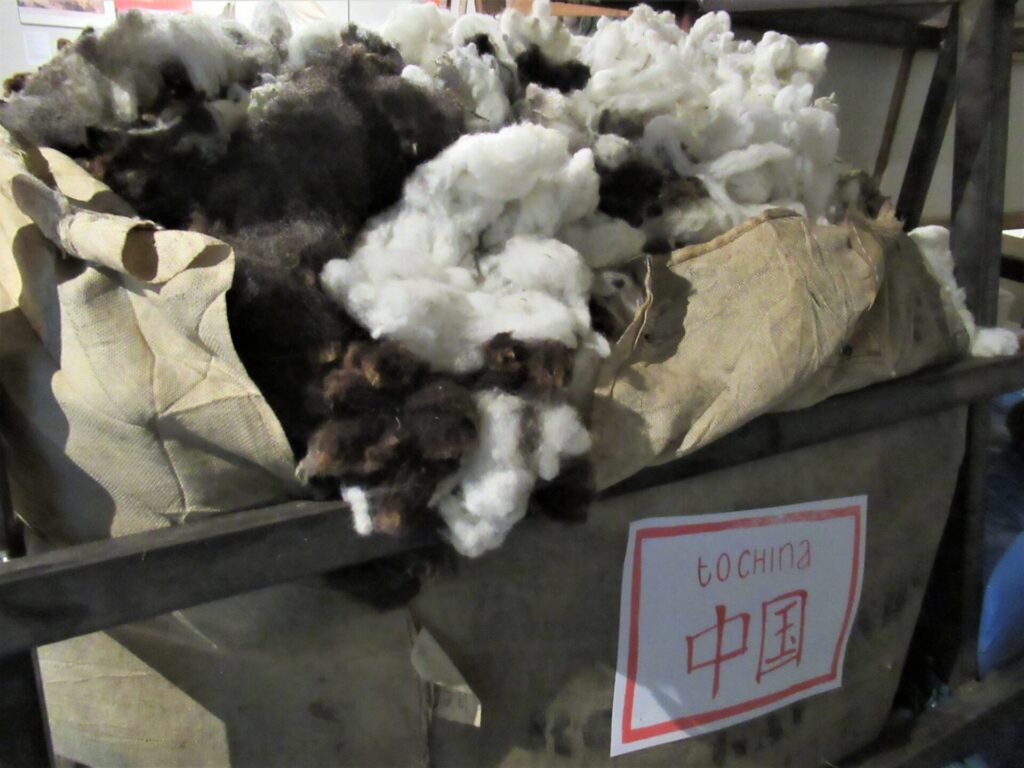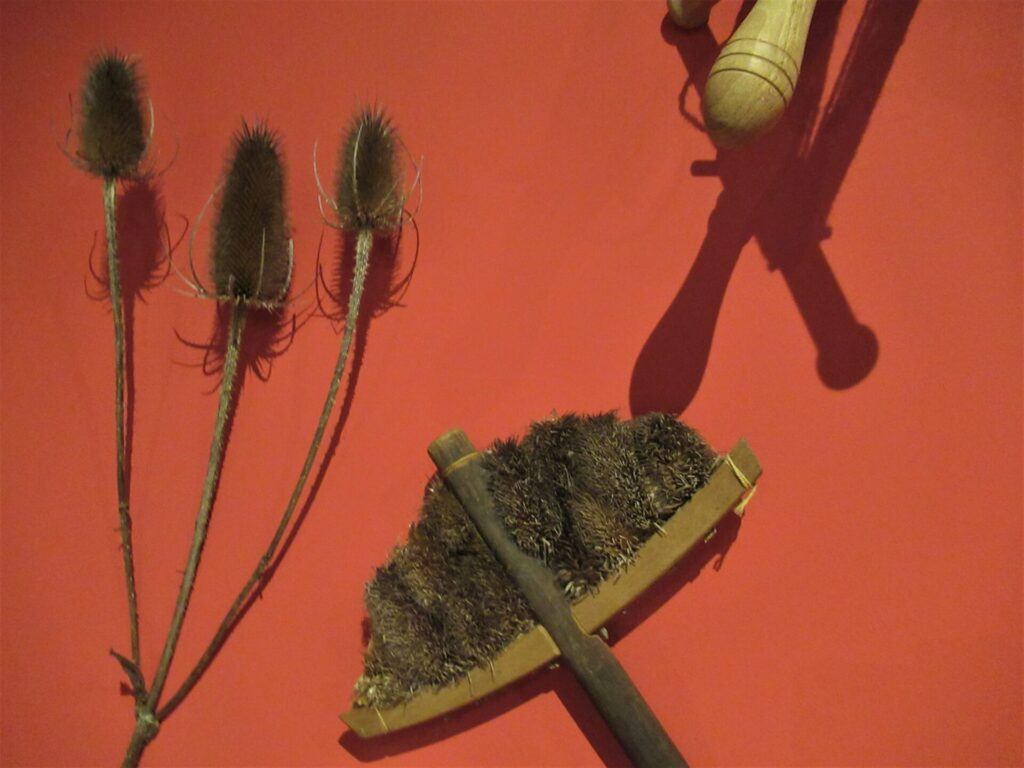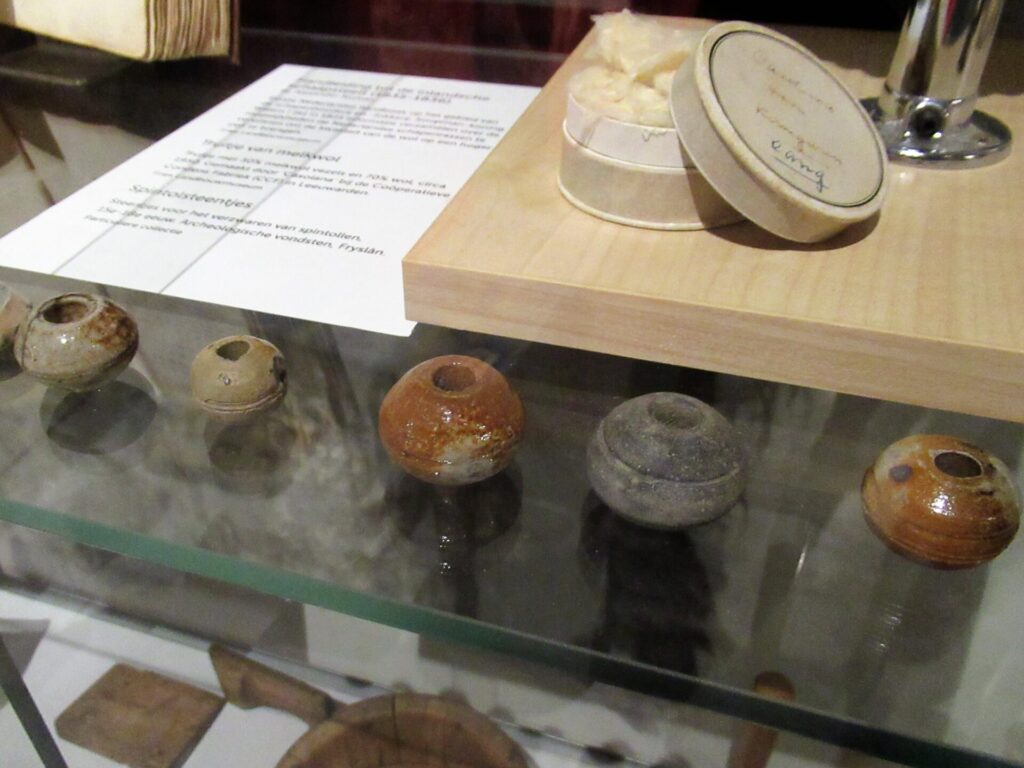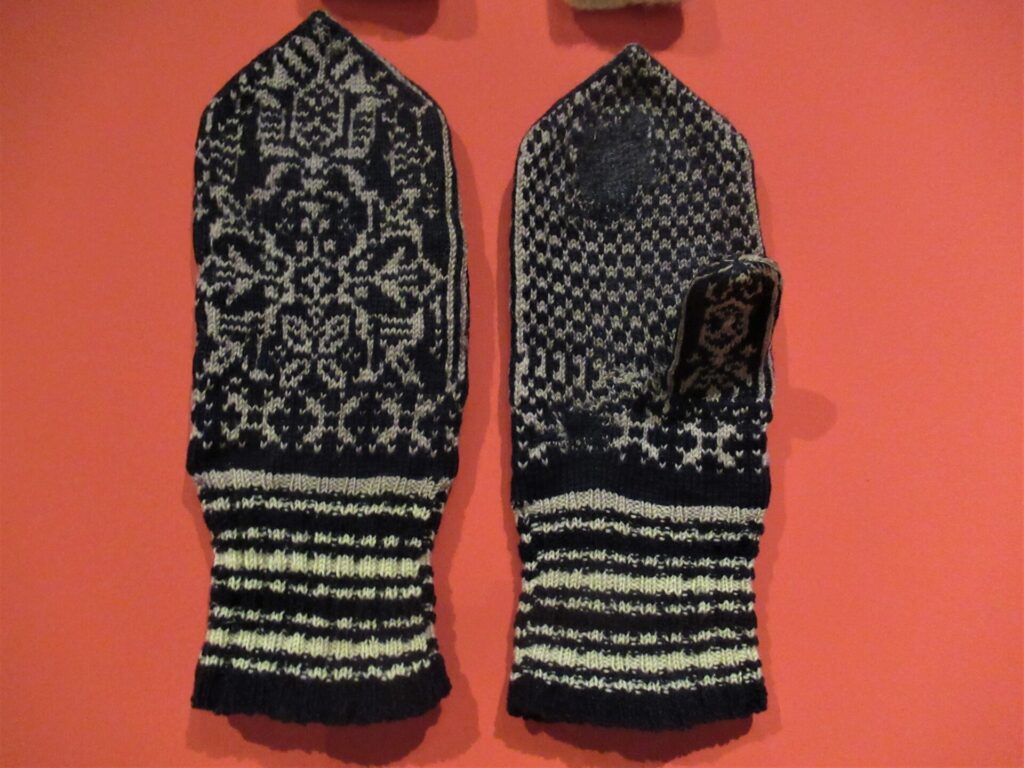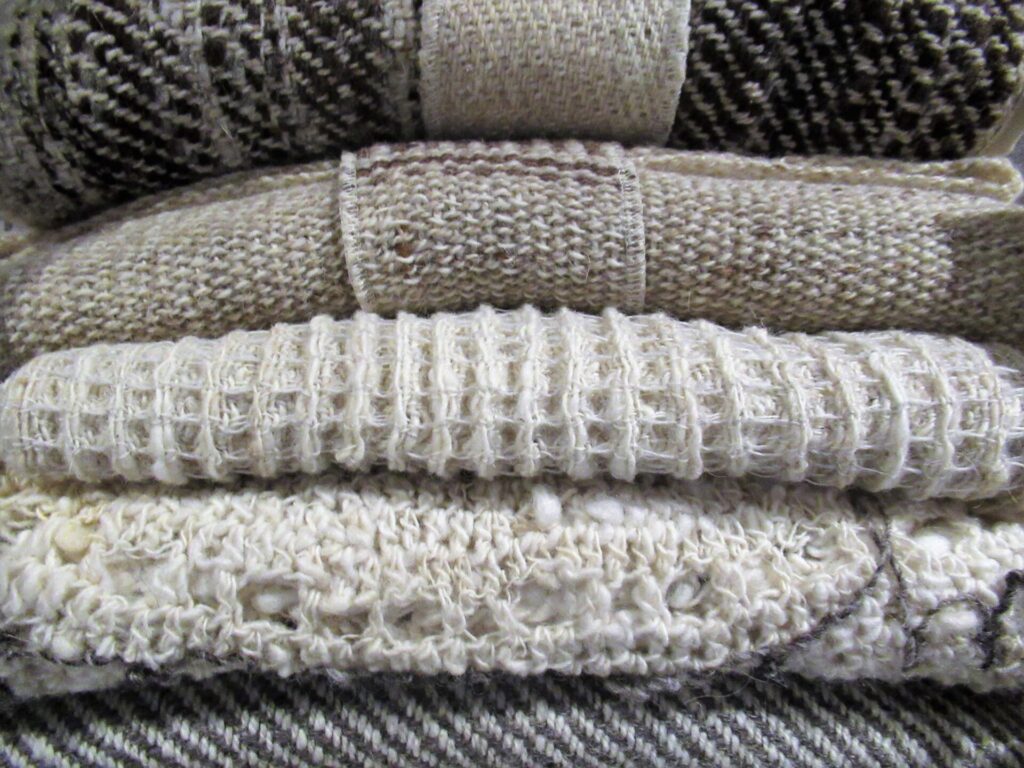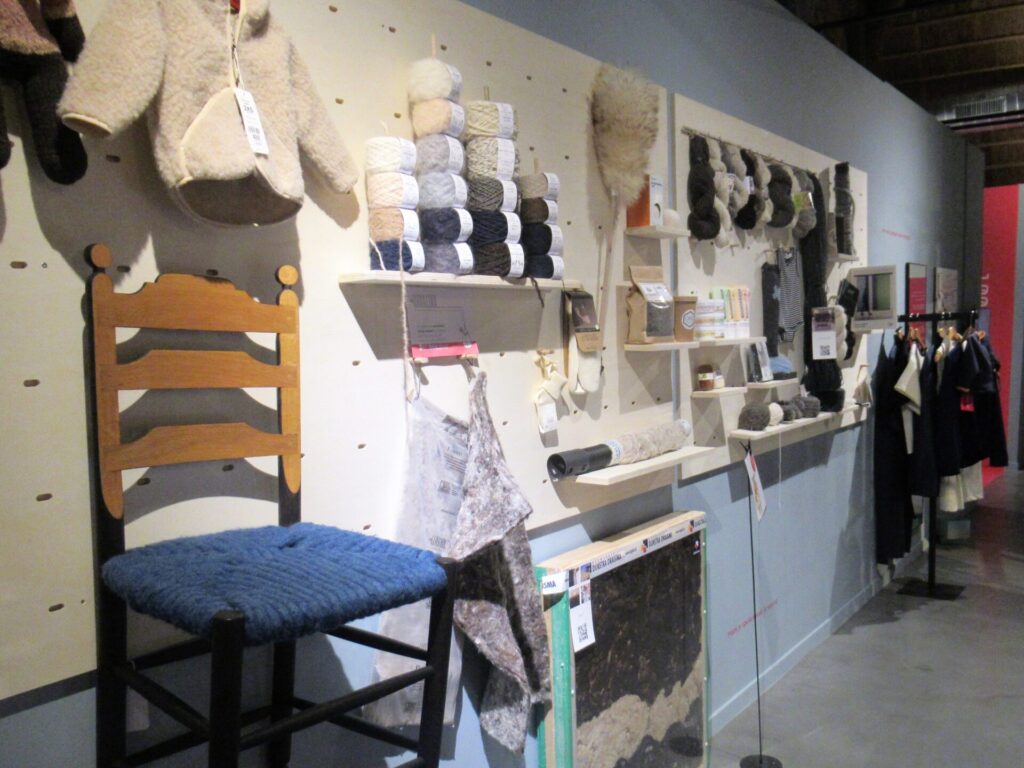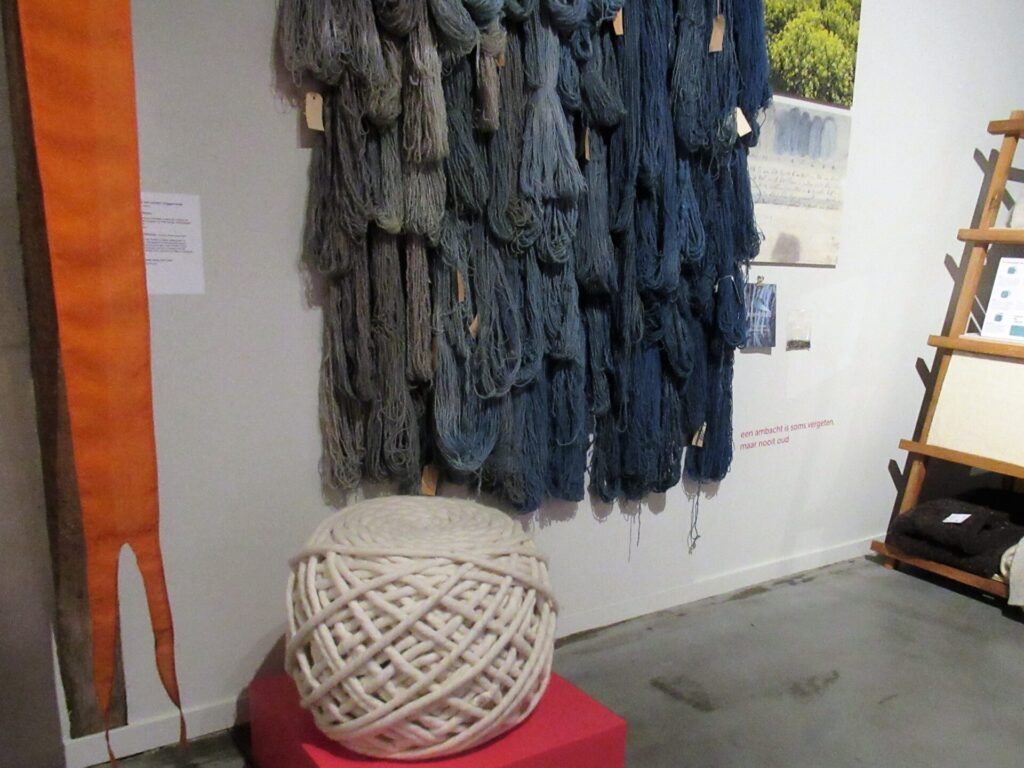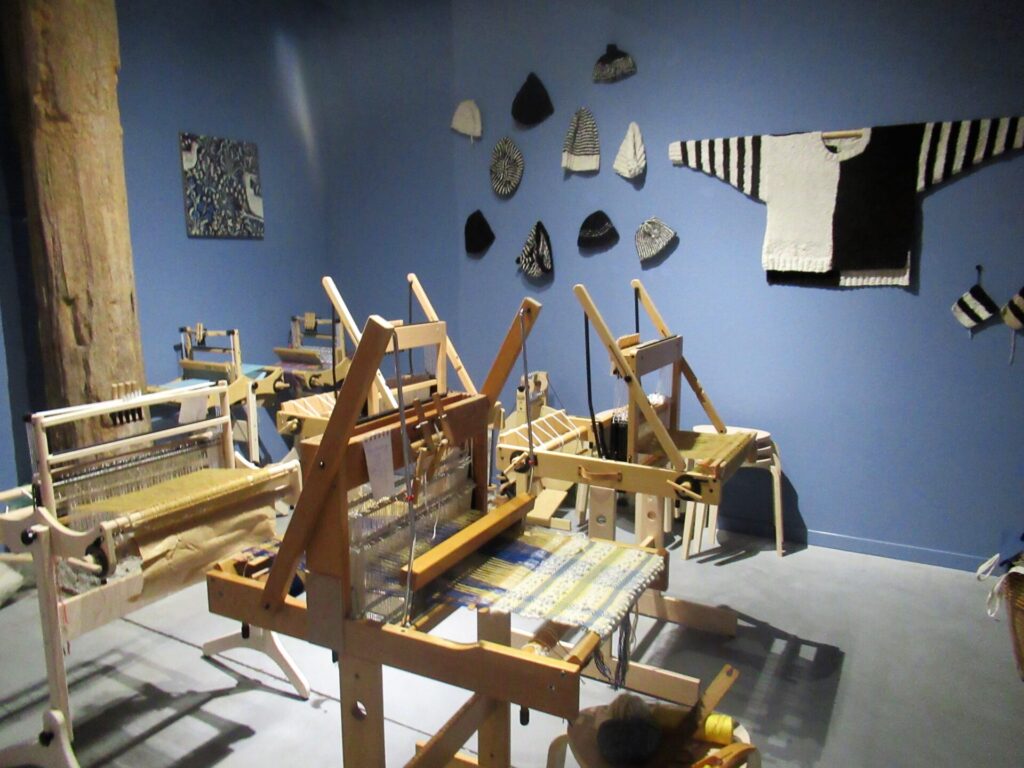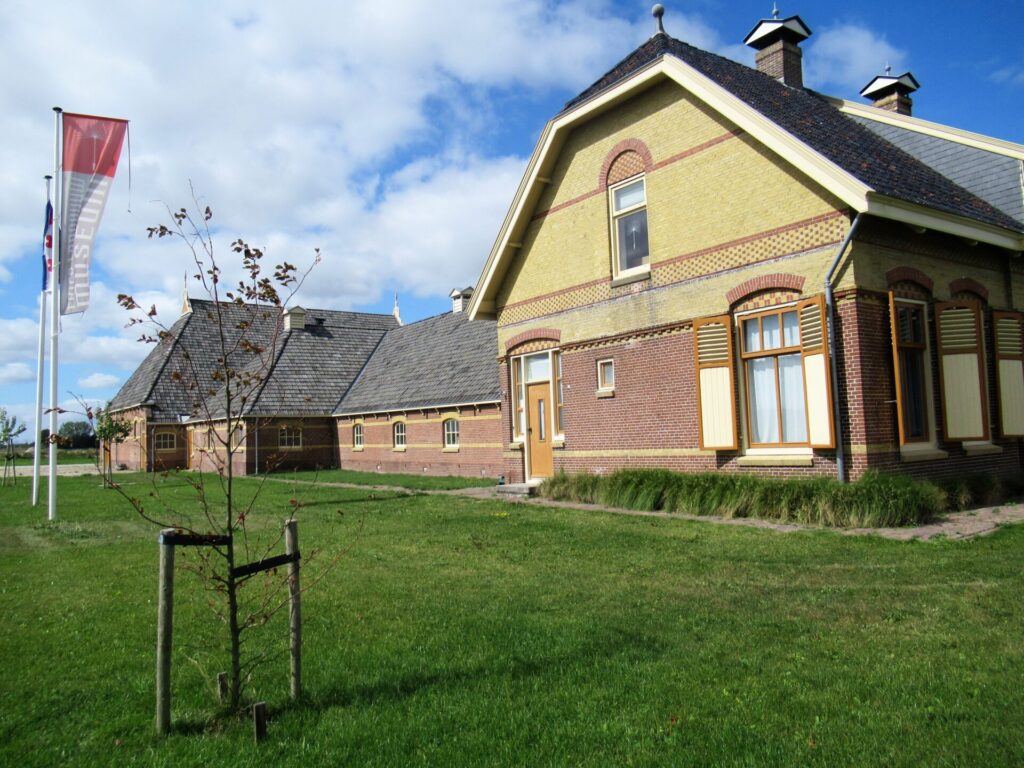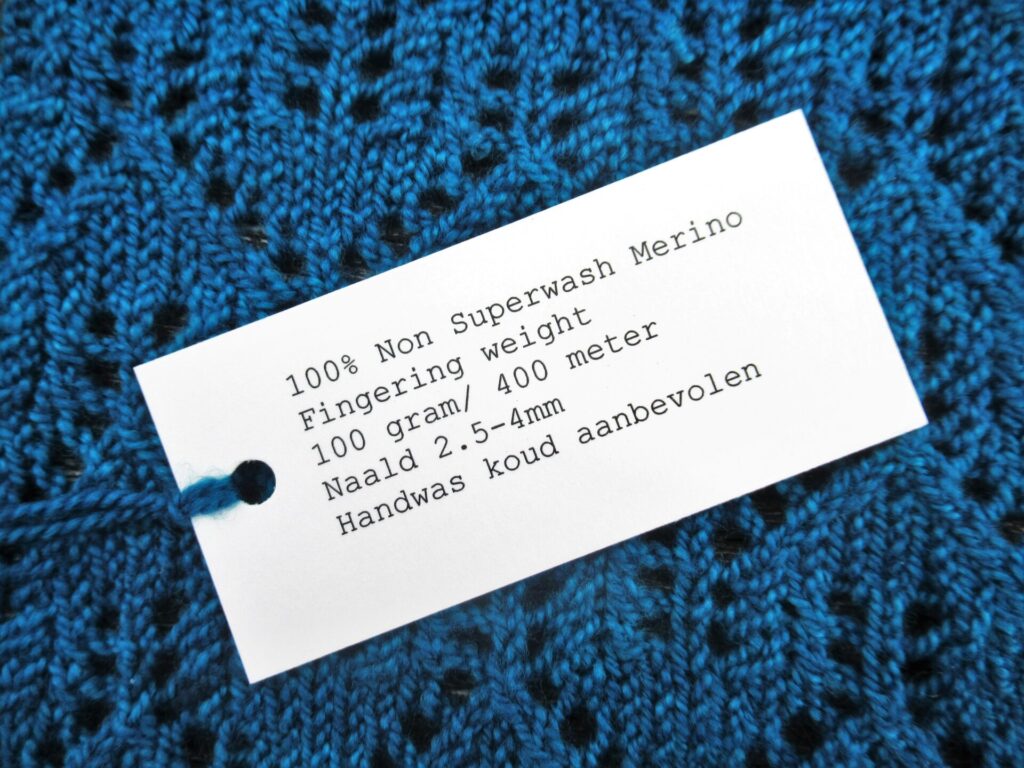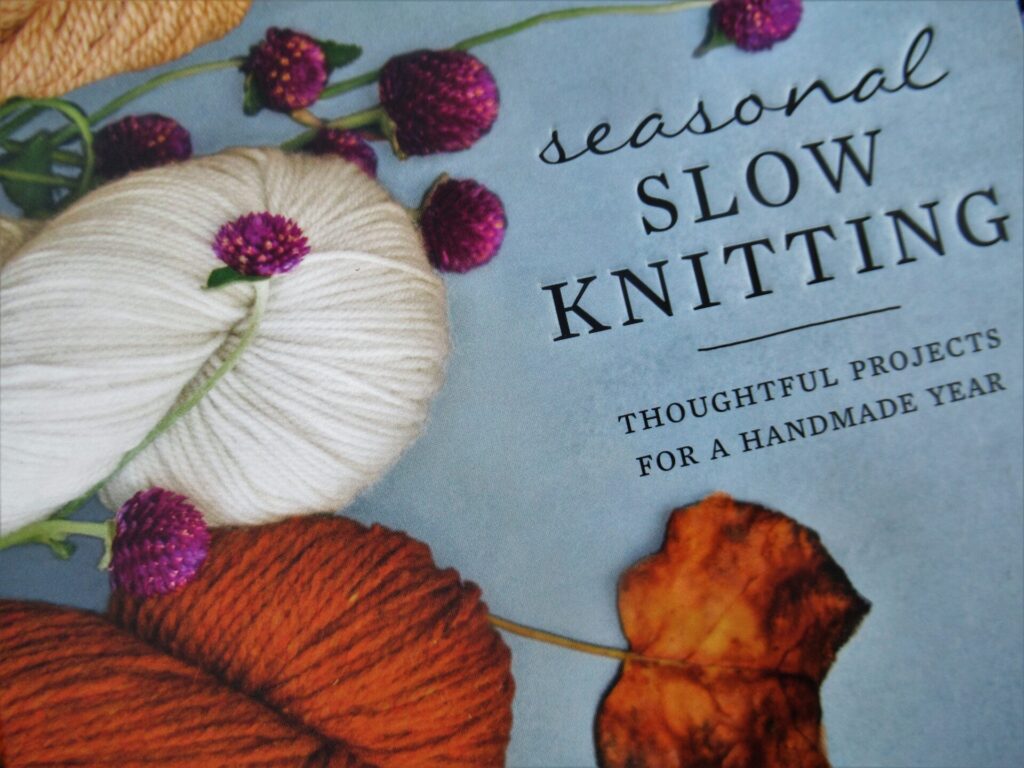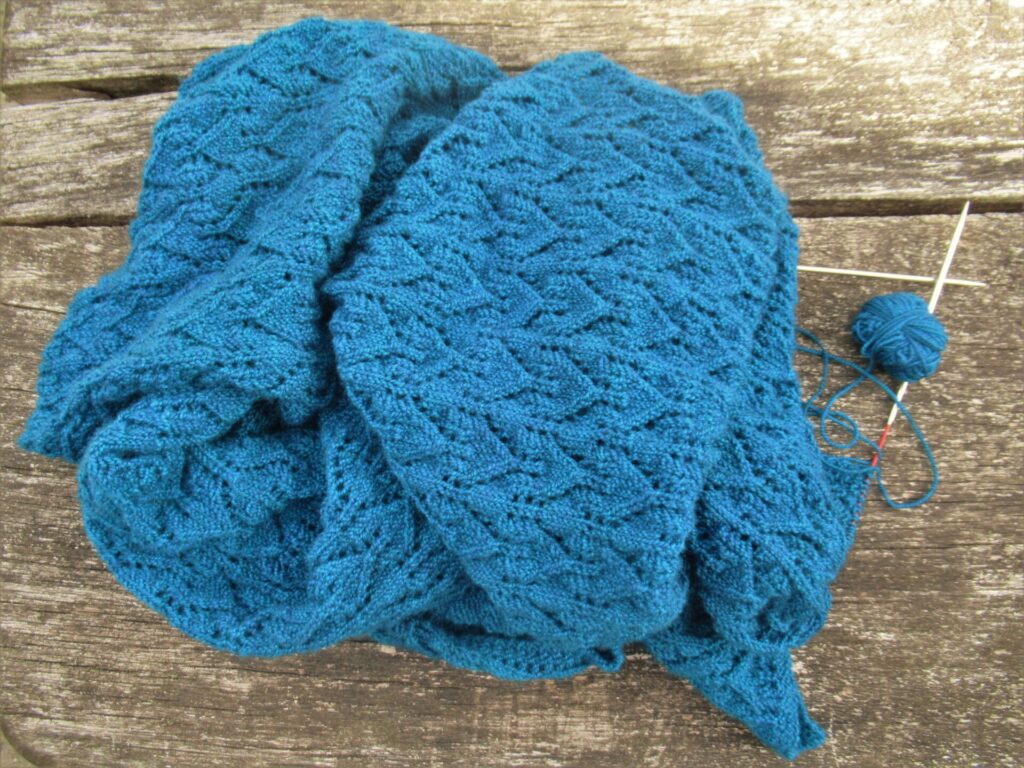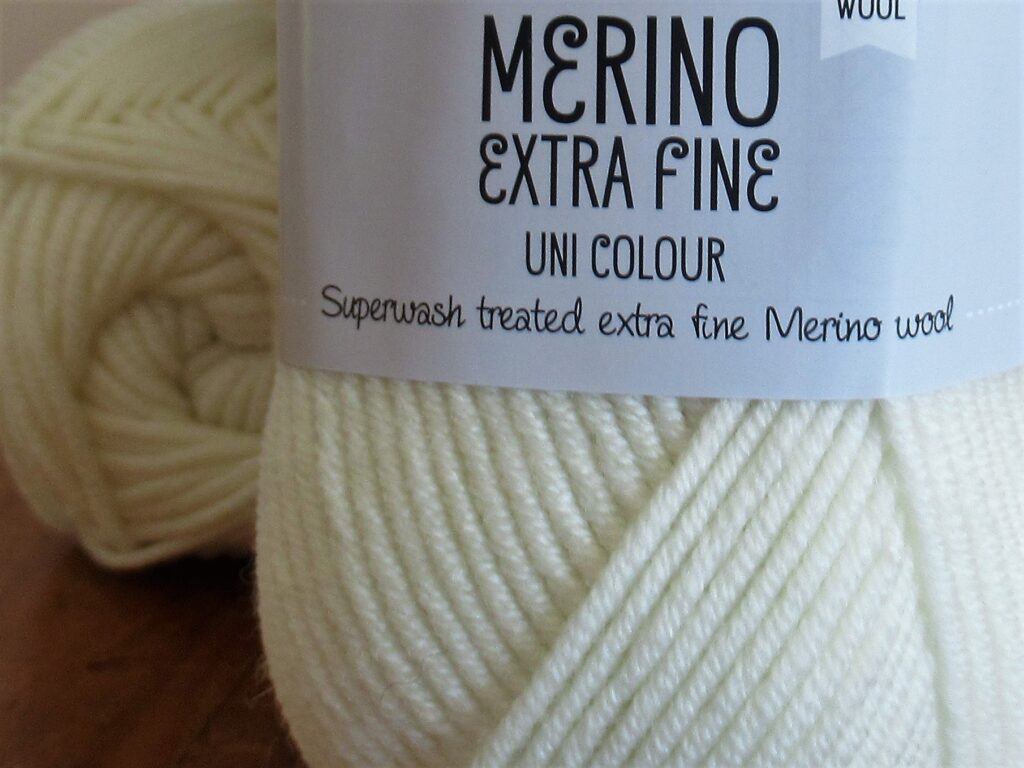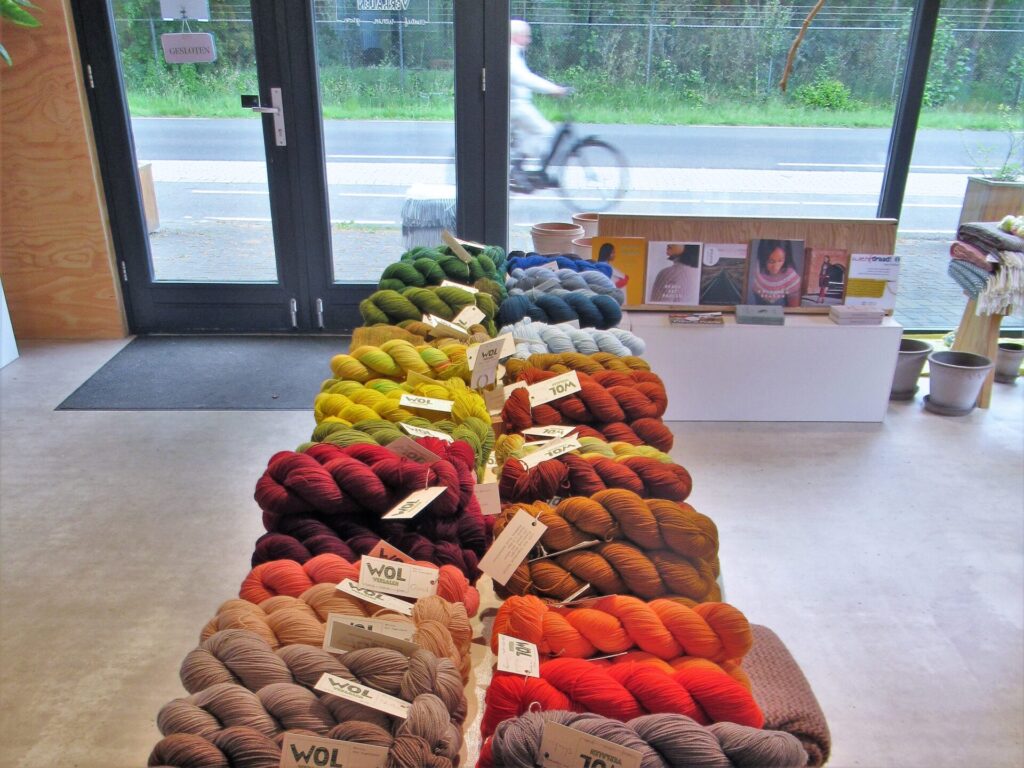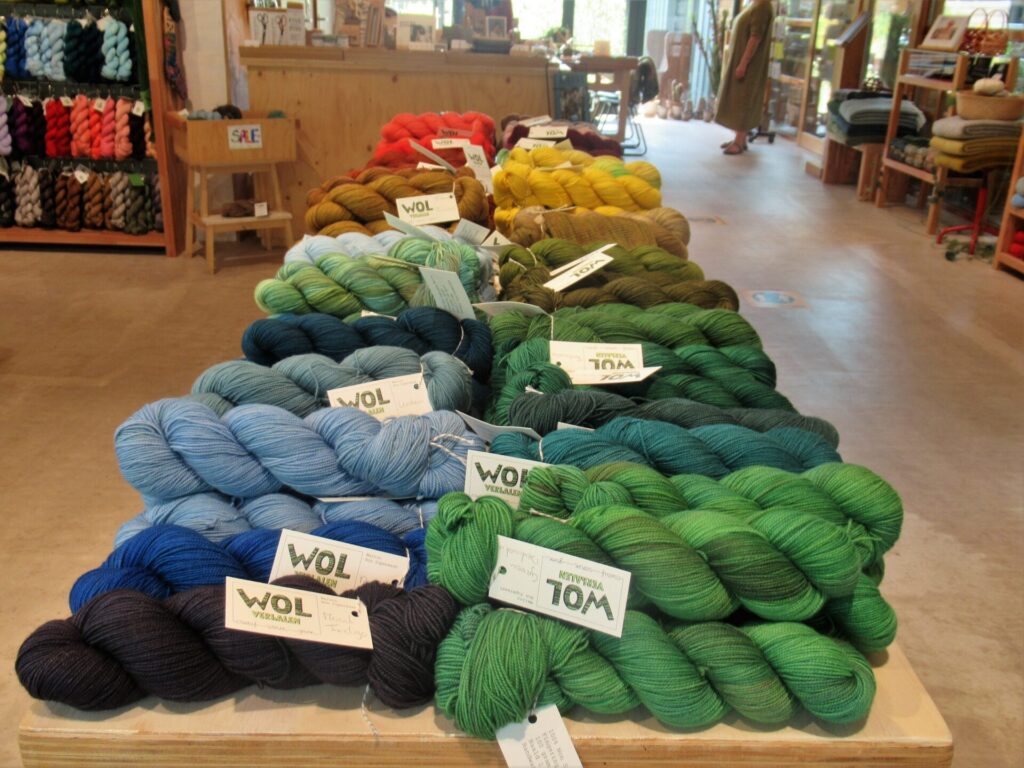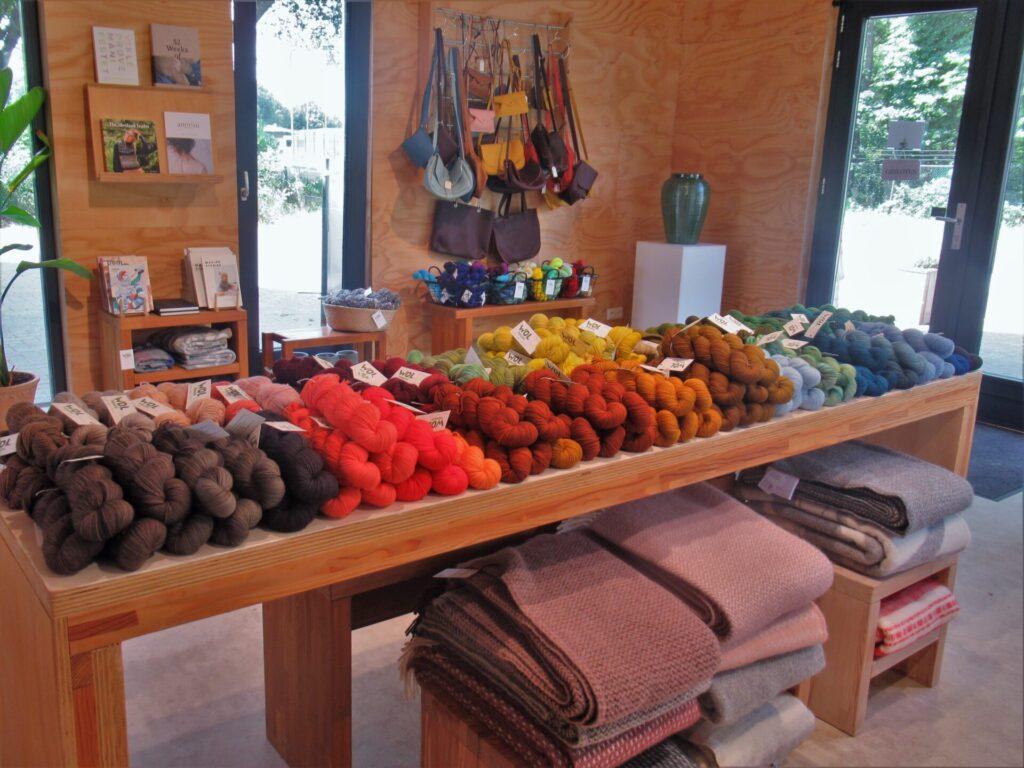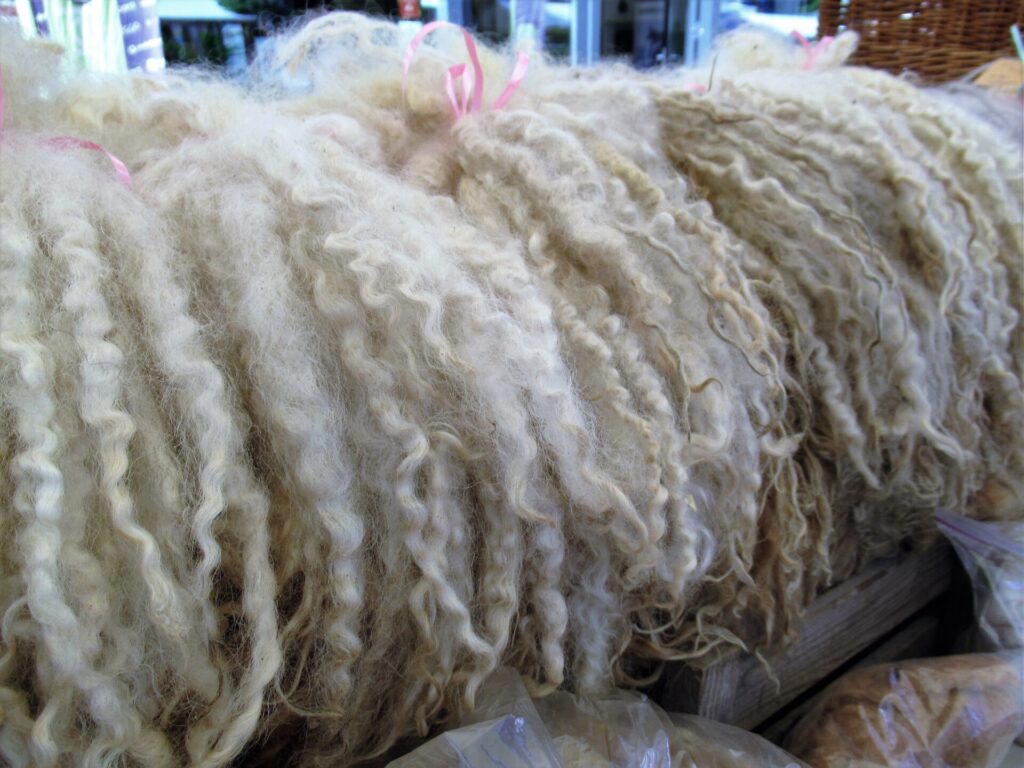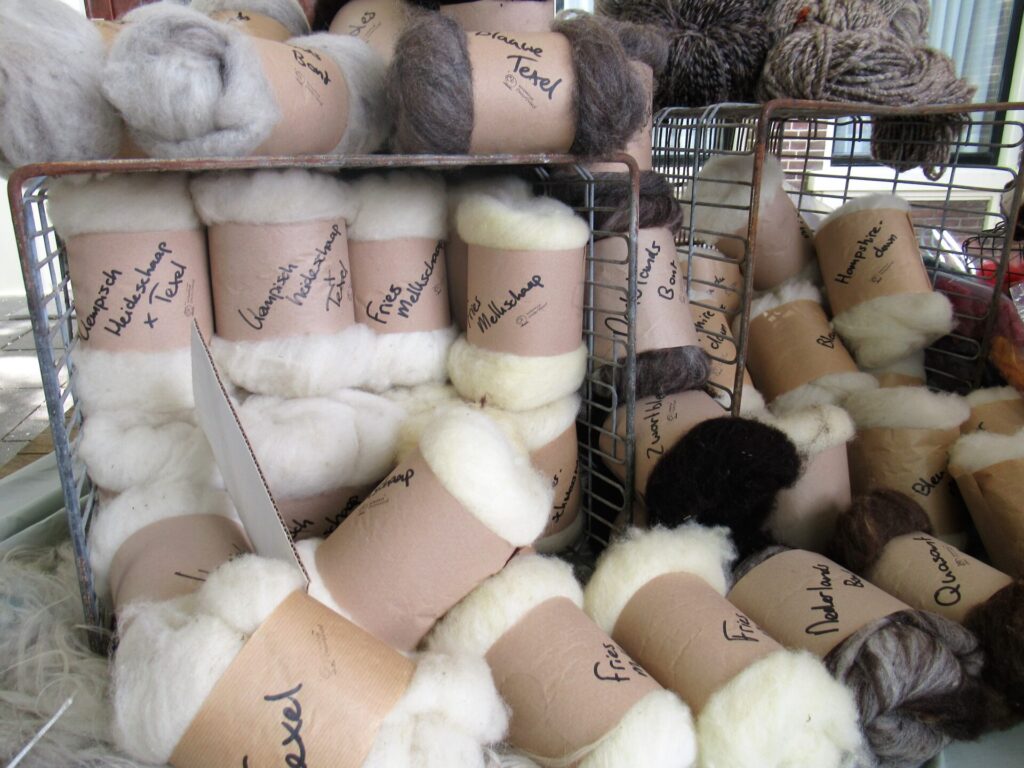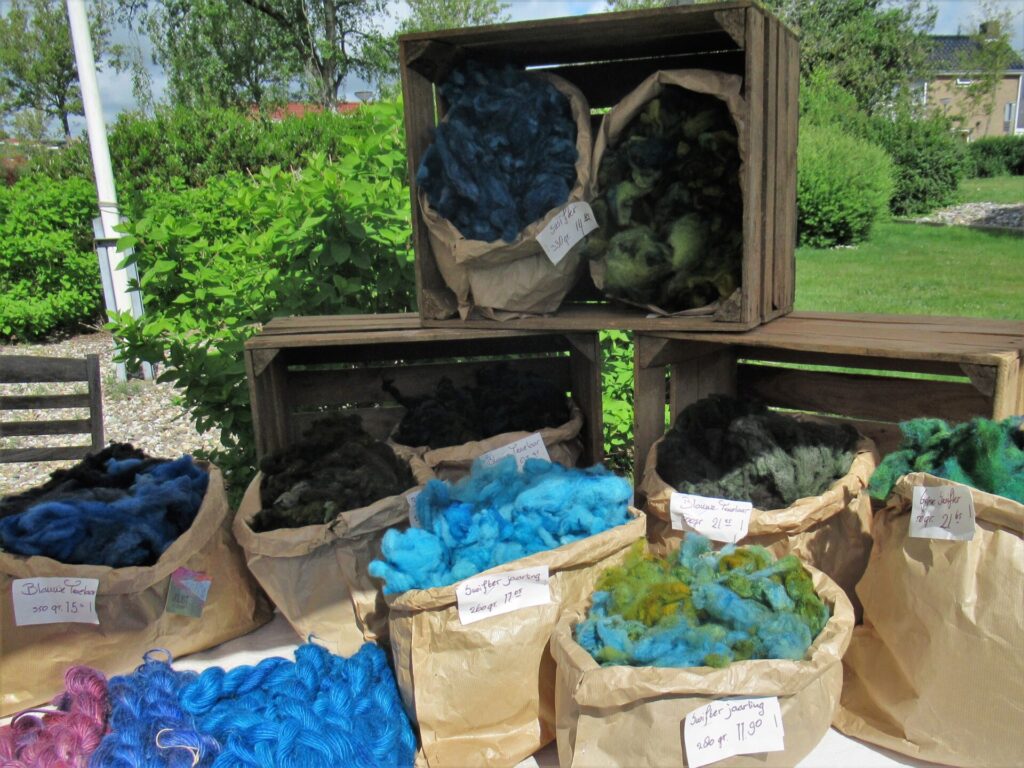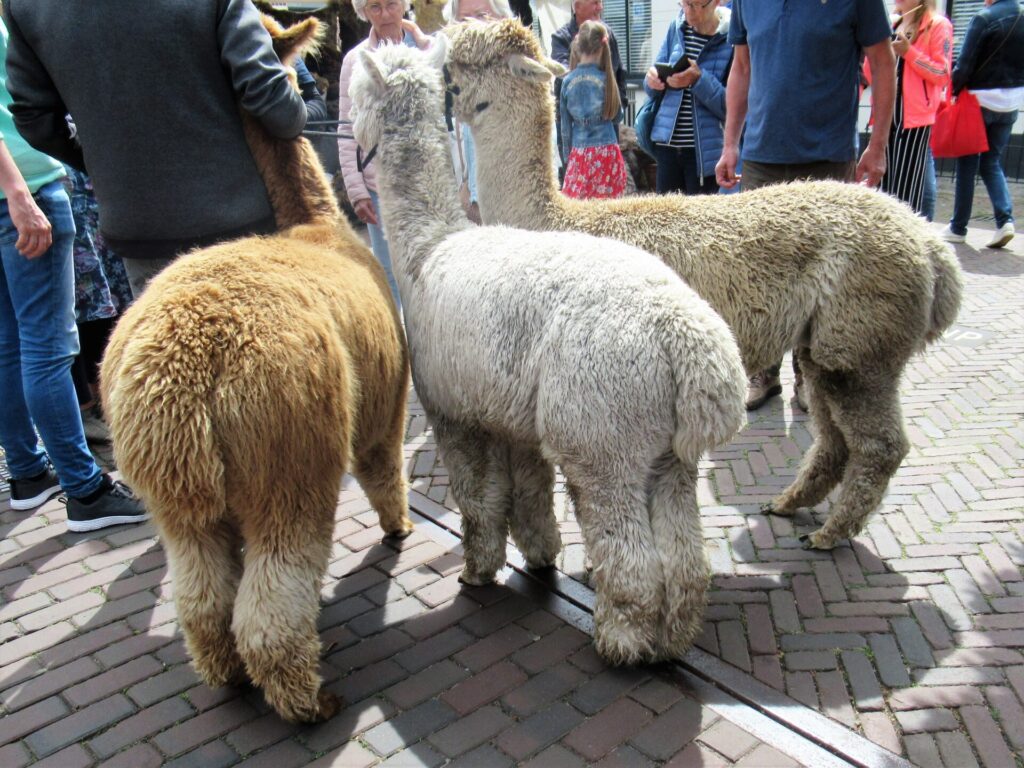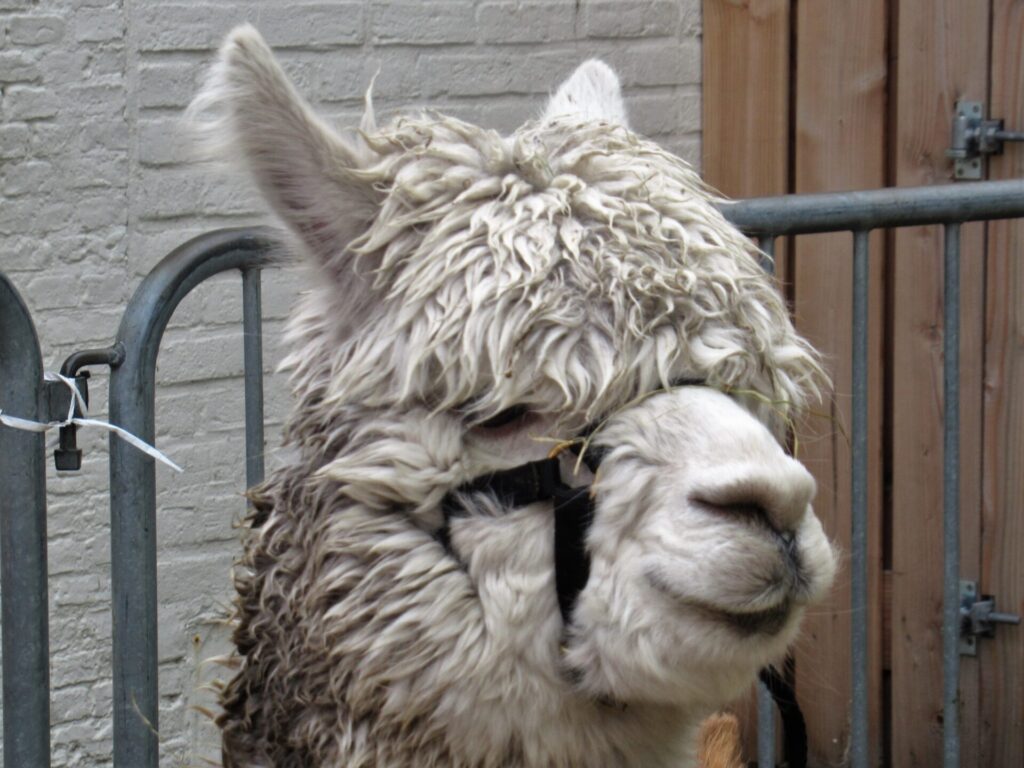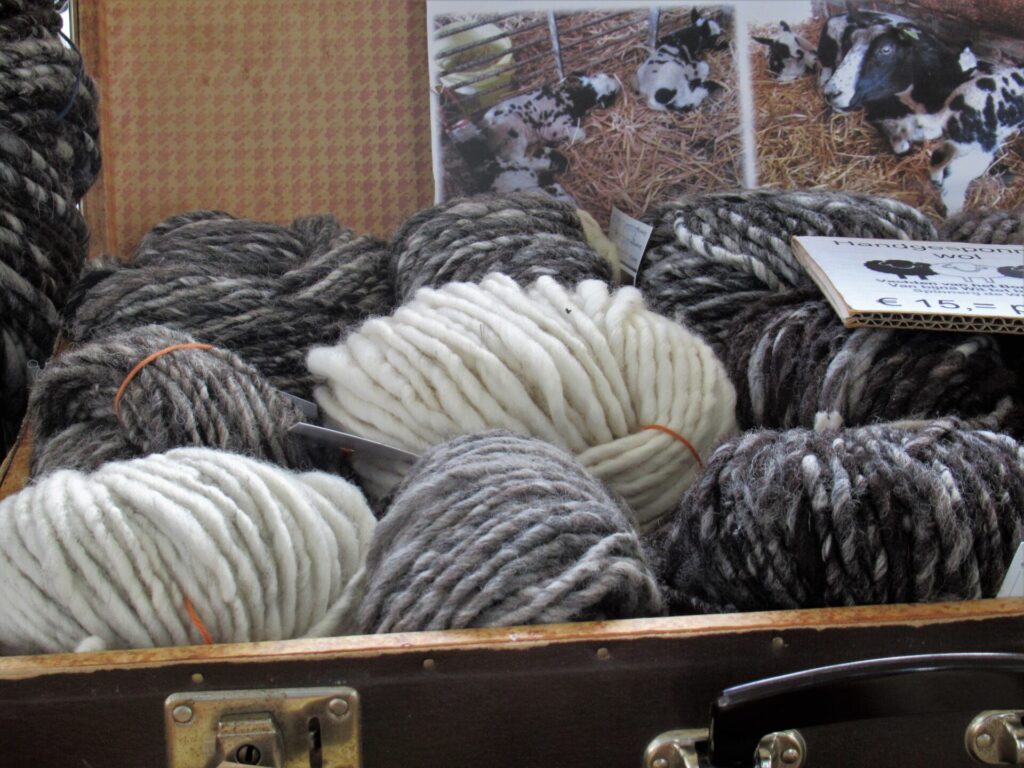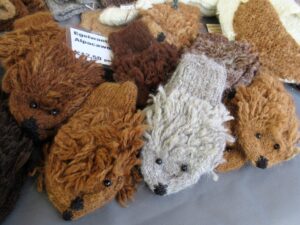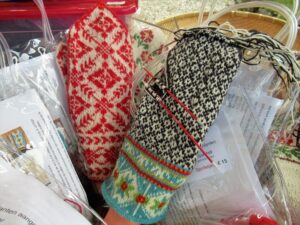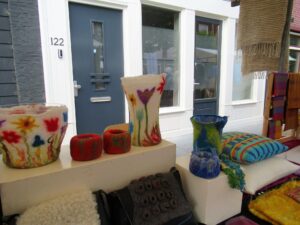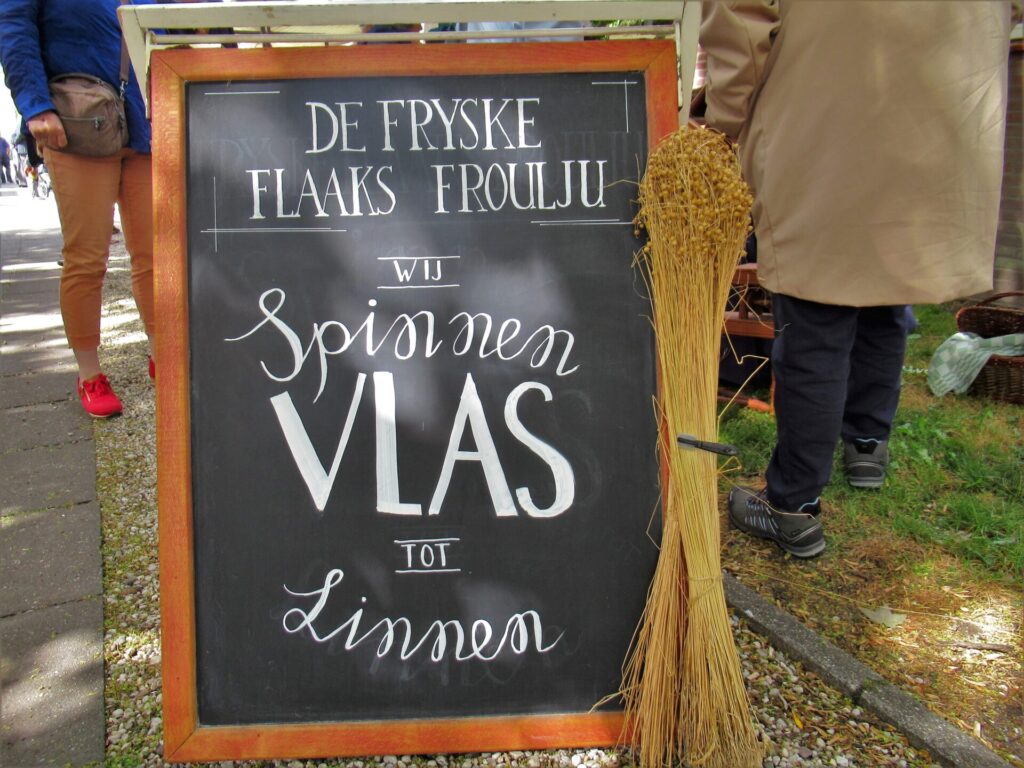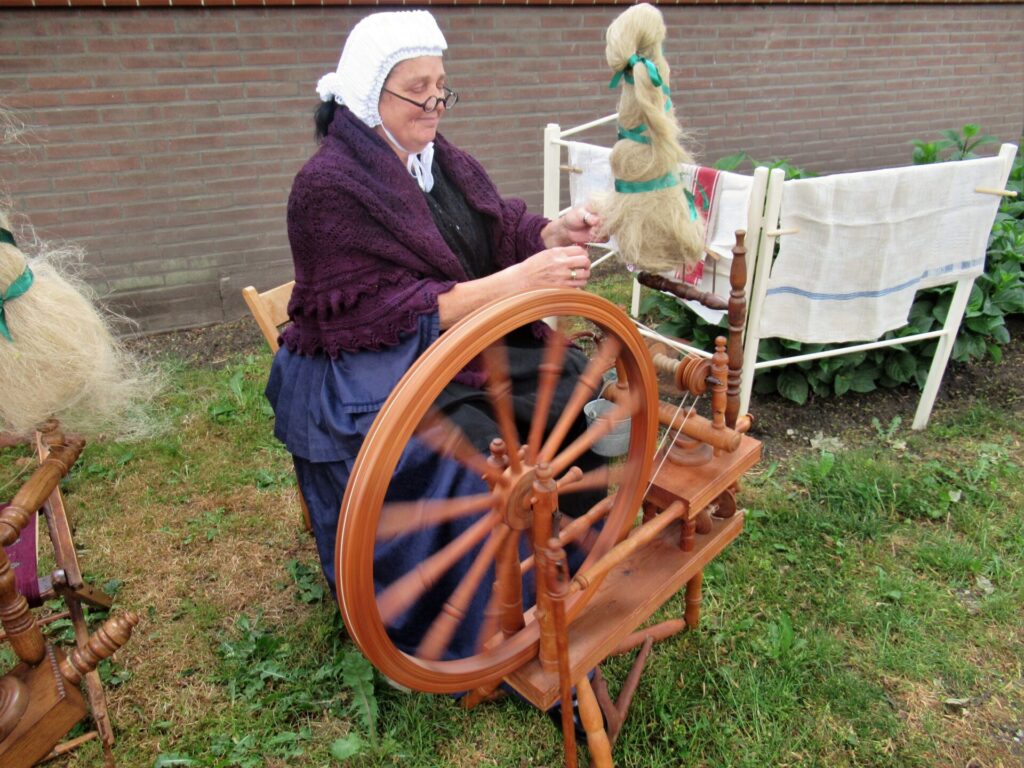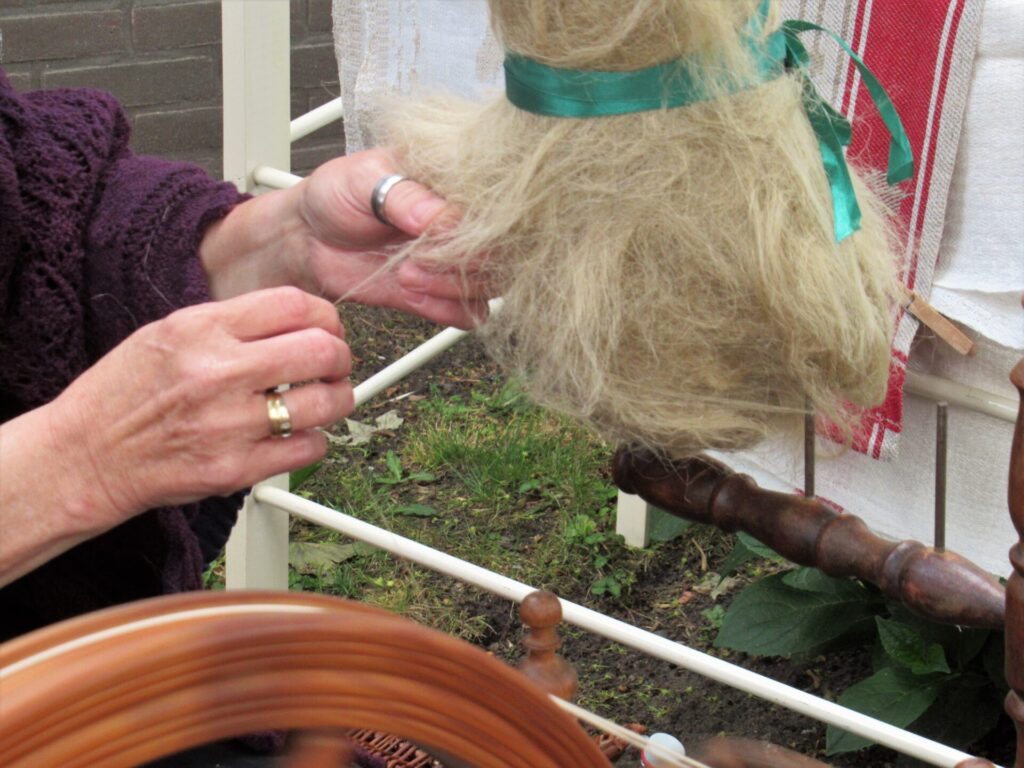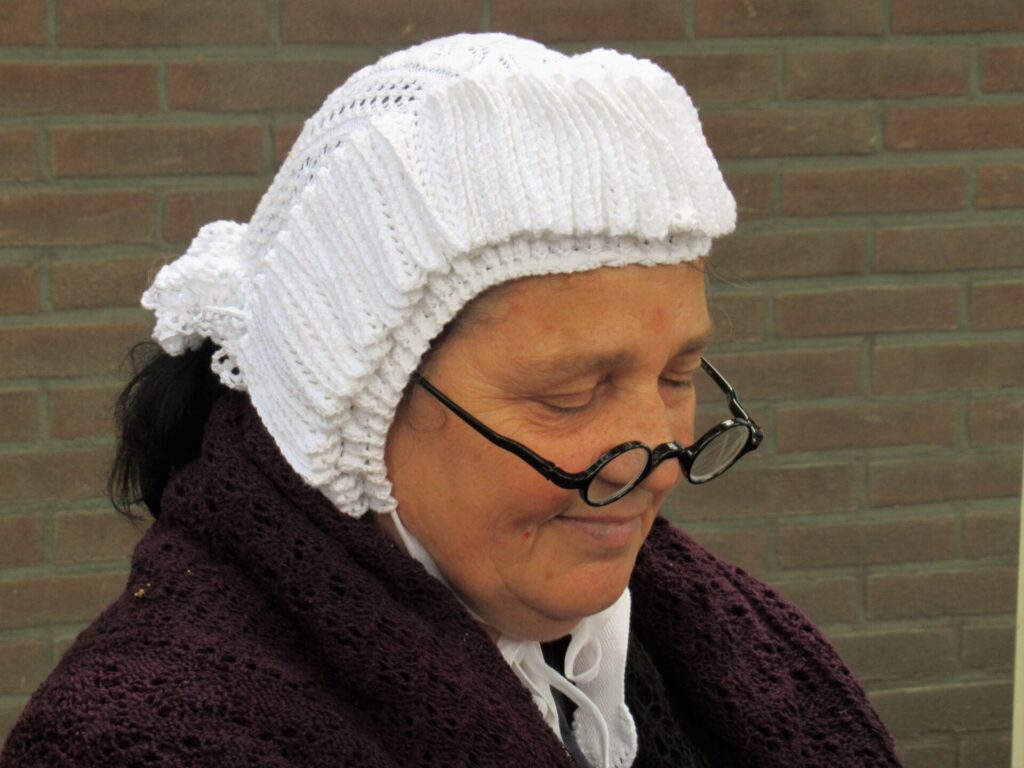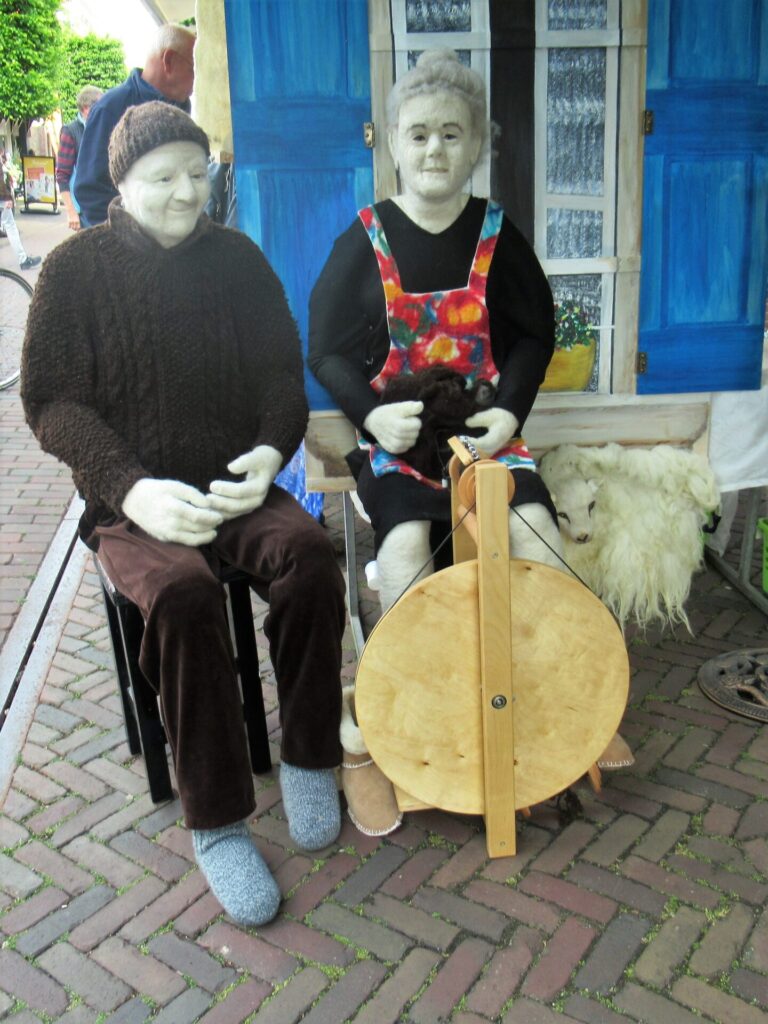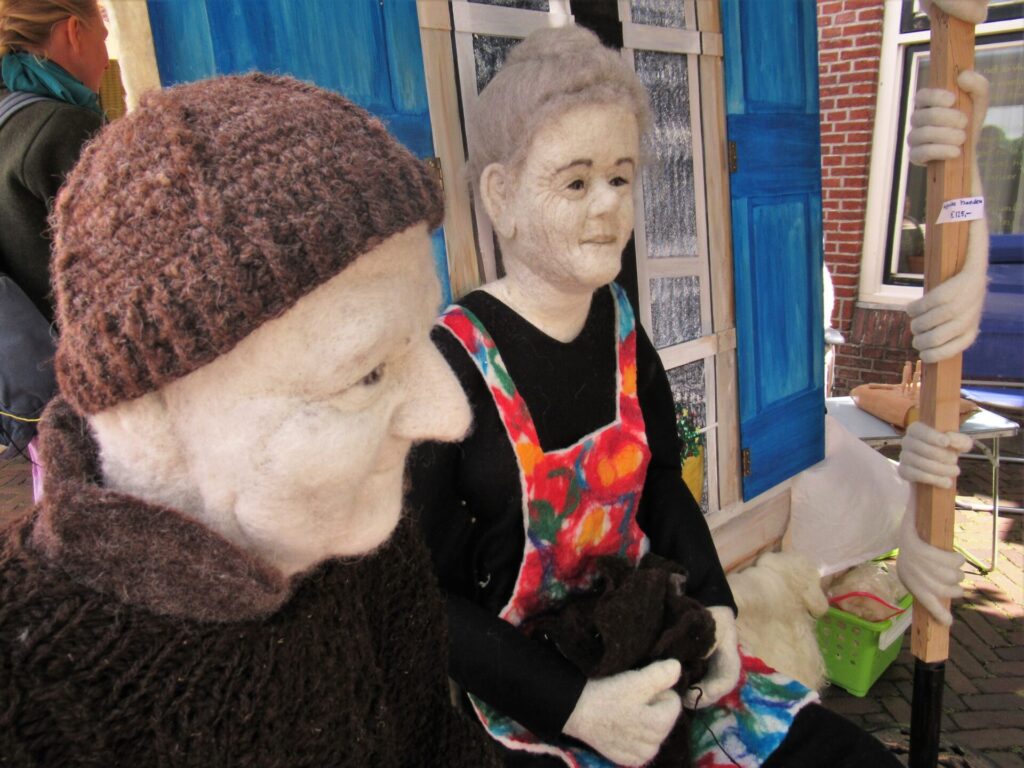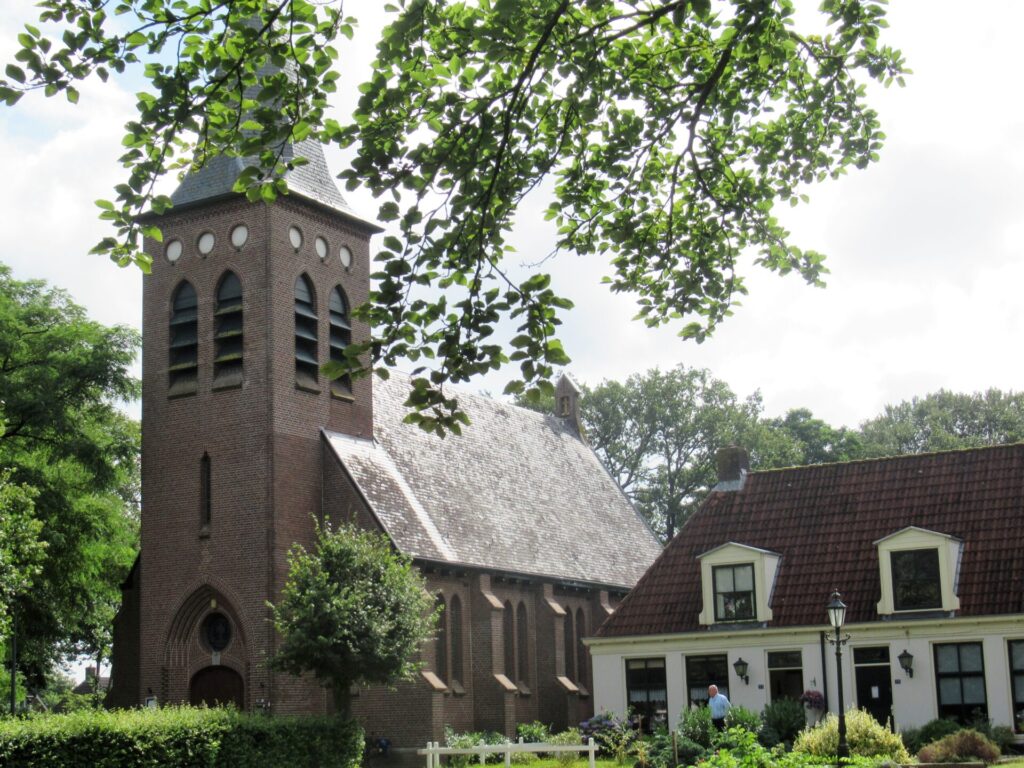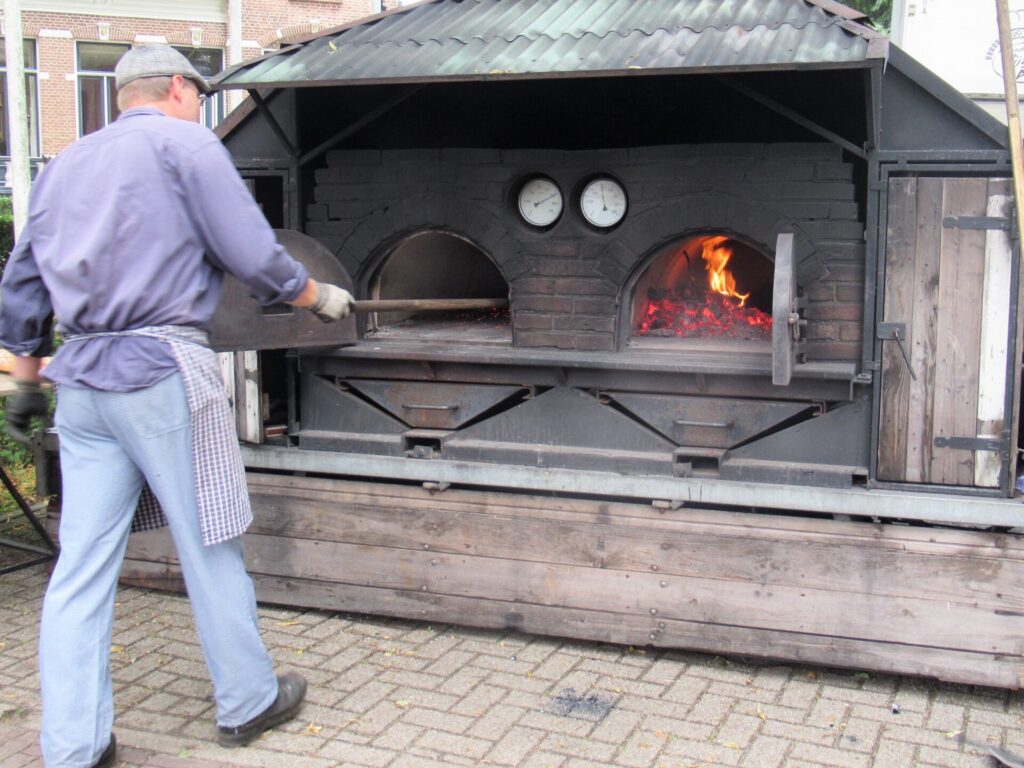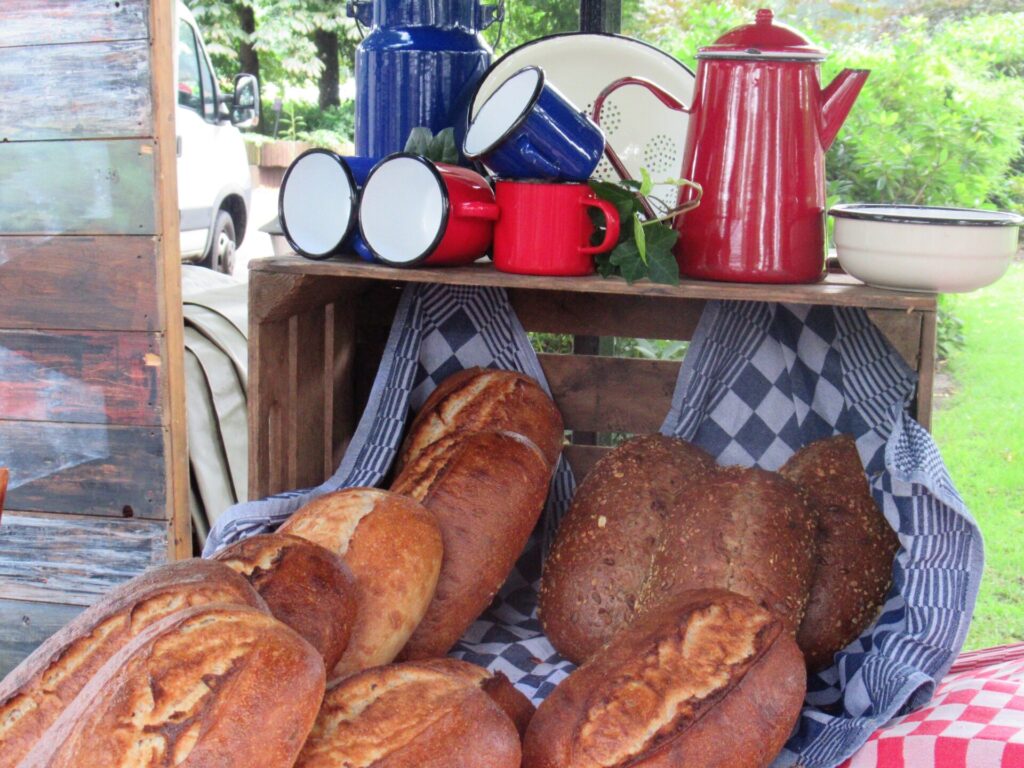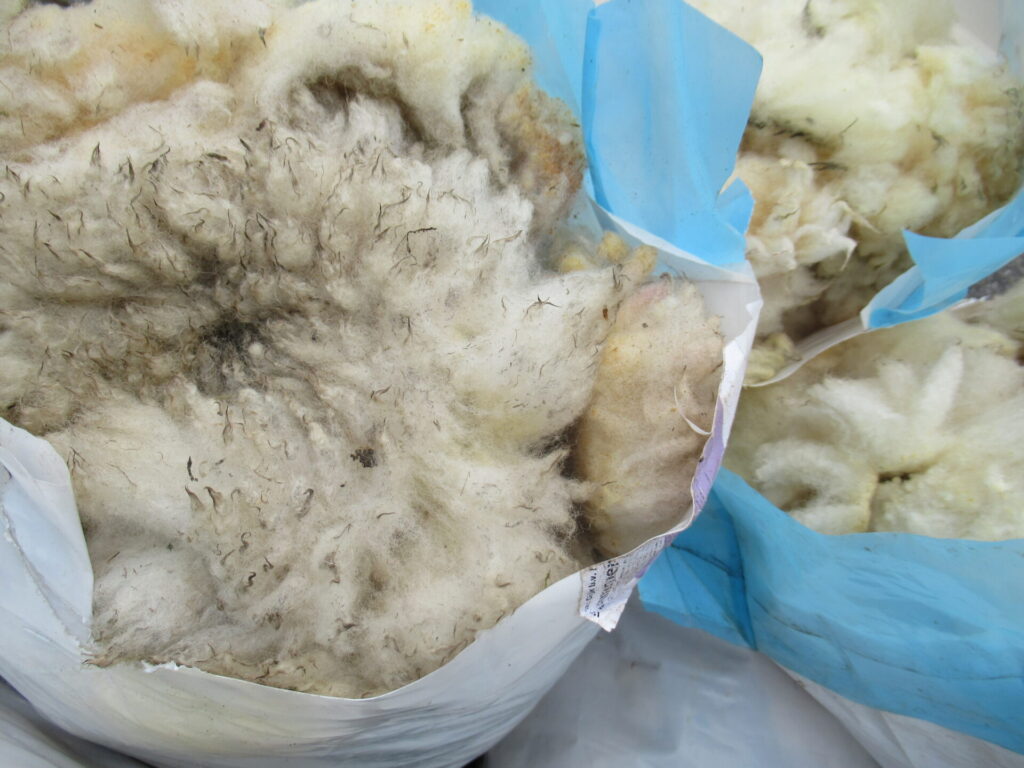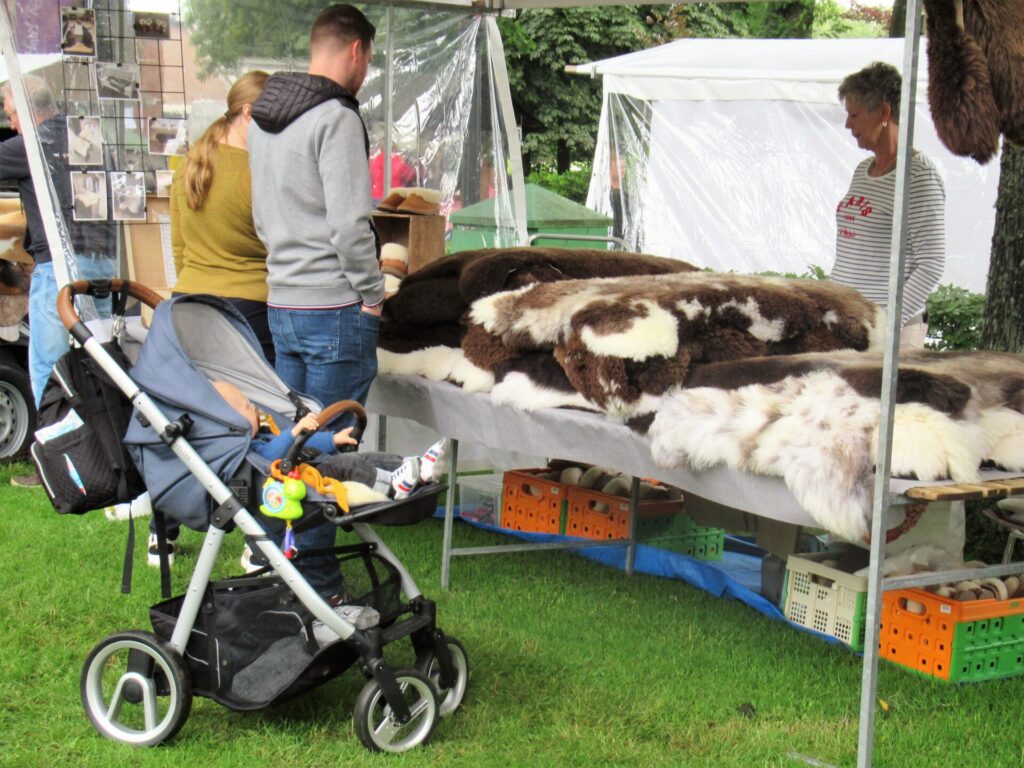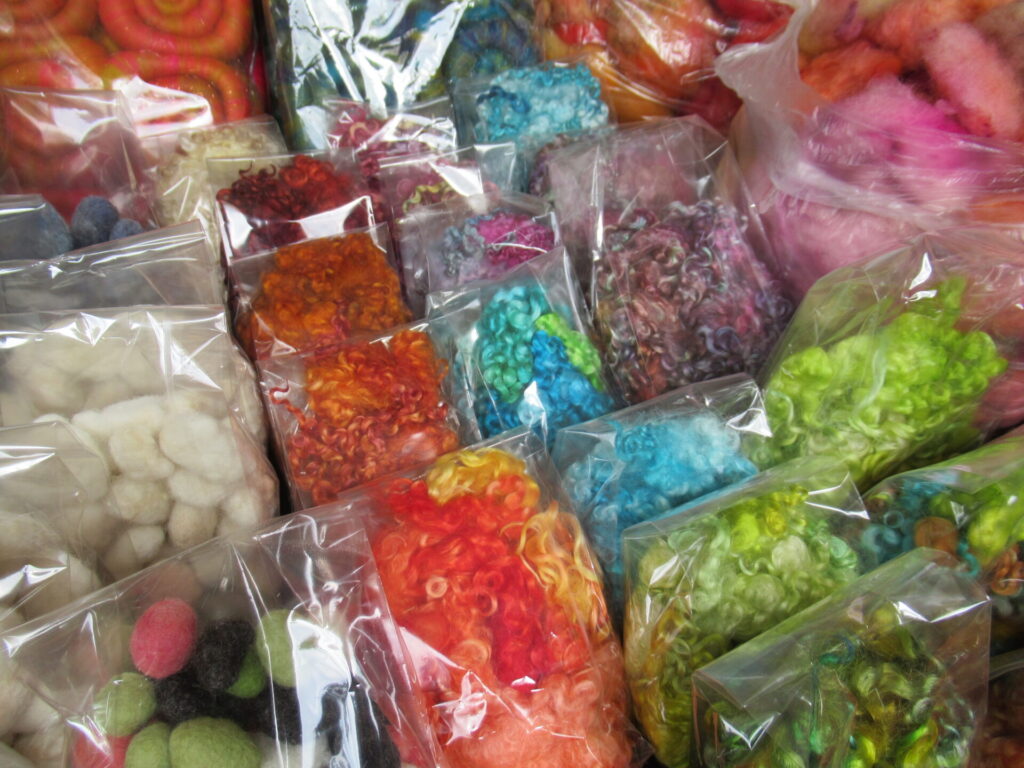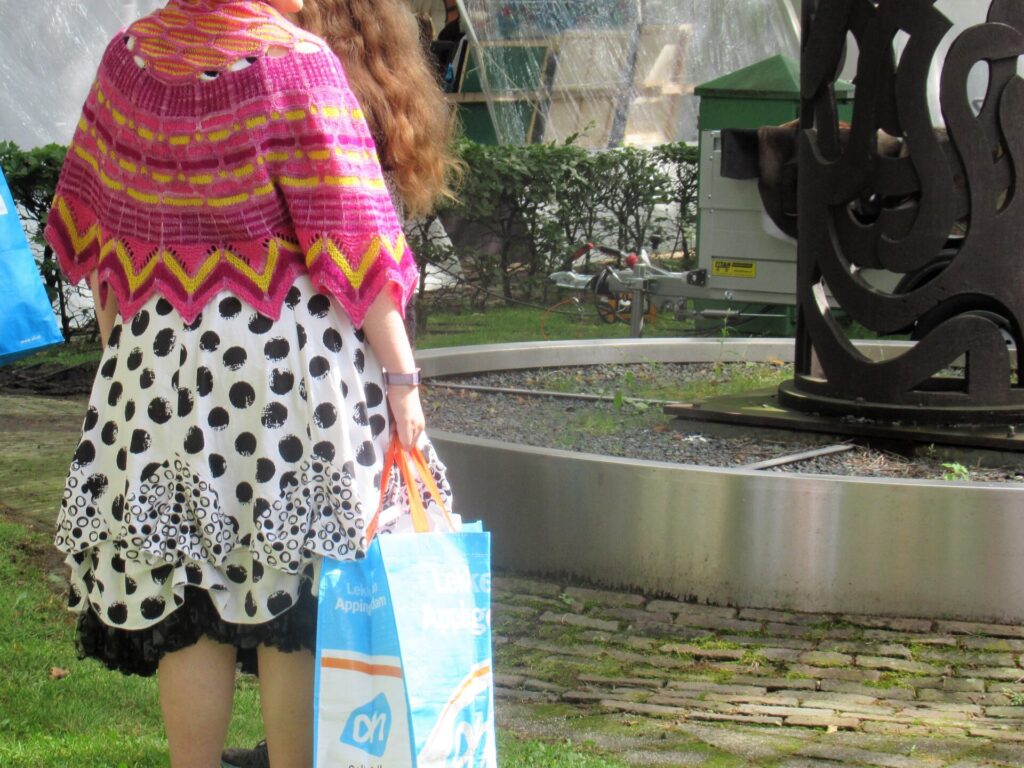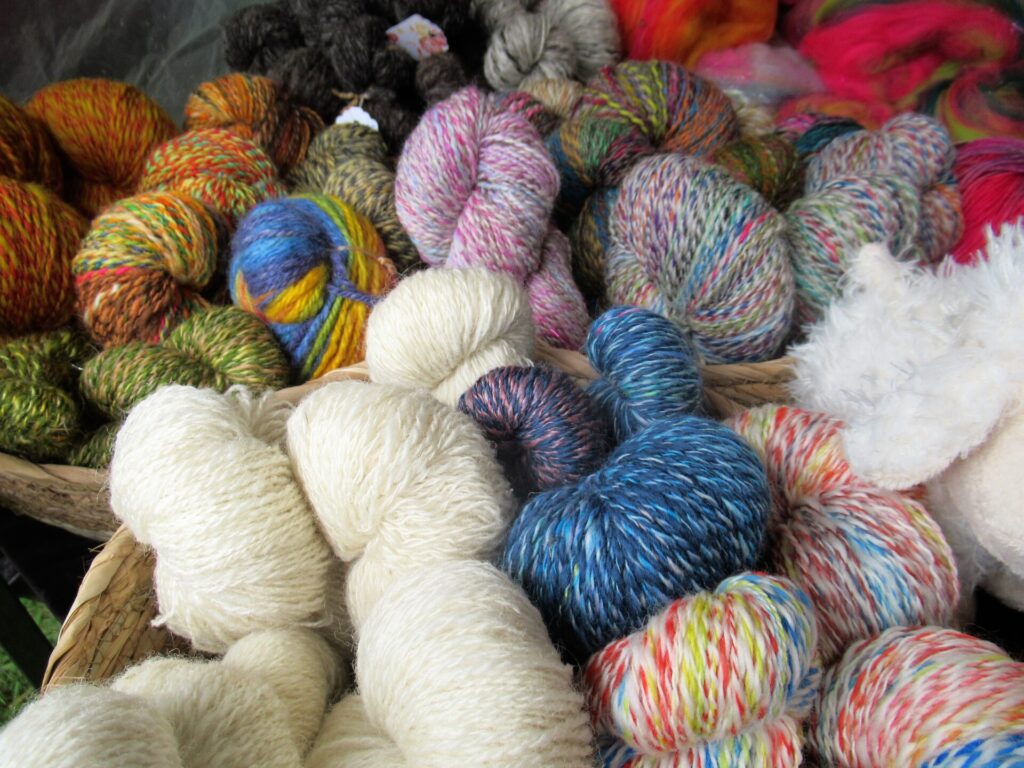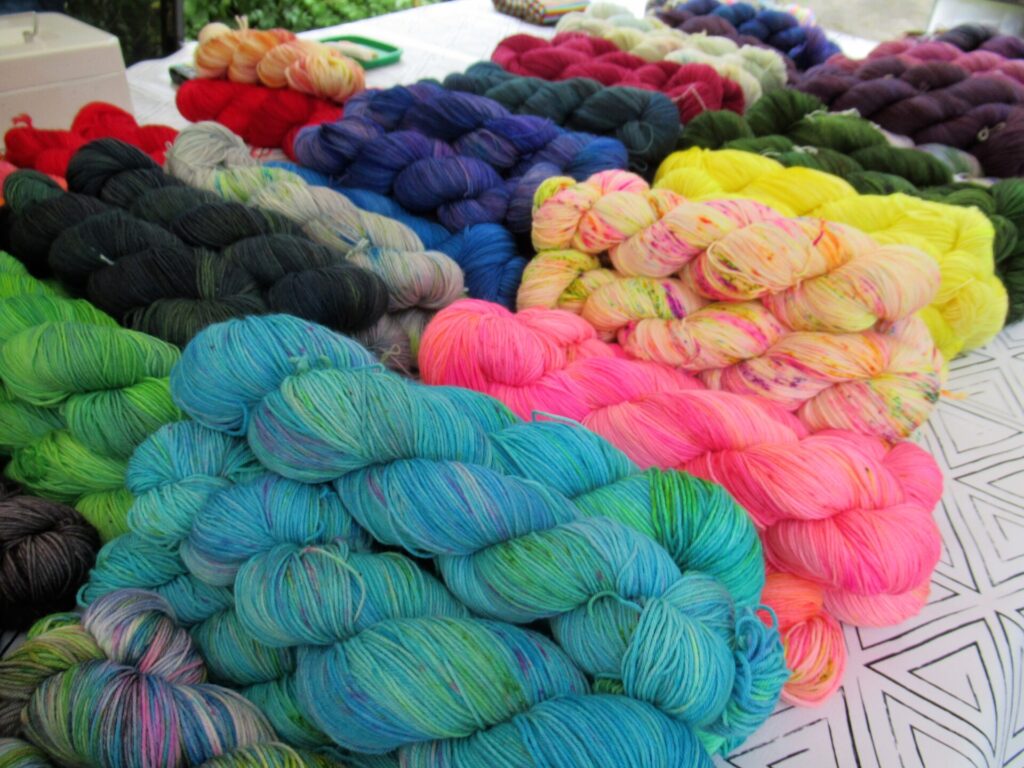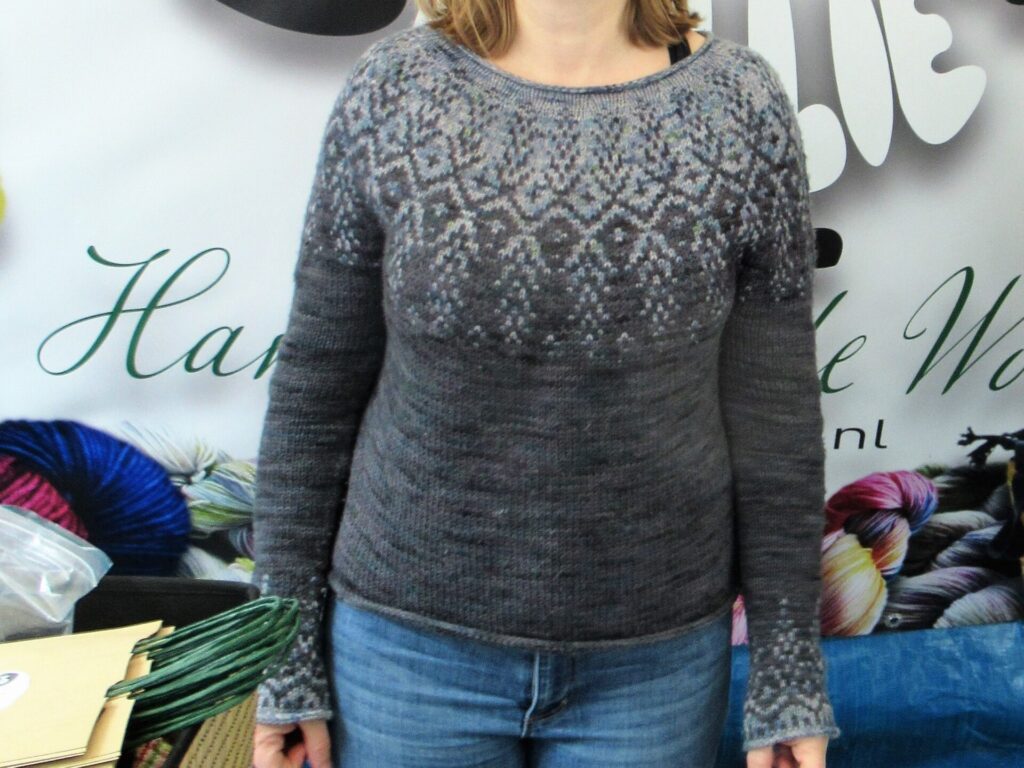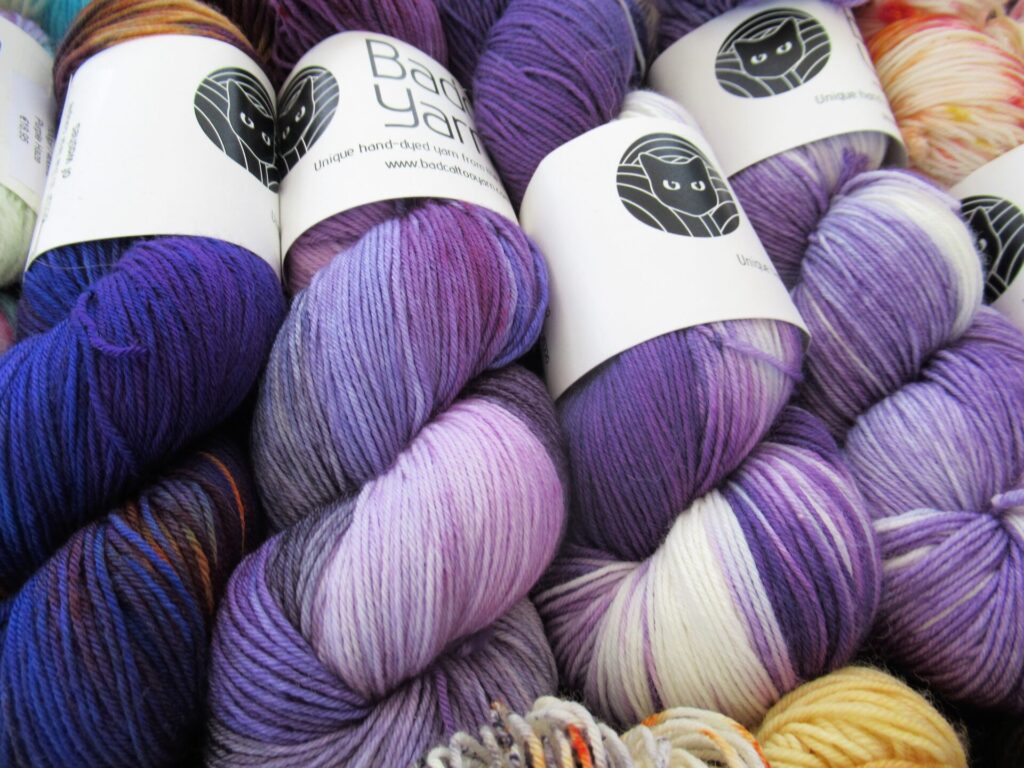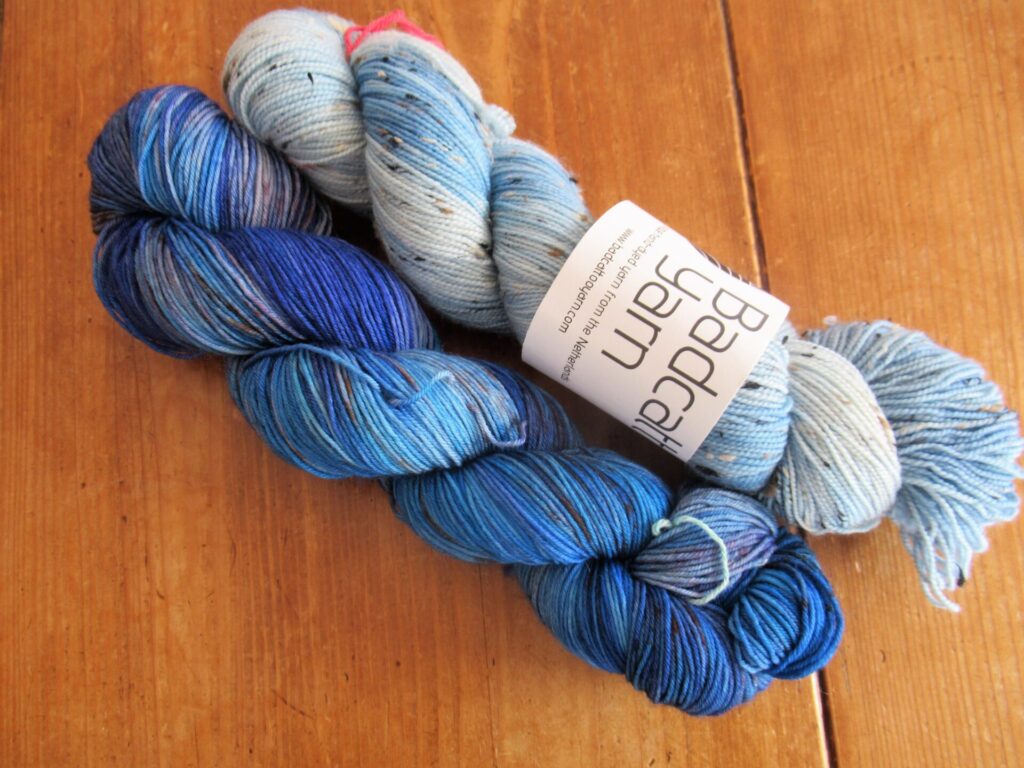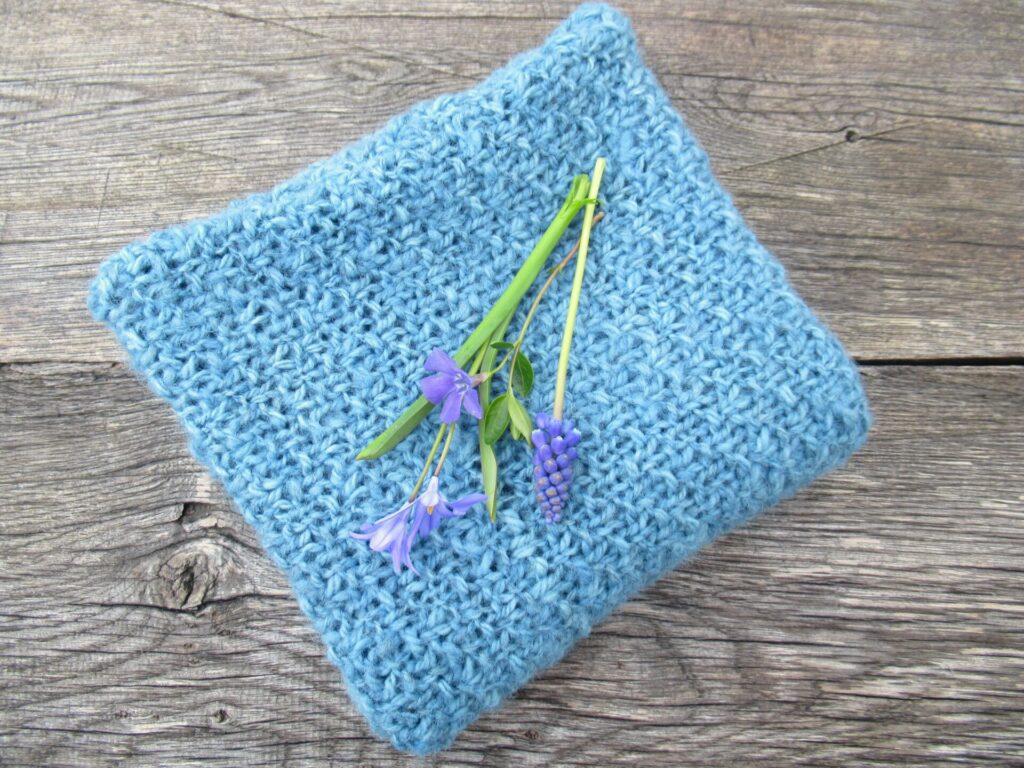
Hello! With my mother-in-law safely installed in her new home (sigh of relief), I have time to write again. So here I am with a story about a cushion cover. That doesn’t sound very interesting, does it? I hope you’ll think differently by the end of the post.
In January, I was given 227 grams of hand-spun and woad-dyed wool yarn with instructions for knitting a cushion cover for a funeral space. Three blue hanks that I wound into cakes.
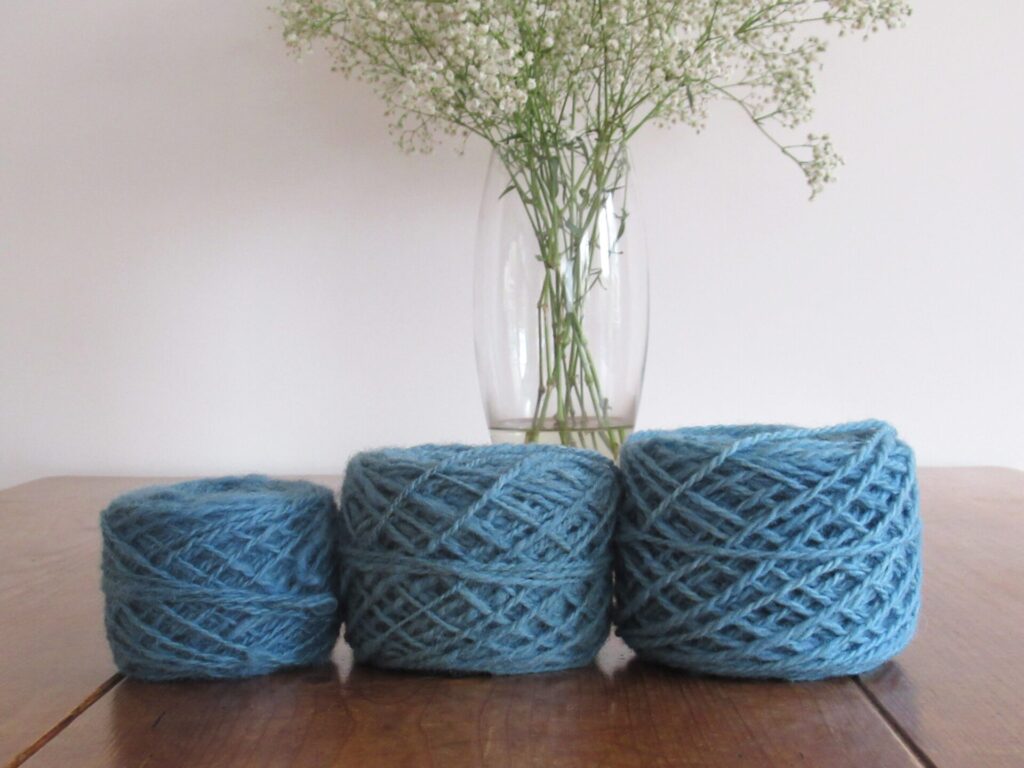
Three very different yarns: one an Aran weight, one a DK and one with very thin and quite thick bits.
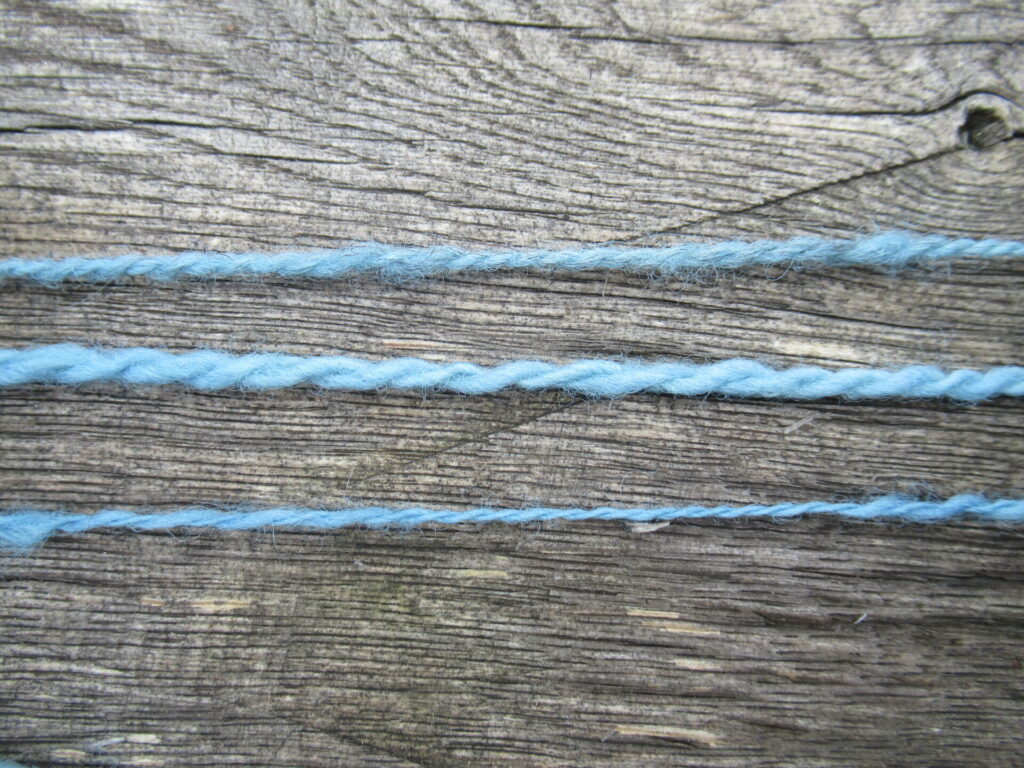
One of the hanks came with a label attached to it. A pretty and interesting label written in Frisian.
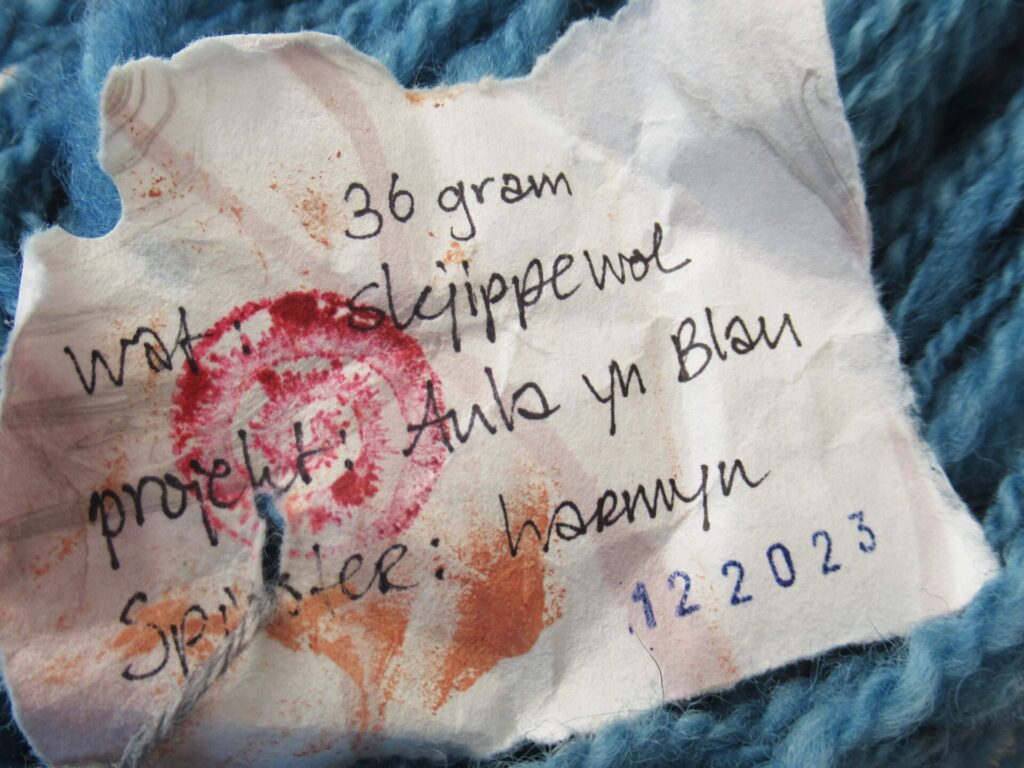
How was I going to knit these three different yarns into an even 45×90 cm rectangle? I decided to alternate them – one row in yarn one, one in yarn two and one in yarn three – adding in a few extra rows now and then of the yarn I had more of.
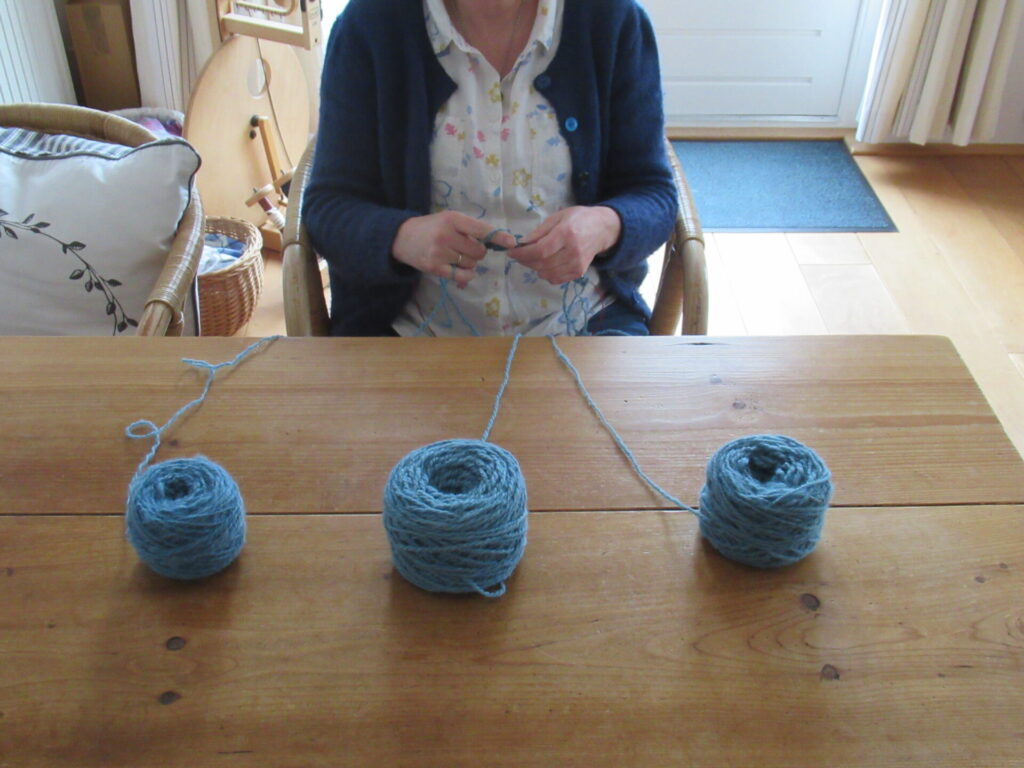
We were instructed to choose from three stitch patterns: seed stitch, double seed stitch and sand stitch. I was afraid I wouldn’t have enough yarn and chose the stitch pattern that would eat up the least – sand stitch: Rows 1 & 3: knit; row 2: k1, p1; row 4: p1, k1.
The yarn wasn’t very soft or pleasant to knit with, and my hands coloured blue. To get it done anyway, I knit while watching DCI Barnaby solve murders in Midsomer. One day, looking at what I had knit the day before I saw oooops – a mistake!
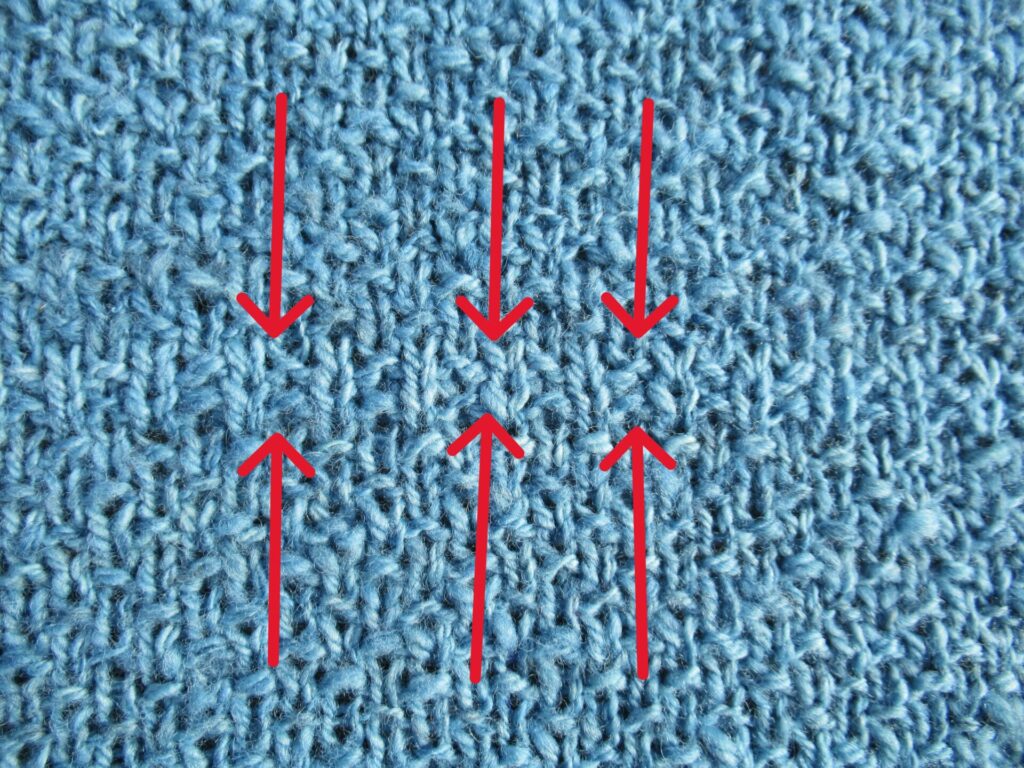
What to do? Rip it out, or……………………………………?
I decided to leave it in, thinking of the artists and craftspeople in some cultures deliberately introducing errors in their work as a reminder that we humans are imperfect. It somehow seemed fitting for a funeral space.
A long time ago, I took a mandala embroidery course. Starting in the centre, we improvised without patterns. We did not deliberately introduce errors, but if we made a mistake, we were told to leave it in and even repeat it and let the rest of the design be guided by it. The idea was to learn to embrace our imperfections.
This was my first mandala, with flowers, butterflies and birds. It was fun to see it grow.
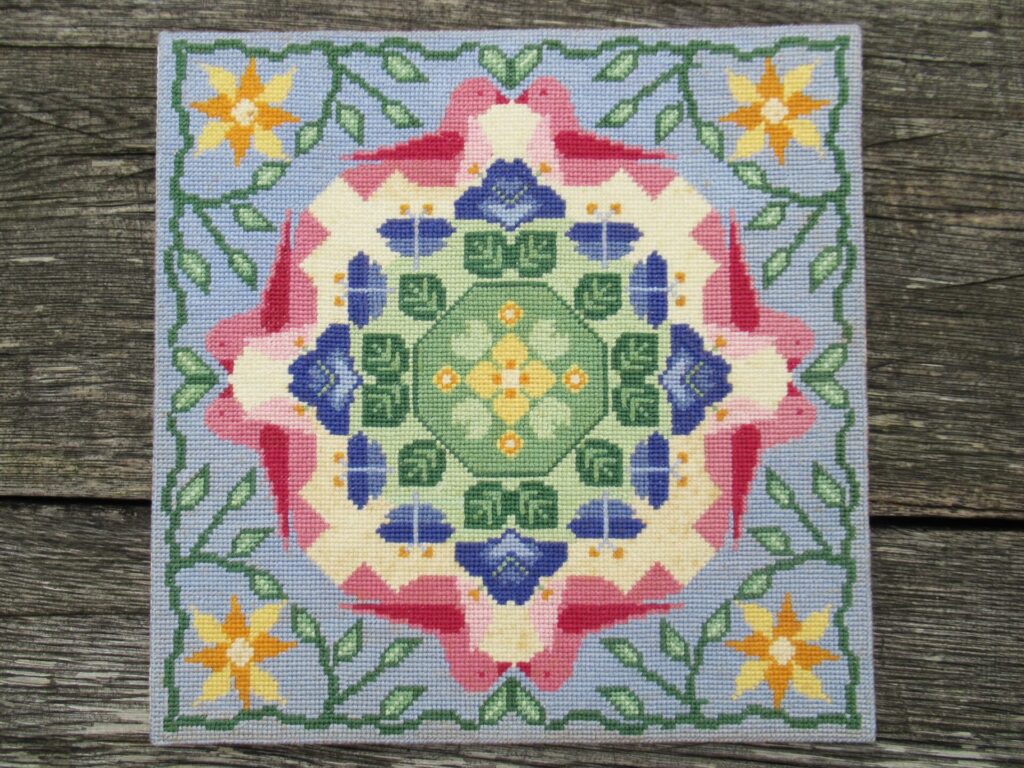
This more abstract one with gold thread accents was my second.
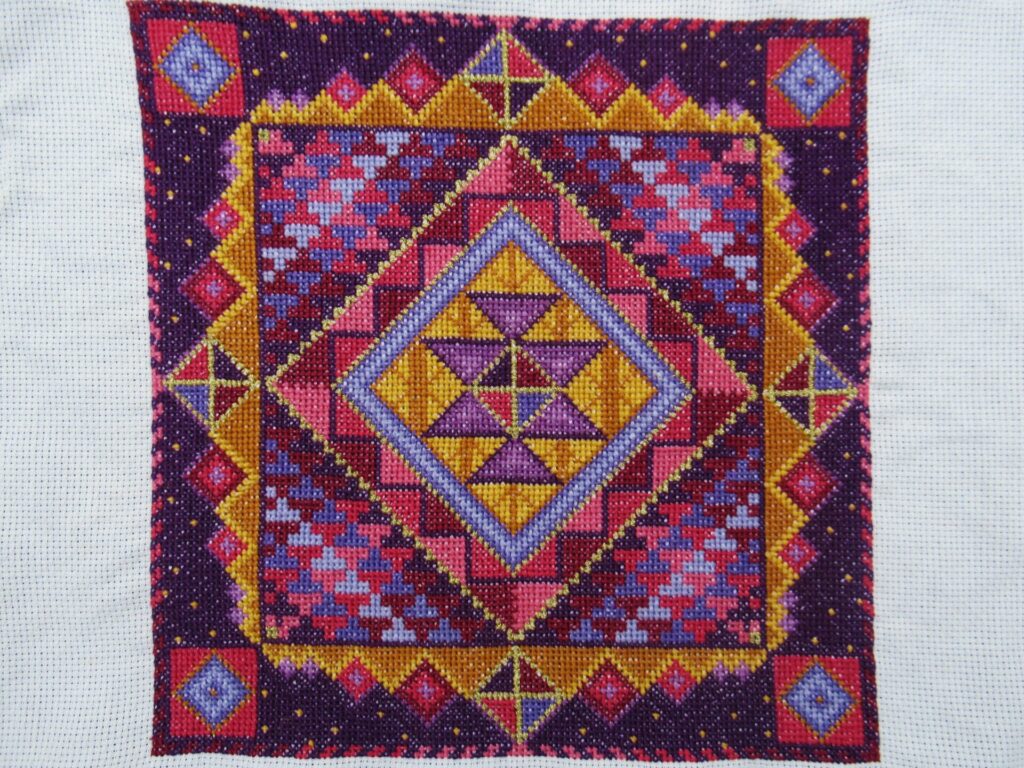
And finally I made one with water lilies and jumping fish.
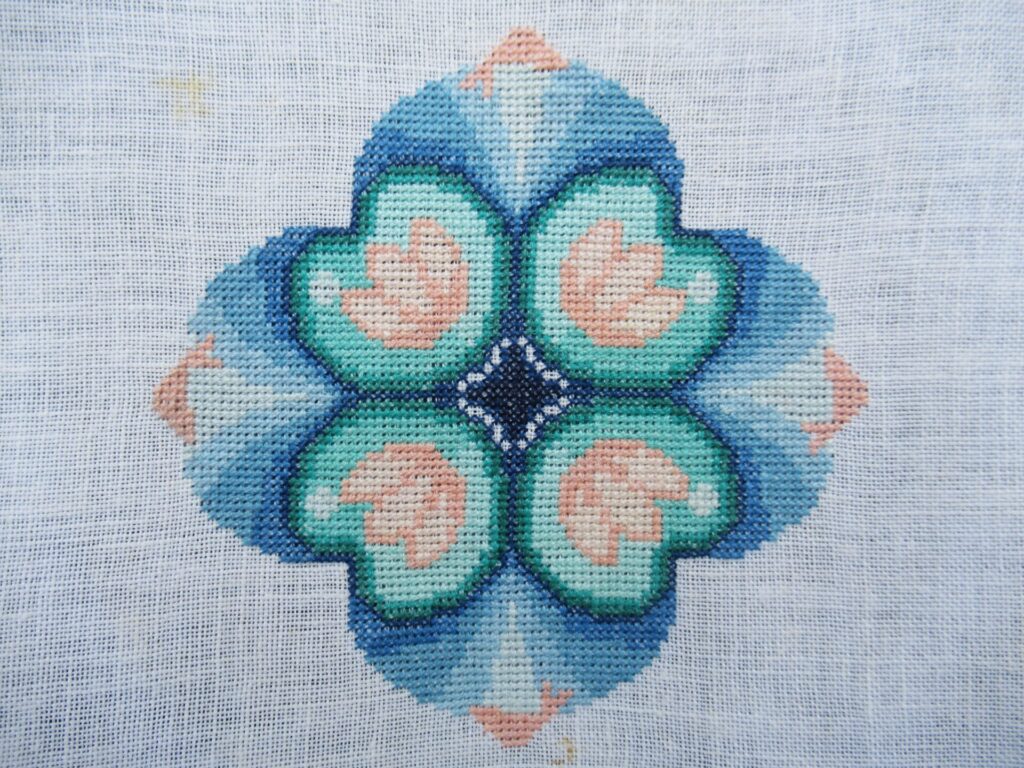
I don’t remember where I made mistakes and can’t see them now. Also, I’m still a perfectionist, but maybe the mandala course has made me a tiny bit less so.
The mandalas have spent the past 25 years or so in a box and I’d almost forgotten about them. What am I going to do with them? Put them back in their box? Or use them in some way? From top to bottom they are around 30×30, 20×20 and 10×10 centimetres (12×12, 8×8 and 4×4 inches). Ideas welcome!
Back to the cushion cover. I had enough yarn (phew!) and have handed the finished cover over to a friend in the organization. I can’t wait to see how the space will look with my imperfect cushion, the other 59 cushions and the rest of the blue woolly elements. I hope to be able to show you by the end of May.
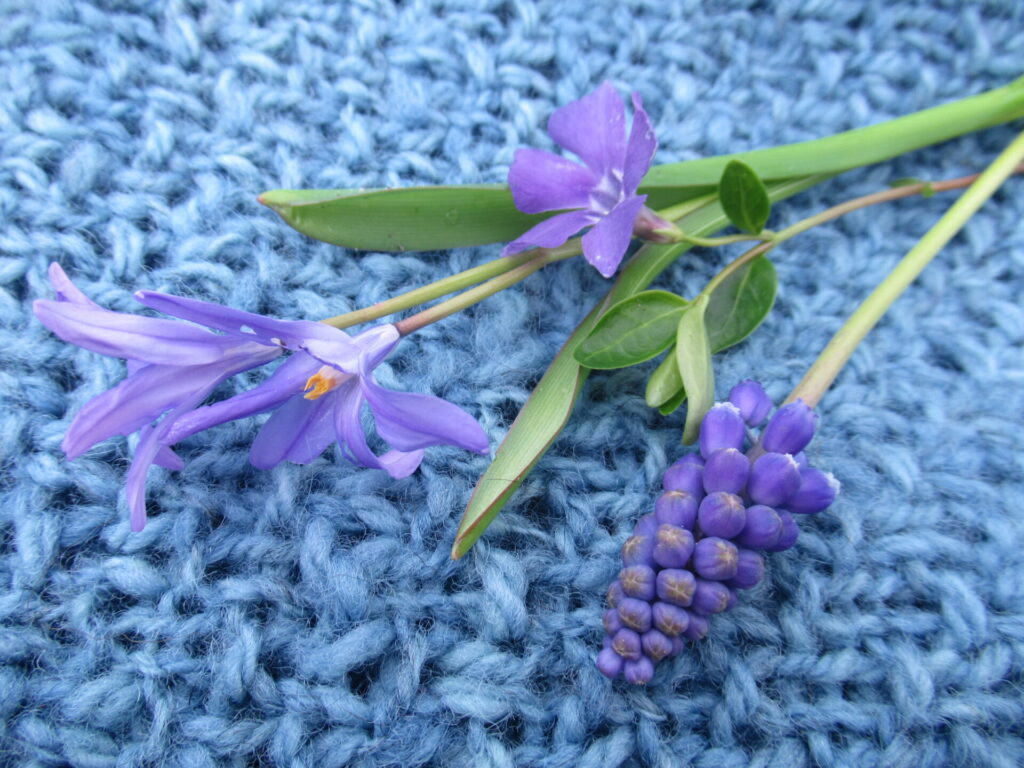
For the photographs I picked a few flowers from the garden that I thought of as blue. Compared to the blue produced by woad, they look purple.
After rinsing the cushion cover in water with vinegar and then washing it in Eucalan the knitted fabric softened up quite a bit. It retained its peculiar musty smell, though. That’s what your new blue woollen dress or jerkin would have smelled like in previous centuries. Interesting!
Thank you for reading and I hope to see you again next week! xxx
